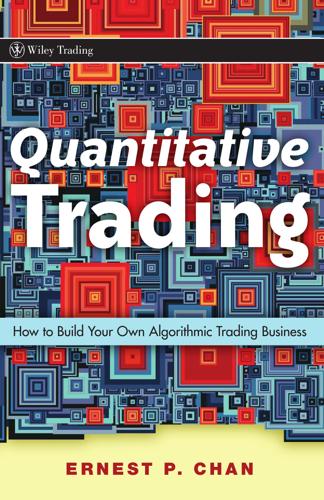
Quantitative Trading: How to Build Your Own Algorithmic Trading Business
by
Ernie Chan
Published 17 Nov 2008
Low cost. Source of Yahoo! and Google’s historical data. Software enables download of multiple symbols. Low cost. Split/dividend adjusted. Software enables download of multiple symbols. Fundamental data available. Survivorship bias free. Has survivorship bias. Can download only one symbol at a time. Has survivorship bias. Split but not dividend adjusted. Has survivorship bias. Has survivorship bias. Expensive. Updated only once a month. Daily Futures Data Quotes-plus.com CSIdata.com Oanda.com Low cost. Software enables download of multiple symbols. (See above.) Daily Forex Data Free. Intraday Stock Data HQuotes.com (See above.)
…
Similarly, clean historical stock data with high frequency costs more than historical daily stock data, so a highfrequency stock-trading strategy may not be feasible with small capital expenditure. For historical stock data, there is another quality that may be even more important than their frequencies: whether the data are free of survivorship bias. I will define survivorship bias in the following section. Here, we just need to know that historical stock data without survivorship bias are much more expensive than those that have such a bias. Yet if your data have survivorship bias, the backtest result can be unreliable. The same consideration applies to news—whether you can afford a high-coverage, real-time news source such as Bloomberg determines whether a news-driven strategy is a viable one.
…
Finance data TABLE 2.2 How Capital Availability Affects Your Many Choices Low Capital High Capital Proprietary trading firm’s membership Futures, currencies, options Intraday Directional Small stock universe for intraday trading Daily historical data with survivorship bias Low-coverage or delayed news source No historical news database Retail brokerage account Everything, including stocks Both intra- and interday (overnight) Directional or market neutral Large stock universe for intraday trading High-frequency historical data, survivorship bias–free High-coverage, real-time news source Survivorship bias–free historical news database Survivorship bias–free historical fundamental data on stocks No historical fundamental data on stocks P1: JYS c02 JWBK321-Chan 16 September 24, 2008 13:47 Printer: Yet to come QUANTITATIVE TRADING using the download program from HQuotes.com (more on the different databases and tools in Chapter 3). This database is not survivorship bias–free—but more than two years later, I am still using it for most of my backtesting!

Commodity Trading Advisors: Risk, Performance Analysis, and Selection
by
Greg N. Gregoriou
,
Vassilios Karavas
,
François-Serge Lhabitant
and
Fabrice Douglas Rouah
Published 23 Sep 2004
Fung and Hsieh (1997b) precisely analyzed this bias and estimated it at 3.4 percent per year. They also concluded that survivorship bias had little impact on the investment styles of CTA funds. Returns of both surviving and dissolved CTA funds have low correlation to the standard asset classes. Survivorship Bias over Various Time Periods Here we analyze the presence of survivorship bias in CTAs returns over various long-term time periods. We first study the whole period covered before dividing it into subperiods. Table 4.4 reports the survivorship bias obtained from our database. Survivorship bias is calculated as the performance difference between surviving funds and all funds.
…
There are nine negative coefficients in total representing 14 percent of the coefficients. SURVIVORSHIP BIAS Performance figures are subject to various biases. One of the most important is the survivorship bias that appears when only surviving funds are taken into account in a performance analysis study. The common practice among suppliers of CTA databases is to provide data on investable funds that are currently in operation. When only living funds4 are considered, the data suffer from survivorship bias because dissolved funds tend to have worse performance than surviving funds. Survivorship bias has already been studied. Fung and Hsieh (1997b) precisely analyzed this bias and estimated it at 3.4 percent per year.
…
All returns are monthly and net of all fees. The first part of the table indicates a survivorship bias of 5.4 percent per year for the entire period. This figure is higher than the one obtained in previous studies. Table 4.4 shows the bias was higher during the 1990 to 1994 period (7.3 percent) and during the 1995 to 1999 period (6.2 percent) but lower during the 2000 to 2003 period (4.4 percent). 4By “living funds” we mean funds still in operation at the moment of the analysis. CTA Performance, Survivorship Bias, and Dissolution Frequencies 57 TABLE 4.4 Survivorship Bias Analysis over Different Periods Bias 1985–2003 Bias 1985–1989 Bias 1990–1994 Bias 1995–1999 Bias 2000–2003 0.5 5.4 0.5 5.5 0.6 7.3 0.5 6.2 0.4 4.4 per Month per Year per Month per Year per Month per Year per Month per Year per Month per Year Our database contains 1,899 CTAs (611 survived funds and 1,288 dissolved funds as of December 2002).
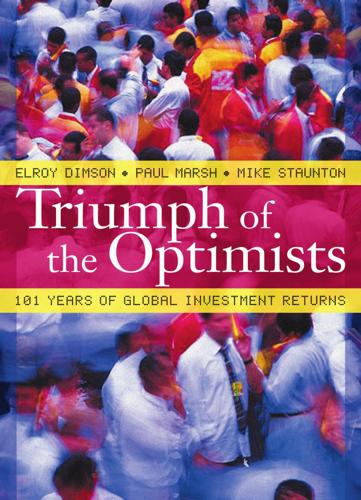
Triumph of the Optimists: 101 Years of Global Investment Returns
by
Elroy Dimson
,
Paul Marsh
and
Mike Staunton
Published 3 Feb 2002
Apart from biases in index construction—a possibility that had not previously been thought important, but which we saw in section 3.2 is material in relation to the UK figure—the finger of suspicion has pointed mainly at success and survivorship bias among countries. The concern over success bias is that inferences about risk premia worldwide were being heavily influenced by the US experience, yet the United States has been an unusually successful economy. The closely related worry over survivorship bias is that previous attempts to place the experience of other countries like the United Kingdom alongside that of the United States may still have overstated the risk premium since they have focused on just a few selected markets that have survived, typically with continuous trading, over a long period.
…
We start with the more recent period considered in chapter 9. Our analysis uses a database of balance sheets for all firms listed on the London Stock Exchange since 1953. This data, compiled by Nagel (2001), enables us to look at value effects across the entire population of UK listed stocks over nearly half a century. The source data is free of survivorship bias, and covers some one hundred thousand firm-years of accounting data. Nagel’s database is comparable, and in some ways superior, to the US Compustat data. For example, whereas Davis, Fama, and French (2000) have accounting information on 339 NYSE firms in 1929 and 834 firms in 1955, we have accounting data on some 3,500 UK companies in 1956, and use the UK accounting data in conjunction with the entire stock return series in the comprehensive London Share Price Database (LSPD), covering 1955–2000.
…
The closely related worry over survivorship bias is that previous attempts to place the experience of other countries like the United Kingdom alongside that of the United States may still have overstated the risk premium since they have focused on just a few selected markets that have survived, typically with continuous trading, over a long period. To provide better estimates of the equity risk premium we therefore need to focus on the experience of all countries, not just the United States and the United Kingdom. If we look at all markets, then survivorship bias ceases to be an issue. Our sample of sixteen countries is by no means comprehensive. However, it does represent a large proportion by value of the world’s stock markets in 1900. Fortunately, we are also able to compute total returns, including reinvested dividends, for this remarkably large sample of countries over a full 101year period.

The New Science of Asset Allocation: Risk Management in a Multi-Asset World
by
Thomas Schneeweis
,
Garry B. Crowder
and
Hossein Kazemi
Published 8 Mar 2010
Similarly, most hedge fund indices do not contain survivorship bias or backfill bias, as managers reporting to the database at any one time are used. Historical index returns are not changed when these managers are removed from the database and therefore do not reflect survivorship bias. Likewise, as new managers are added to the database, the historical index returns are not changed in order to reflect those new managers and corresponding historical index returns. Hence, no backfill bias is contained in the many indices.3 The impact of survivorship bias and backfill bias, as well as the impact of the use of hedge fund indices to reflect the performance of individual hedge funds, is shown in Exhibit 8.13 for Equity Long/Short hedge funds (other strategies are not shown in this report but results for other strategies are similar and are available from the authors).
…
The often higher historical returns to funds listed in the current database are often reported to be due to several biases (Fung and Hsieh, 2006) in database construction such as (1) backfill bias/incubation bias (the historical returns of new funds reporting to the database are included in the database. Since, in most cases, only funds with superior historical returns report their returns to databases, the returns before their database entry date may be biased upward relative to all those funds that do not report) and (2) survivorship bias: Funds that used to exist historically in 192 THE NEW SCIENCE OF ASSET ALLOCATION the database are removed from it when they stop reporting. Often these funds stop reporting because of poor returns. The often lower returns of these funds are not contained in the live portion of most databases and one must ask for the dead fund databases in order to measure the actual returns to investment in funds that may have existed in the past.
…
A portfolio of equalweighted ELS funds, for which complete CISDM data from 2000 to 2008 are available, is compared to the CISDM ELS Index, which includes all ELS funds regardless of the completeness of their data for this period. Results show that the equal-weighted portfolio of ELS hedge funds reports a higher return (7.8%) than that of the CISDM ELS index (4.9%) over the same period. This is consistent with both backfill and survivorship bias. (Note that the correlations with the S&P 500, BarCap US Government and Corporate High-Yield indices and the CISDM ELS index are similar at the portfolio level.) Of greater importance is that the average of the standard deviations of the individual ELS (15.9%) funds is higher than the standard deviation of the ELS EW Portfolio (9.0%) or of the CISDM ELS Index (6.6%).

Fooled by Randomness: The Hidden Role of Chance in Life and in the Markets
by
Nassim Nicholas Taleb
Published 1 Jan 2001
Why it is not scientific to take science seriously. Soros promotes Popper. That bookstore on Eighteenth Street and Fifth Avenue. Pascal’s wager. EIGHT: TOO MANY MILLIONAIRES NEXT DOOR Three illustrations of the survivorship bias. Why very few people should live on Park Avenue. The millionaire next door has very flimsy clothes. An overcrowding of experts. NINE: IT IS EASIER TO BUY AND SELL THAN FRY AN EGG Some technical extensions of the survivorship bias. On the distribution of “coincidences” in life. It is preferable to be lucky than competent (but you can be caught). The birthday paradox. More charlatans (and more journalists).
…
Arguably, in expectation, a dentist is considerably richer than the rock musician who is driven in a pink Rolls Royce, the speculator who bids up the price of impressionist paintings, or the entrepreneur who collects private jets. For one cannot consider a profession without taking into account the average of the people who enter it, not the sample of those who have succeeded in it. We will examine the point later from the vantage point of the survivorship bias, but here, in Part I, we will look at it with respect to resistance to randomness. Consider two neighbors, John Doe A, a janitor who won the New Jersey lottery and moved to a wealthy neighborhood, compared to John Doe B, his next-door neighbor of more modest condition who has been drilling teeth eight hours a day over the past thirty-five years.
…
But he was too much a no-nonsense person to make out my logic. He once blamed me for not being impressed with the successes of some of his traders who did well during the bull market for European bonds of 1993, whom I openly considered nothing better than random gunslingers. I tried presenting him with the notion of survivorship bias (Part II of this book) in vain. His traders have all exited the business since then “to pursue other interests” (including him). But he gave the appearance of being a calm, measured man, who spoke his mind and knew how to put the other person at ease during a conversation. He was articulate, extremely presentable thanks to his athletic looks, well measured in his speech, and endowed with the extremely rare quality of being an excellent listener.
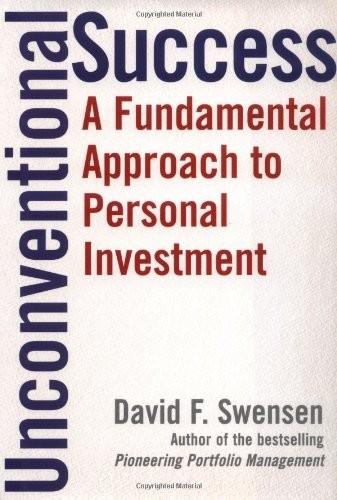
Unconventional Success: A Fundamental Approach to Personal Investment
by
David F. Swensen
Published 8 Aug 2005
Assuming that active managers of hedge funds achieve success levels similar to active managers of traditional marketable securities, investors in hedge funds face dramatically higher levels of prospective failure due to the materially higher levels of fees. Survivorship Bias Statistics on past performance of hedge funds fail to provide much insight into the character of this relatively new segment of the investment world. Survivorship bias represents a pervasive problem for gatherers of historical return data. The fact that poorly performing firms fail at higher rates than well-performing firms causes data on manager returns to overstate past results, since compilations of data at any point in time from the current group of managers frequently lack complete performance numbers from firms that failed in the past.
…
The fact that poorly performing firms fail at higher rates than well-performing firms causes data on manager returns to overstate past results, since compilations of data at any point in time from the current group of managers frequently lack complete performance numbers from firms that failed in the past. In the well-established, comprehensively documented world of traditional marketable securities, survivorship bias presents a significant, albeit quantifiable problem. In the less-well-established, less comprehensively documented arena of hedge fund investing, survivorship bias creates a much more substantial informational challenge. Even in those instances in which database managers attempt to include results from failed firms, the history of returns often lacks completeness. Because most compilers of data rely on self-reporting of results by hedge funds, the integrity of the data depends on the fidelity of the hedge funds.
…
In those parts of the Arnott study that present returns without survivorship bias, the measured underperformance of active managers likely overstates reality by a margin approximately equal to the performance differential between the S&P 500 and the Wilshire 5000. For example, because Arnott removed survivor bias from the data in Table 7.2 and Table 7.5, the data exaggerate the size of performance shortfalls measured against a fair benchmark. In those parts of the study that calculate the odds of winning and losing along with the average margins of victory and defeat, survivorship bias enters the picture. (This part of the study excludes funds that disappear, because the authors need a full-period record to calculate the results.)

The Power of Passive Investing: More Wealth With Less Work
by
Richard A. Ferri
Published 4 Nov 2010
He concluded again that these 11 leading financial firms “failed to disclose evidence of ability to predict successfully the future course of the stock market.”3 Cowles reported that 6 of the 11 surviving forecasters outperformed a random sampling of stocks by 0.2 percent over the period. However, there was likely a strong survivorship bias in the data that resulted in a deceptively high average return for the remaining entities. Survivorship bias occurs in performance data when the entire return histories of non-surviving entities are deleted from the database as these entities cease to exist. Cowles didn’t report the partial period returns from the 13 forecasters who dropped out over the years because of poor performance.
…
Closed and merged funds were not included; however, studies on closed and merged fund performance show that a large majority of these funds considerably underperformed their benchmarks in the years leading up to their demise. Chapter 6 provides performance data on terminated mutual funds prior to closing or merging. Including terminated fund performance in the data up to each fund’s termination date would eliminate the survivorship bias and change the outcome in Figure 3.1. Without survivorship bias, the Vanguard 500 Index Fund beat over 85 percent of actively managed funds during the 25 year period. The second strike against active funds in this sample is the small excess returns of the winning active funds relative to larger shortfalls from the losing funds.
…
Although the top-decile mutual funds earned back their investment costs, most funds underperform by about the magnitude of their investment expenses. The bottom-decile funds, however, underperform by about twice their reported investment costs.16 One added benefit from Carhart’s exhaustive study on mutual fund performance was the creation of the first survivorship-bias-free mutual fund database. The database was initially funded by Eugene Fama and compiled by Carhart. Unlike other databases at the time, the CRSP Survivor-Bias-Free US Mutual Fund Database included the returns of closed and merged funds. This represented the true opportunity set that investors had to choose from over the years.b Fama and French also included a four-factor model in their recent study on mutual funds mentioned earlier.
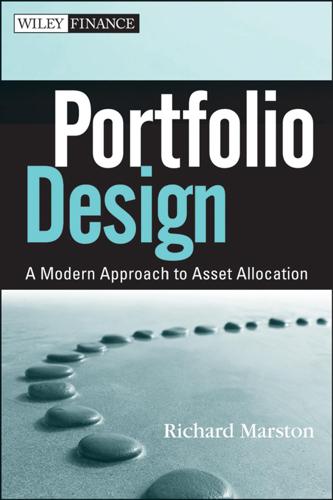
Portfolio Design: A Modern Approach to Asset Allocation
by
R. Marston
Published 29 Mar 2011
They do this by P1: a/b c09 P2: c/d QC: e/f JWBT412-Marston T1: g December 20, 2010 17:1 Printer: Courier Westford 180 PORTFOLIO DESIGN TABLE 9.6 Biases in Hedge Fund Returns in TASS Database Malkeil and Saha (2005) Estimates Fung and Hsieh (2006) Estimates 1994–2003 1994–2004 Backfill Bias Backfilled Returns Non-Backfilled Bias 14.6% 7.3% 7.3% Backfill Bias All Funds Exclude 1st 14 Months Bias 12.0% 10.5% 1.5% Survivorship Bias Live Funds∗ Live and Defunct∗ Bias 13.7% 9.3% 4.4% Survivorship Bias Live Funds Live and Defunct Bias 14.4% 12.0% 2.4% ∗ The returns for the live and defunct funds exclude backfilled returns. The estimates of survivorship bias are for 1996 to 2003. examining the dropout rates for hedge funds in three databases, TASS, HFR, and CISDM. Using a data set of hedge funds over the period 1994-2004, they find that the highest dropout rate occurs at about 14 months.
…
To determine the resulting survivorship bias, it’s necessary to compare the returns of the live firms with the live and defunct firms together. In Table 9.6, Malkiel and Saha estimate survivorship bias to be 4.4 percent. Fung and Hsieh (2006) measure survivorship bias using their three databases from 1994 to 2004. Unlike Malkeil and Saha, Fung and Hsieh include all returns in their estimate of this bias, including backfilled returns. Table 9.6 reports a survivorship bias of 2.4 percent using P1: a/b c09 P2: c/d QC: e/f JWBT412-Marston T1: g December 20, 2010 Hedge Funds 17:1 Printer: Courier Westford 181 the TASS database. Their estimates for the other two databases are similar, 1.8 percent for the HFR database and 2.4 percent for the CISDM database.
…
For example, the funds that lost their capital in the Russian debt crisis of August 1998 did not report returns of –100 percent in that month. Instead, the returns ended in July 1998.17 Any attempts to adjust for survivorship bias will miss the liquidation bias when the fund closes down. Quantitative estimates of backfill bias range widely from one study to another. That’s because the methodology for determining the bias varies as well. Malkiel and Saha (2005) estimate backfill and survivorship bias using the TASS database from 1994 to 2003. The TASS database distinguishes between returns that have been backfilled into the TASS database from returns subsequently recorded by the same fund.
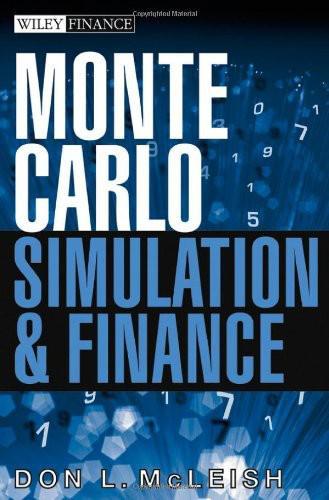
Monte Carlo Simulation and Finance
by
Don L. McLeish
Published 1 Apr 2005
From this it is easy to see that the conditional cumulative distribution function of L given C = u, H = b is given by on a · u · b (where −2φ0 (2b − u) is the joint p.d.f. of H, C) by F (a|b, u) = 1 + = ∂2 ∂b∂v P (a, b, u, v)| v=u 2φ0 (2b − u) (5.33) ∞ X −1 {−kφ0 [u + 2k(b − a)] + (1 + k)φ0 [2b − u + 2k(b − a)] 0 φ (2b − u) k=1 0 + kφ [u − 2k(b − a)] + (1 − k)φ0 [2b − u − 2k(b − a)]} This allows us to simulate both the high and the low, given the open and the close by first simulating the high and the close using −2φ0 (2b − u) as the joint p.d.f. of (H, C) and then simulating the low by inverse transform from the cumulative distribution function of the form (5.33). Survivorship Bias It is quite common for retrospective studies in finance, medicine and to be subject to what is often called “survivorship bias”. This is a bias due to the fact that only those members of a population that remained in a given class (for example the survivors) remain in the sampling frame for the duration of the study. In general, if we ignore the “drop-outs” from the study, we do so at risk of introducing substantial bias in our conclusions, and this bias is the survivorship bias. SURVIVORSHIP BIAS 291 Suppose for example we have hired a stable of portfolio managers for a large pension plan.
…
For large values of σ the process fluctuates more, and only those SURVIVORSHIP BIAS 295 Figure 5.8: E[C|L ≥ 30] for various values of (µ, σ) chosen such that E(C) = 56.25. paths with very large values of C have abeen able to avoid the absorbing barrier at l = 30. Two comparable portfolios with unconditional return about 40% will show radically different apparent returns in the presence of an absorbing barrier. If σ = 20% then the survivor’s return will still average around 40%, but if σ = 0.8, the survivor’s returns average close to 150%. The practical implications are compelling. If there is any form of survivorship bias (as there usually is), no measure of performance should be applied to the returns from different investments, managers, or portfolios without an adjustment for the risk or volatility.
…
Similarly if the unconditional standard deviation or volatility increases, the unshaded region stretches out to the right in a narrow band and the conditional mean increases. We arrive at the following seemingly paradoxical conclusions which make it imperative to adjust for survivorship bias: the conditional mean, conditional on survivorship, may increase as the volatility increases even if the unconditional SURVIVORSHIP BIAS 297 mean decreases. Let us return to the problem with both an upper and lower barrier and consider the distribution of returns conditional on the low never passing a barrier Oe−a and the high never crossing a barrier at Oeb ( representing a fund buyout, recruitment of manager by competitor or promotion of fund manager to Vice President).

The Data Detective: Ten Easy Rules to Make Sense of Statistics
by
Tim Harford
Published 2 Feb 2021
We rarely see damage to the engine or fuel tanks in planes that survive. That might be because those areas are rarely hit—or it might be that whenever those areas are hit, the plane is doomed. If we look only at the surviving planes—falling prey to “survivorship bias”—we’ll completely misunderstand where the real vulnerabilities are.5 The rabbit hole goes deeper. Even the story about survivorship bias is an example of survivorship bias; it bears little resemblance to what Abraham Wald actually did, which was to produce a research document full of complex technical analysis. That is largely forgotten. What survives is the tale about a mathematician’s flash of insight, with some vivid details added.
…
Survivor bias even distorts some studies of investment performance. These studies often start by looking at “funds that exist today” without fully acknowledging or adjusting for the fact that any fund still in existence is a survivor—and that introduces a survivorship bias. Burton Malkiel, economist and author of A Random Walk down Wall Street, once tried to estimate how much survivorship bias flattered the performance of the surviving funds. His estimate—an astonishing 1.5 percent per year. That might not sound like much, but over a lifetime of investing it’s a factor of two: you expect retirement savings of (say) $100,000 and end up with $50,000 instead.
…
Bem’s striking finding became the last word.8 But it was also the first word. I strongly doubt that before Bem came along, any serious journal would have published research, no matter how rigorous, whose abstract read: “We tested several hundred undergraduates to see if they could see into the future. They couldn’t.” This, then, is a survivorship bias as strong as press coverage of Kickstarter projects or trying to deduce the vulnerabilities of planes by examining only the ones whose vulnerabilities weren’t fatal. Out of all the possible studies that could have been conducted, it’s reasonable to guess that the journal was interested only in the ones that demonstrated precognition.
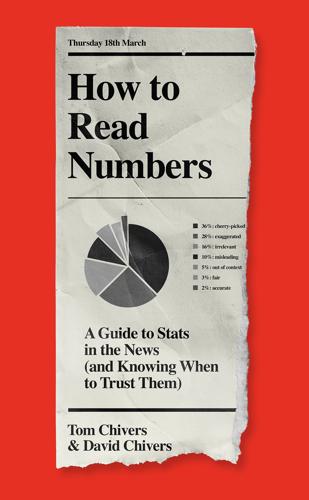
How to Read Numbers: A Guide to Statistics in the News (And Knowing When to Trust Them)
by
Tom Chivers
and
David Chivers
Published 18 Mar 2021
Those that had been hit on the engines, meanwhile, had predominantly fallen into the sea and not been counted in the statistics. Without realising it, the US Navy had been basing its decision on a biased sample, such as we discussed in Chapter 4. This particular kind of sample bias is known as survivorship bias. It involves looking only at those members of a class which you get to hear about. Douglas SBD Dauntless dive-bombers crashing into the Pacific Ocean is a particularly dramatic example, but there are many, more prosaic, examples of survivorship bias. The most obvious perhaps is ‘secrets-of-my-success’-type books by business leaders. You know the kind of thing – The 12 Habits of Extremely Rich People: How I Made My Millions by Getting Up Very Early, Only Drinking Avocado Smoothies and Firing 10 Per Cent of My Workforce at Random Every Two Weeks by Thaddeus T.
…
Chapter 10: Bayes’ Theorem Chapter 11: Absolute vs Relative Risk Chapter 12: Has What We’re Measuring Changed? Chapter 13: Rankings Chapter 14: Is It Representative of the Literature? Chapter 15: Demand for Novelty Chapter 16: Cherry-picking Chapter 17: Forecasting Chapter 18: Assumptions in Models Chapter 19: Texas Sharpshooter Fallacy Chapter 20: Survivorship Bias Chapter 21: Collider Bias Chapter 22: Goodhart’s Law Conclusion and Statistical Style Guide Acknowledgements Notes Also by Tom Chivers Copyright Introduction Numbers do not feel. Do not bleed or weep or hope. They do not know bravery or sacrifice. Love and allegiance. At the very apex of callousness, you will find only ones and zeros.
…
If the MRP model consistently outperforms its rivals over the next several elections, then we can become more confident that it’s doing something better. Otherwise, just as with the statistical significance problem we discussed in Chapter 5, we still can’t reject the null hypothesis: that there’s nothing there to explain. Chapter 20 Survivorship Bias How do you write a bestselling book? There’s a formula,1 apparently, or an algorithm, perhaps;2 or it may be a secret code.3 One article (the formula one) noted the success of J. K. Rowling, E. L. James and Alex Marwood, and suggested that being a woman with an androgynous pen name was a path to success.

The Cult of Smart: How Our Broken Education System Perpetuates Social Injustice
by
Fredrik Deboer
Published 3 Aug 2020
An essential element of charter school (and private school) success is survivorship bias. With survivorship bias, we only observe a given characteristic in those examples that make it past some sort of selection procedure. If you ever hear a speech by any successful famous person, they are likely to deliver some bromide about how they kept a positive attitude and never gave up. Which may be true—but there are also plenty of people who kept a positive attitude and never gave up and didn’t succeed, but crucially they never get the opportunity to make speeches about it so we don’t adjust our understanding accordingly. This is survivorship bias. A common type of charter school chicanery involves the refusal to backfill, which creates a type of survivorship bias.
…
The improvements in middle and elementary school were a fraction of those depicted by the Texas test and were similar to those posted on the Stanford test by students in Los Angeles … the Texas Education Agency found rampant undercounting of school dropouts.”22 This failure to account for dropouts is an example of survivorship bias, a particularly common subset of selection bias that crops up in education metrics all the time. Because those who drop out of school or are otherwise removed from the sample are much more likely to be among those struggling, failure to control for them artificially inflates numbers. (This is particularly acute in some metrics of college performance, given that, nationally, only about 60 percent of students who start college graduate in six years.)23 And so a key part of the story selling a “no excuses” model was revealed, in time, to be a trick of the numbers.
…
A common type of charter school chicanery involves the refusal to backfill, which creates a type of survivorship bias. “Backfill” is when schools enroll students to fill spaces created through students dropping out, failing out, or being removed for disciplinary problems. Backfill—through random selection, of course—is essential for making fair comparisons. After all, the students most likely to leave are often the ones living the most difficult, most transient lives, and thus those most likely to struggle academically. Refusing to backfill amounts to skimming the best students off the top after the fact.
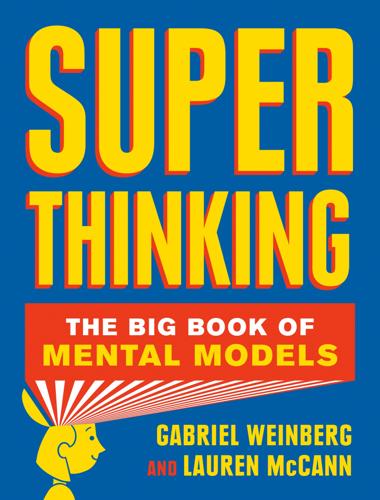
Super Thinking: The Big Book of Mental Models
by
Gabriel Weinberg
and
Lauren McCann
Published 17 Jun 2019
Almost every methodology has drawbacks, and bias of one form or another is often unavoidable. You should just be aware of all the potential issues in a study and consider them when drawing conclusions. For example, knowing about the survivorship bias in remaining employees, you could examine the data from exit interviews to see whether motivation issues were mentioned by departing employees. You could even try to survey them too. A few other examples can further illustrate how subtle survivorship bias can be. In World War II, naval researchers conducted a study of damaged aircraft that returned from missions, so that they could make suggestions as to how to bolster aircraft defenses for future missions.
…
Employees missing the survey due to a scheduled vacation would be random and not likely to introduce bias, but employees not filling it out due to apathy would be nonrandom and would likely bias the results. That’s because the latter group is made up of disengaged employees, and by not participating, their disengagement is not being captured. Surveys like this also do not usually account for the opinions of former employees, which can create another bias in the results called survivorship bias. Unhappy employees may have chosen to leave the company, but you cannot capture their opinions when you survey only current employees. Results are therefore biased based on measuring just the population that survived, in this case the employees remaining at the company. Do these biases invalidate this survey methodology?
…
Architecture presents a more everyday example: Old buildings generally seem to be more beautiful than their modern counterparts. Those buildings, though, are the ones that have survived the ages; there were slews of ugly ones from those time periods that have already been torn down. Survivorship Bias When you critically evaluate a study (or conduct one yourself), you need to ask yourself: Who is missing from the sample population? What could be making this sample population nonrandom relative to the underlying population? For example, if you want to grow your company’s customer base, you shouldn’t just sample existing customers; that sample doesn’t account for the probably much larger population of potential customers.

Market Sense and Nonsense
by
Jack D. Schwager
Published 5 Oct 2012
The key point, however, is that, as has been detailed by academic researchers William Fung and David Hsieh, fund of funds indexes eliminate or significantly mitigate hedge fund index biases.2 We now reconsider the foregoing biases from a fund of funds perspective. Survivorship bias. This bias is eliminated for single funds at the fund of funds level because defunct fund results remain reflected in historical fund of funds data. If a fund of funds was invested in a fund that blew up, the fund may disappear from some databases, but the losses incurred by the fund will remain reflected in the fund of funds track record. Although there may still be a survivorship bias at the fund of funds level (that is, defunct fund of funds), the effect will be much more muted than for single funds because the difference between a defunct and an active fund of funds is much smaller.
…
If I had drawn samples that included defunct managers, perhaps monthly rebalancing, which effectively was equivalent to taking from the winners and giving to the losers, would not have been beneficial. Possibly, it might even have been detrimental. In short, my original analysis was subject to survivorship bias. There was no way of telling whether the apparent large benefit I found in rebalancing in my original analysis was sufficient to overcome this bias. To test the rebalancing concept in a new analysis that avoided survivorship bias, I obtained the complete CTA database from Stark & Company (www.starkresearch.com)—a data set that included both existing and defunct managers. I randomly selected 10 portfolios of 10 managers each from this complete list,2 assuming equal allocations and a January 1, 2005, start date.
…
So the question of whether fund of funds managers do worse than random in their fund selections remains. The real crux of the explanation for why indexes based on funds of funds underperform indexes constructed from single funds relates to hedge fund index biases, which are far more pronounced in single-fund indexes. These biases include: Survivorship bias. This effect is perhaps the best-known bias since it has been the subject of numerous academic articles written over many years. Essentially, if an index fails to retain defunct funds, it will tend to be upwardly biased because poorer-performing funds will have a greater tendency to cease operation.
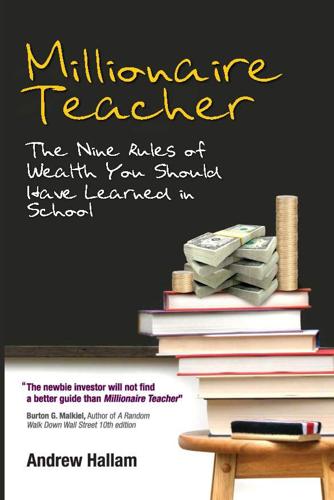
Millionaire Teacher: The Nine Rules of Wealth You Should Have Learned in School
by
Andrew Hallam
Published 1 Nov 2011
In a 15-year-long U.S. study published in the Journal of Portfolio Management, actively managed stock market mutual funds were compared with the Standard & Poor’s 500 stock market index. The study concluded that 96 percent of actively managed mutual funds underperformed the U.S. market index after fees, taxes, and survivorship bias.11 What’s a survivorship bias? When a mutual fund performs terribly, it doesn’t typically attract new investors and many of its current customers flee the fund for healthier pastures. Often, the poorly performing fund is merged with another fund or it is shut down. In November 2009, I underwent bone-cancer surgery—where large pieces of three of my ribs were removed, as well as chunks of my spinal process.
…
Finally, the dismal track record of the Lindner Large-Cap Fund was erased when it was merged into the Hennessy Total Return Fund.14 You can read countless books on index-performance track records versus actively managed funds. Most say index funds have the advantage over 80 percent of actively managed funds over a period of 10 years or more. But they don’t typically account for survivorship bias (or taxes, which I’ll discuss later in this chapter) when making the comparisons. Doing so gives index funds an even larger advantage. When accounting for fees, survivorship bias, and taxes, most actively managed mutual funds dramatically underperform index funds. In taxable accounts, the average U.S. actively managed fund underperformed the U.S. Standard & Poor’s 500 stock market index by 4.8 percent annually from 1984 to 1999.15 Holes in the hulls of actively managed mutual funds There are five factors dragging down the returns of actively managed U.S. mutual funds: expense ratios, 12B1 fees, trading costs, sales commissions, and taxes.
…
Of course, but in the fantasy world of hedge fund data crunchers, it’s still “accurate.” As a result of such twilight-zone reporting, Malkiel and Ibbotson found during their study that the average returns reported in databases, were overstated by 7.3 percent annually. These results include survivorship bias (not counting those funds that don’t finish the race) and something called “back-fill bias.” Imagine 1,000 little hedge funds that are just starting out. As soon as they “open shop” they start selling to accredited investors. But they aren’t big enough or successful enough to add their performance figures to the hedge fund data crunchers—yet.

The Four Pillars of Investing: Lessons for Building a Winning Portfolio
by
William J. Bernstein
Published 26 Apr 2002
But in each instance, the previous winners underperformed the S&P 500 index going forward, sometimes by a large margin. This is classic Randomovian behavior; we are once again looking at chimps, not skilled operators. Actually, because of “survivorship bias,” these studies understate the case against active management. We’ve already come across survivorship bias in Chapter 1 when we discussed the differences in stock and bond returns among nations. In this case, when you look at the prior performance of all the funds in your daily newspaper, or even a sophisticated mutual fund database like Morningstar’s Principia Pro, you are not looking at the complete sample of funds; you’re looking only at those that have survived.
…
And even if they did, their spendthrift heirs would likely make fast work of their fortune. But even allowing for this, Figure 1-1 is still highly deceptive. For starters, it ignores commissions and taxes, which would have shrunk returns by another percent or two, reducing a potential $23 million fortune to the above $3 million or $400,000. Even more importantly, it ignores “survivorship bias.” This term refers to the fact that only the best outcomes make it into the history books; those financial markets that failed do not. It is no accident that investors focus on the immense wealth generated by the economy and markets of the United States these past two centuries; the champion—our stock market—is the most easily visible, while less successful assets fade quickly from view.
…
But this record reflects only those societies that survived and prospered, since successful societies are much more likely to leave a record. Babylonian, Greek, and Roman investors did much better than those in the nations they vanquished—the citizens of Judea or Carthage had far bigger worries than their failing financial portfolios. This is not a trivial issue. At a very early stage in history we are encountering “survivorship bias”—the fact that only the best results tend to show up in the history books. In the twentieth century, for example, investors in the U.S., Canada, Sweden, and Switzerland did handsomely because they went largely untouched by the military and political disasters that befell most of the rest of the planet.
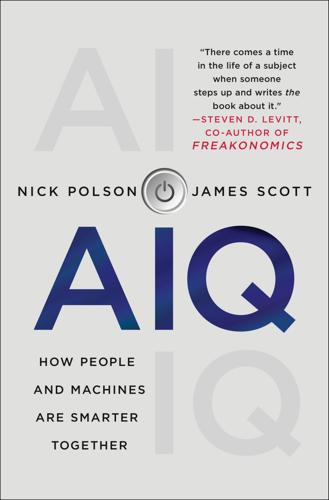
AIQ: How People and Machines Are Smarter Together
by
Nick Polson
and
James Scott
Published 14 May 2018
Only a genius like Wald, the story goes, can see to the heart of the matter, leading us back to our initial, intuitive conclusion. Alas, as far as we can tell from the historical record, this account has little basis in fact. Worse still, this embellished version, in which the moral of the story is about survivorship bias, misses the truly important thing about Abraham Wald’s contribution to the Allied war effort. Survivorship bias in the data was obviously the problem, and everybody knew it. Otherwise there would have been no reason to call the Statistical Research Group in the first place; the navy didn’t need a bunch of math professors just to count bullet holes.
…
If that were true, then the navy’s data analysts would see hundreds of bombers coming back with harmless bullet holes on the fuselage—but not a single one coming back with holes around the engine, since every such plane would have crashed. Under this scenario, if you simply added armor where you saw the bullet holes—on the fuselage—then you’d actually be handicapping the bombers, adding weight that “protected” them from a nonexistent danger. This example illustrates an extreme case of survivorship bias. Although the real world is much less extreme—bullets to the engine are not 100% lethal, nor are bullets to the fuselage 100% harmless—the statistical point remains: the pattern of damage on the returning planes had to be analyzed carefully. At this juncture, we must pause to make two important side points.
…
Wald’s little gray cells went to work. And then a thunderbolt. “Wait!” Wald exclaims. “That’s wrong. We don’t see any damage to the engines because the planes that are hit in the engine never return. You need to add armor to the engine, not the fuselage.” Wald had pointed out the crucial flaw in the navy’s thinking: survivorship bias. His final, life-saving advice ran exactly counter to that of bthe other so-called experts: put the armor where you don’t see the bullet holes. We can see why this version of the story is so irresistible: the path of counterintuition eventually turns a full 360 degrees. Imagine asking any person off the street, “Where should we put extra armor on airplanes to help them survive enemy fire?”
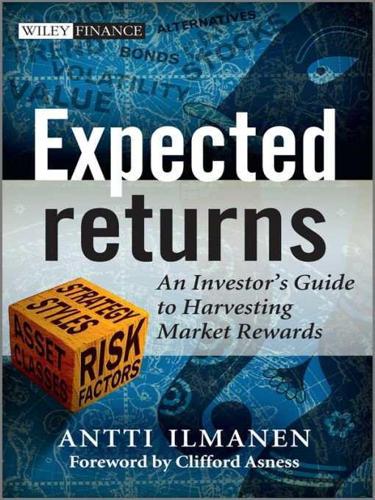
Expected Returns: An Investor's Guide to Harvesting Market Rewards
by
Antti Ilmanen
Published 4 Apr 2011
Periods of high realized returns and rising asset valuations—think stock markets in the 1990s—are often associated with falling forward-looking returns. • For specific funds and strategies, the historical performance data that investors get to see are often upward biased. This bias is due to the voluntary nature of performance reporting and survivorship bias (so that poor performers are left out of databases or are not marketed by the fund manager). A similar caveat applies to simulated “paper” portfolios because backtests may be overfitted and trading costs ignored or understated. These concerns notwithstanding, this book presents extensive evidence of long-run realized returns, when possible covering 50-to-100-year histories.
…
Pension funds match their liabilities best by buying long-dated real or nominal bonds. 4.6 BIASED RETURNS For many asset classes, returns may be positively or negatively biased over a given historical sample. For active asset managers with voluntary reporting, published returns are almost certainly upward biased. Section 11.4 reviews a host of selection biases such as survivorship bias and backfill bias in the context of hedge fund return databases, but similar caveats apply to the reported performance of other managers. Backtested results of active strategies also suffer from overfitting and data-mining biases, which also overstate published returns. Whenever we observe exceptionally attractive historical returns, it is healthy to adopt a skeptical approach.
…
In the mutual fund industry, fund families offer and incubate a diverse selection of funds, in part to ensure that they have some recent winners to use in marketing. Biases are larger in industries with voluntary reporting: databases purportedly describing the whole industry can overstate industry returns due to survivorship bias, backfill bias, and other biases (see Section 11.3). These caveats are more relevant to forming a skeptical assessment of high average returns than they are for critiquing findings of time series predictability. Peso problem Return regularities may also reflect an abnormal or unrepresentative sample period (say, 2003–2007).

A Mathematician Plays the Stock Market
by
John Allen Paulos
Published 1 Jan 2003
In their headlong efforts to discover associations, data miners are sometimes fooled by “survivorship bias.” In market usage this is the tendency for mutual funds that go out of business to be dropped from the average of all mutual funds. The average return of the surviving funds is higher than it would be if all funds were included. Some badly performing funds become defunct, while others are merged with better-performing cousins. In either case, this practice skews past returns upward and induces greater investor optimism about future returns. (Survivorship bias also applies to stocks, which come and go over time, only the surviving ones making the statistics on performance.
…
The situation is rather like that of schools that allow students to drop courses they’re failing. The grade point averages of schools with such a policy are, on average, higher than those of schools that do not allow such withdrawals. But these inflated GPAs are no longer a reliable guide to students’ performance. Finally, taking the meaning of the term literally, survivorship bias makes us all a bit more optimistic about facing crises. We tend to see only those people who survived similar crises. Those who haven’t are gone and therefore much less visible. Rumors and Online Chatrooms Online chatrooms are natural laboratories for the observation of illusions and distortions, although their psychology is more often brutally basic than subtly specious.
…
Brian auditors Aumann, Robert availability error average values compared with distribution of incomes risk as variance from averages average return compared with median return average value compared with distribution of incomes buy-sell rules and outguessing average guess risk as variance from average value averaging down Bachelier, Louis Bak, Per Barabasi, Albert-Lazló Bartiromo, Maria bear markets investor self-descriptions and shorting and distorting strategy in Benford, Frank Benford’s Law applying to corporate fraud background of frequent occurrence of numbers governed by Bernoulli, Daniel Beta (B) values causes of variations in comparing market against individual stocks or funds strengths and weaknesses of technique for finding volatility and Big Bang billiards, as example of nonlinear system binary system biorhythm theory Black, Fischer Black-Scholes option formula blackjack strategies Blackledge, Todd “blow up,” investor blue chip companies, P/E ratio of Bogle, John bonds Greenspan’s impact on bond market history of stocks outperforming will not necessarily continue to be outperformed by stocks Bonds, Barry bookkeeping. see accounting practices bottom-line investing Brock, William brokers. see stock brokers Buffett, Warren bull markets investor self-descriptions and pump and dump strategy in Butterfly Economics (Ormerod) “butterfly effect,” of nonlinear systems buy-sell rules buying on the margin. see also margin investments calendar effects call options. see also stock options covering how they work selling strategies valuation tools campaign contributions Capital Asset Pricing Model capital gains vs. dividends Central Limit Theorem CEOs arrogance of benefits in manipulating stock prices remuneration compared with that of average employee volatility due to malfeasance of chain letters Chaitin, Gregory chance. see also whim trading strategies and as undeniable factor in market chaos theory. see also nonlinear systems charity Clayman, Michelle cognitive illusions availability error confirmation bias heuristics rules of thumb for saving time mental accounts status quo bias Cohen, Abby Joseph coin flipping common knowledge accounting scandals and definition and importance to investors dynamic with private knowledge insider trading and parable illustrating private information becoming companies/corporations adjusting results to meet expectations applying Benford’s Law to corporate fraud comparing corporate and personal accounting financial health and P/E ratio of blue chips competition vs. cooperation, prisoner’s dilemma complexity changing over time horizon of sequences (mathematics) of trading strategies compound interest as basis of wealth doubling time and formulas for future value and present value and confirmation bias definition of investments reflecting stock-picking and connectedness. see also networks European market causing reaction on Wall Street interactions based on whim interactions between technical traders and value traders irrational interactions between traders Wolfram model of interactions between traders Consumer Confidence Index (CCI) contrarian investing dogs of the Dow measures of excellence and rate of return and cooperation vs. competition, prisoner’s dilemma correlation coefficient. see also statistical correlations counter-intuitive investment counterproductive behavior, psychology of covariance calculation of portfolio diversification based on portfolio volatility and stock selection and Cramer, James crowd following or not herd-like nature of price movements dart throwing, stock-picking contest in the Wall Street Journal data mining illustrated by online chatrooms moving averages and survivorship bias and trading strategies and DeBondt, Werner Deciding What’s News (Gans) decimalization reforms decision making minimizing regret selling WCOM depression of derivatives trading, Enron despair and guilt over market losses deviation from the mean. see also mean value covariance standard deviation (d) variance dice, probability and Digex discounting process, present value of future money distribution of incomes distribution of wealth dynamic of concentration UN report on diversified portfolios. see stock portfolios, diversifying dividends earnings and proposals benefitting returns from Dodd, David dogs of the Dow strategy “dominance” principle, game theory dot com IPOs, as a pyramid scheme double-bottom trend reversal “double-dip” recession double entry bookkeeping doubling time, compound interest and Dow dogs of the Dow strategy percentages of gains and losses e (exponential growth) compound interest and higher mathematics and earnings anchoring effect and complications with determination of inflating (WCOM) P/E ratio and stock valuation and East, Steven H.

The Intelligent Asset Allocator: How to Build Your Portfolio to Maximize Returns and Minimize Risk
by
William J. Bernstein
Published 12 Oct 2000
Returns are reported in inflation-adjusted terms, with dividends not included. Thus, the U.S. return is reported at about 4%. To this must be added an average 4% dividend (for a total real return of 8%) plus another 3% for inflation, for a total nominal return of 11%. The main point of the Jorion-Goetzmann work is that the careful investor must be aware of so-called survivorship bias. That is, it is easy to look just at U.S. returns and conclude that long-term real returns will continue to be high. However, the United States has been the winner in the global equity sweepstakes; the returns in most other markets have not been nearly as high. Of course, there is no guarantee that the United States will continue winning.
…
A small-cap indexing strategy would of necessity sell the most rapidly appreciating stocks as they grew beyond the index’s size borders, when in fact these are the companies with the highest returns going forward. As we’ll discuss further along in this chapter, small-cap growth stocks have poor long-term returns, and it is probably wise to avoid investing in this area, active or indexed. Survivorship Bias The deeper one delves, the worse things look for actively managed funds. Consider for a moment what happens when you open up the quarterly New York Times supplement and start sampling fund performance over the past 10 years. You might think that you’re getting a fairly accurate picture of historical fund performance.
…
Spread: The difference between the bid and ask price of a security. The amount of spread is a measure of the liquidity of the security. 194 The Intelligent Asset Allocator Standard deviation (SD): A statistical measure of the scatter of a series of numbers. The SD of the returns of a security or portfolio is usually a good estimate of its risk. Survivorship bias: An upward bias in the estimation of aggregate security or investment company returns caused by the disappearance of the worst performing members of the group. Systematic risk: The risk of the market portfolio, which cannot be diversified away. Total return: Same as the return of a security or portfolio— includes price change, dividends, and other distributions.
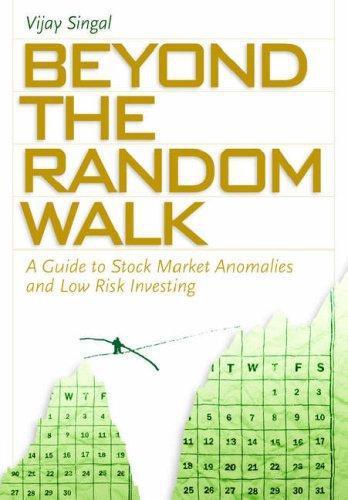
Beyond the Random Walk: A Guide to Stock Market Anomalies and Low Risk Investing
by
Vijay Singal
Published 15 Jun 2004
If data mining worked in this case, it may not work for a different sample. If it is not possible to get another data set, then test the relationship over subperiods of the data. The results must hold for subperiods as well as for the whole period unless there is a valid reason for a change in the observed relationship. SURVIVORSHIP BIAS Another source of unreliability of an anomaly is survivorship bias, which exists whenever results are based on existing entities. For example, a simple study of existing mutual funds will find that mutual funds, on average, outperform their benchmarks. The problem with such a sample is survivorship. Only well-performing funds continue to survive, while the underperformers die.
…
Only well-performing funds continue to survive, while the underperformers die. Thus, a sample of existing mutual funds will not contain funds that underperformed and died. If all funds, dead and alive, are included in the sample, then the funds, on average, do not outperform their benchmarks. The sample of existing mutual funds has a survivorship bias and will result in an overestimation of fund performance. Survivorship is important in market timing studies, as market timing newsletters or services use many strategies and frequently add new strategies and discontinue others. Which ones does the market timer add? The ones that have shown great promise based on past trends.
…
Which ones are discontinued? The ones that no longer show continuing profitability. The record displayed by the market 11 12 Beyond the Random Walk timer shows only the successful strategies and not the unsuccessful strategies, giving readers the false impression of market timing prowess where none exists. Survivorship bias is widespread in many spheres of the investment world. People with a good investment record are retained, while others are dumped. It seems as if all the investment firms have analysts who can predict the market. What about the guests on CNBC? Are they really good stock pickers, or are they simply lucky?
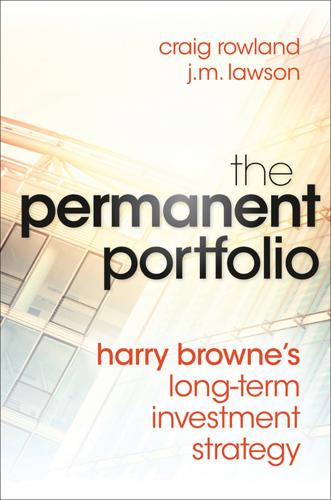
The Permanent Portfolio
by
Craig Rowland
and
J. M. Lawson
Published 27 Aug 2012
In the fund industry active managers will compare their performance to various S&P indices to gauge how well they did compared to the overall market. The SPIVA report is S&P's way of reporting on industry performance compared to their benchmarks. They use a methodology that accounts for “survivorship bias.” Survivorship bias is what happens when the final results of a data series don't show all of those who dropped out before the end. Think of survivorship bias as going into your school records, erasing the courses you took where you received a bad grade, and then recalculating your GPA. It's the same thing, except when you do it you don't make millions a year from unsuspecting investors.
…
A fund that is performing poorly will often be closed or merged with another fund in order to sweep poor results under the rug. This can make a group of funds look better over the years as the stinkers are quietly buried. The poor results are removed from the industry totals, boosting the overall averages of those that remain. Think of survivorship bias as going into your school records, erasing the courses you took where you received a bad grade, and then recalculating your GPA. It's the same thing, except when you do it you don't make millions a year from unsuspecting investors. As noted above, however, the results of each year's SPIVA scorecard do not allow for this removal of bad funds from performance data and the results are eye opening.
…
See also Retirement plans Performance: 25/75 portfolio 50/50 portfolio 60/40 portfolio 75/25 portfolio actively managed portfolio backtesting past performance bond cash costs impacting (see Costs; Taxes) diversification impacting (see Diversification) financial safety by nonreliance on past performance flexibility of expectations about gold growth of inflation-adjusted or real limited losses in over time performance chasing Permanent Portfolio (see also specific asset performance) Permanent Portfolio fund rebalancing increasing long-term SPIVA report on stability impacting stock survivorship bias in reports on volatility impacting (see Market volatility) Permanent Exchange Traded Fund, Global X Permanent Portfolio: asset allocation in (see Asset allocation; Bonds; Cash; Gold; Stocks) commercial Permanent Portfolio funds description of diversification in (see Diversification) flexibility of, to expect unexpected Golden Rules of financial safety for implementation of international investments in (see International investments) modification of passive investing through performance of (see Performance) rebalancing and maintenance of (see Rebalancing and maintenance) resources on simplicity approach to tax considerations for (see Taxes) Variable Portfolio vs.

Stocks for the Long Run, 4th Edition: The Definitive Guide to Financial Market Returns & Long Term Investment Strategies
by
Jeremy J. Siegel
Published 18 Dec 2007
There are two ways to CHAPTER 20 Fund Performance, Indexing, and Beating the Market 343 measure long-term fund returns. One is to compute the returns of all funds that have survived over the period examined. But the long-term returns on these funds suffer from survivorship bias that overestimates the returns available to investors. This survivorship bias exists because poorly performing funds are often terminated, leaving only the more successful ones with long-term track records to be included in the data. The second, and more accurate, method is to compute, year by year, the average performance of all equity mutual funds in existence.
…
This sum can be realized by an investor holding the broadest possible portfolio of stocks in proportion to their market value and is calculated to include those companies that do not survive.8 By extension, the above analysis indicates that $1 million invested and reinvested during these more than 200 years would have grown to the incredible sum of $12.7 trillion by the end of 2006, nearly threequarters the entire capitalization of the U.S. stock market! One million dollars in 1802 is equivalent to roughly $16.84 million in today’s purchasing power. This was certainly a large, though not 8 Analysis of survivorship bias issues in computing returns is discussed in Chapter 20. CHAPTER 1 Stock and Bond Returns Since 1802 7 overwhelming, sum of money to the industrialists and landholders of the early nineteenth century.9 But total wealth in the stock market, or in the economy for that matter, does not accumulate as fast as the total return index.
…
WORLDWIDE EQUITY AND BOND RETURNS: GLOBAL STOCKS FOR THE LONG RUN When I published Stocks for the Long Run in 1994, some economists questioned whether my conclusions, drawn from data from the United States, might overstate equity returns measured on a worldwide basis. Several economists emphasized the existence of a survivorship bias in international returns, a bias caused by the fact that long-term returns are intensively studied in successful equity markets, such as the United States, but ignored in countries, such as Russia or Argentina, where stocks have faltered or disappeared outright.17 This bias suggested that stock returns in the United States, a country that over the last 200 years has been transformed from a small British colony into the world’s greatest economic power, are unique and historical equity returns in other countries would be lower.

I Will Teach You To Be Rich
by
Sethi, Ramit
Published 22 Mar 2009
The complex begins to market those successful funds aggressively, dropping the other seven and burying their records. —BURTON G. MALKIEL, A RANDOM WALK DOWN WALL STREET * * * Second, when it comes to fund ratings, companies rely on something called survivorship bias to obscure the picture of how well a company is doing. Survivorship bias exists because funds that fail are not included in any future studies of fund performance for the simple reason that they don’t exist anymore. For example, a company may start a hundred funds, but have only fifty left a couple of years later. The company can trumpet how effective their fifty funds are, but ignore the fifty funds that failed and have been erased from history.
…
pages on mutual-fund websites and in magazines, it’s just as important to think about what you aren’t seeing as what you are: The funds on that page are the ones that didn’t close down. Out of that pool of already successful funds, of course there will be some five-star funds. Financial companies know very well about survivorship bias, but they care more about having a page full of funds with great performance numbers than revealing the whole truth. As a result, they’ve consciously created several ways to test funds quickly and market only the best-performing ones, thus ensuring their reputation as the brand with the “best” funds.
…
These tricks are especially insidious because you’d never know to look out for them. When you see a page full of funds with 15 percent returns, you naturally assume they’ll keep giving you 15 percent returns in the future. And it’s even better if they have five-star ratings from a trusted company like Morningstar. But now that we know about survivorship bias and the fact that most ratings are meaningless, it’s easy to see that financial “experts” and companies are just looking to fatten their wallets, not ensure that you get the best return for your money. I Bet You Don’t Need a Financial Adviser You’ve heard my rants against the media hype surrounding investment and the poor performance of most professional investors.
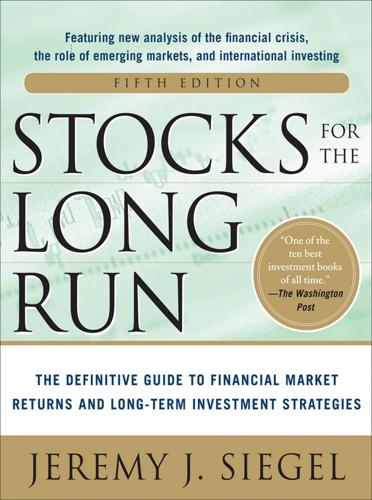
Stocks for the Long Run 5/E: the Definitive Guide to Financial Market Returns & Long-Term Investment Strategies
by
Jeremy Siegel
Published 7 Jan 2014
Unfortunately, the past record of the vast majority of such actively managed funds does not support this contention. There are two ways to measure long-term fund returns. One is to compute the returns of all funds that have survived over the period examined. But the long-term returns on these funds suffer from survivorship bias that overestimates the returns available to investors. This survivorship bias exists because poorly performing funds are often terminated, leaving only the more successful ones with superior track records to be included in the data. The second, and more accurate, method is to compute, year by year, the average performance of all equity mutual funds that were available to investors in that year.
…
The behavior of stock and bond returns since 1925 has also been researched by Roger Ibbotson, who has published yearbooks that have become benchmarks for U.S. asset returns since 1972.6 All the stock and bond returns reported in this volume, including those from the early nineteenth century, are free from “survivorship bias,” a bias that arises from only using the returns from firms that have survived and ignoring the lower returns from firms that have disappeared over time. TOTAL ASSET RETURNS The story of these assets is told in Figure 5-1. It depicts the total nominal (not inflation adjusted) return indexes for stocks, long- and short-term government bonds, gold, and commodities from 1802 through 2012.
…
If forward-looking equity returns match their historical average, the forward-looking equity premium in 2013 could be 6 percent or more.15 WORLDWIDE EQUITY AND BOND RETURNS When I published Stocks for the Long Run in 1994, some economists questioned whether my conclusions, drawn from data from the United States, might overstate historical equity returns measured on a worldwide basis. They claimed that U.S. stock returns exhibited survivorship bias, a bias caused by the fact that returns are collected from successful equity markets, such as the United States, but ignored in countries where stocks have faltered or disappeared outright, such as in Russia or Argentina.16 This bias suggested that stock returns in the United States, a country that over the last 200 years has been transformed from a small British colony into the world’s greatest economic power, are unique and that historical equity returns in other countries would be lower.
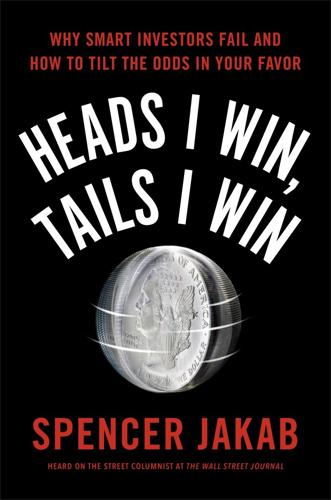
Heads I Win, Tails I Win
by
Spencer Jakab
Published 21 Jun 2016
Tom Lauricella, “The Stock Picker’s Defeat,” Wall Street Journal, December 10, 2008. 6. Eleanor Laise, “Best Stock Fund of the Decade: CGM Focus,” Wall Street Journal, December 31, 2009. 7. Steve Johnson, “Active Fund Managers Really Can Pick Stocks,” Financial Times, May 17, 2015. 8. Mark Hebner, “Survivorship Bias—Things Are Not as Good as They Look,” Index Fund Advisors, May 11, 2013, https://www.ifa.com/articles/survivorship_bias_things_are_not_as_good_as_they_look/. 9. Karen D’Amato, “When It Comes to Fund Performance, History Is Often Written by the Winners,” Wall Street Journal, August 6, 2012. Chapter Seven: Seers and Seer Suckers 1. Tom Harford, “How to See into the Future,” Financial Times, September 5, 2014, http://www.ft.com/intl/cms/s/2/3950604a-33bc-11e4-ba62-00144feabdc0.html. 2.
…
It also uncovered a less surprising fact—those funds that did poorly in the first five years were more than three times as likely to be closed or merged into another fund as the top performers. The greater likelihood of poorly performing funds losing customers and therefore being shut feeds a phenomenon called “survivorship bias” that makes overall mutual fund industry numbers look a lot better than they are. Performance data take only the average of surviving funds. While it isn’t a conspiracy, studies have shown that published industry returns would be over a percentage point lower if those vanished funds were included.
…
See also fund managers stocks, 3–6, 15 in 1990s, 18, 69–70 best-performing, 198 cheapest, 219–20, 222 dividend-paying, 189, 201, 226–29, 242 and earnings per share, 89, 138–40 investing only in, 31 most expensive, 220 “old-economy,” 33 prices, 223 purchase/sale of, 22, 26, 35, 38, 41–42, 50, 54, 60, 62–63, 73, 84, 151 quality, 220, 232 rated “buy,” 25, 50, 86–87, 126, 132–37 rated “hold,” 25, 133–34 rated “sell,” 25, 50, 126, 133–38, 145 as risky assets, 20–21, 62, 64, 74 smallest, 224–25 target prices on, 86–88 strategists, 40, 51, 89–90, 99, 116, 122, 125–26, 132, 140–41, 144–45, 161, 225 subprime mortgage loans, 109, 198–99, 235 survivorship bias, 155 Sutton, Willie, 29 Swensen, David, 81–82 TABB Group, 174 taxes, 23, 52, 66, 74, 80–83, 198, 210, 248, 252 technology boom, 11, 58, 179, 181, 185, 238, 248 bubble, 76, 93, 135, 148–49, 193, 233, 245 IPOs, 178–86 stocks, 33, 37, 71, 193–96, 198, 222, 226, 233, 245, 247–48 Technology Review, 118 television shows/stations, 89, 135 CNBC, 45, 196, 207–8, 247–48 CNN, 125–26 Fox Business, 141–42 pundits on, 58, 92, 116, 118, 128, 141–43 Templeton, Sir John, 233, 241, 243 Tesla, 88, 195, 232 Theismann, Joe, 215 Thomson Reuters, 138 time arbitrage, 22, 220–21 “Timing Poorly: A Guide to Generating Poor Returns While Investing in Successful Strategies” (Hsu), 112 tobacco companies, 188 tracking software, 217 trading rapid-fire, 24, 207, 211, 214–15 “systems” for, 210–15 Train, John, 108 “Trend Trading to Win” (Parness), 211–12 Tversky, Amos, 72 Under Armour Inc., 139 unemployment, 50, 52, 57–59, 232 United States Congress, 33 credit rating, 46–47 Labor Department, 57–59 Oil Fund, 205 presidents, 42, 70, 146 Treasury notes, 69, 77, 82, 166, 207, 248 University of Chicago’s Center for Research in Security Prices, 115 University of Iowa, 146 University of Michigan, 43 USA Mutuals Barrier Fund, 189 VA Linux, 179 valuation, 27, 71–73, 77, 86, 90–96, 107, 139, 181, 218, 222 value investing, 113, 129, 157–58, 192, 219–22, 227–28, 232 “Value vs.

Other Pandemic: How QAnon Contaminated the World
by
James Ball
Published 19 Jul 2023
What Wald had spotted and the US military had missed is that the planes which returned weren’t a full sample of planes that had gone out on bombing runs. The ones that were hit on the wings and tails returned to base, and lived to tell the tale. The ones that were hit in the engines, though, never made it home – and so the armour needed to go where the surviving planes hadn’t been hit. The above is perhaps the most famous case of survivorship bias – the idea that the group that returns from some endeavour, or stays in some place, is not necessarily representative of the population that was there at the beginning. With 4chan, the people whose teenage angst and loneliness passed – as thankfully for most of us it does – and turned into a new and different set of adult problems moved on.
…
Like rainforests, they might not be visited by nearly so many people as large cities (Facebook, Instagram, and the like), but they’re often where something new begins. What catches on depends on how much it appeals to the people who are there and the way they already see the world. This is where all of the traits identified in the earliest chapters of the book come together: the survivorship bias which had seen only the more isolated (and often misogynistic) people stay on the boards, where they then go on to radicalise others. The nature of trolling means it leads to escalation to secure the same levels of high and the same levels of attention. This meets the desire to strike out to other, wider social networks to see if they could be trolled or in some way bullied, fuelling the build-up of a community defined against an uninterested and unfriendly mainstream.
…
With concerted time and research we may get better at helping those pulled in to conspiratorial dreamlands to wake up (sheeple).12 But for now, we can start with a few principles – the first being not to waste time arguing the details of each ‘fact’ or sign that Q or some other online messiah says is actually prophetic. Instead, we can try to start where people are and pull them back into communities outside the digital conspiracies. We can also try to make people think about the online ecosystem and their place in it – to see how a toxic mixture of algorithmic curation and online survivorship bias in communities can radicalise first your information ecosystem and then your mind. All of that is slow, laborious work, with absolutely no guarantee of success – which can only lead us to the conclusion that online, just as offline, prevention is surely better than cure. Digital Public Health The things we can do to stop people getting sick are always a lot cheaper than treating them once they get there.
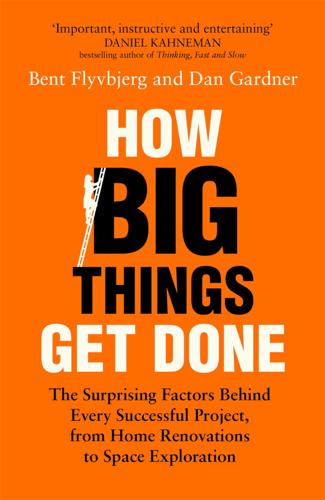
How Big Things Get Done: The Surprising Factors Behind Every Successful Project, From Home Renovations to Space Exploration
by
Bent Flyvbjerg
and
Dan Gardner
Published 16 Feb 2023
In the social sciences, “survivorship bias” is the common mistake of noting only those things that made it through some selection process while overlooking those that didn’t. Someone could note, for example, that Steve Jobs, Bill Gates, and Mark Zuckerberg all dropped out of university and conclude that a key to success in information technology is to leave school. What’s missing, and what makes that odd conclusion possible, are the dropouts who went nowhere in information technology and are ignored. That’s survivorship bias. If we consider only stories, survivorship bias will always favor Hirschman’s account because projects that overcome adversity with a burst of creativity and deliver great triumphs are like dropouts who become billionaires; they’re great stories, so they get noticed.
…
Guggenheim Foundation, ref1 Somervell, Brehon B., ref1, ref2, ref3 Sonning Prize, ref1 Soul (movie), ref1, ref2 South Africa, ref1 space, ref1, ref2 SpaceX, ref1 Spain, ref1, ref2, ref3, ref4, ref5, ref6, ref7, ref8, ref9 speed, ref1, ref2, ref3, ref4 Spielberg, Steven, ref1, ref2 Staats, Bradley, ref1 standard deviations, ref1 Stanovich, Keith, ref1 Starrett Brothers and Eken, ref1 start digging a hole strategy, ref1, ref2 State Route 99 tunnel, Seattle, ref1 statistics, ref1, ref2, ref3 Staw, Barry M., ref1 Stone, Brad, ref1 stories vs. data, ref1 Storyk, John, ref1, ref2, ref3 strategic misrepresentation, ref1, ref2, ref3, ref4, ref5, ref6, ref7 subways, ref1, ref2, ref3 Suez Canal, ref1 sunk-cost fallacy, ref1 Sunstein, Cass R., ref1, ref2, ref3, ref4 supply chains, ref1 survival of the fittest, ref1 survivorship bias, ref1 Sweden, ref1, ref2 Swiss Parliament Building, ref1 Switzerland, ref1, ref2 Sydney Opera House, Australia, ref1, ref2, ref3, ref4, ref5, ref6, ref7, ref8, ref9, ref10, ref11, ref12, ref13, ref14, ref15, ref16, ref17 tacit knowledge, ref1 Taillibert, Roger, ref1 Taj Mahal, India, ref1 Takemori, Tensho, ref1 Taleb, Nassim Nicholas, ref1, ref2 Tali, Sharot, ref1 Target, ref1 team building, ref1 teams, ref1, ref2, ref3, ref4, ref5, ref6 technology, ref1, ref2 Terminal 5 (T5), Heathrow Airport, United Kingdom, ref1, ref2, ref3, ref4, ref5 Tesla, ref1 testing, ref1, ref2, ref3 Thames Barrier flood controls, United Kingdom, ref1 theory of change, ref1 Theranos, ref1, ref2 thin-tailed projects, ref1, ref2 think slow, act fast, ref1, ref2, ref3, ref4, ref5, ref6, ref7, ref8, ref9, ref10, ref11, ref12, ref13 Thinking, Fast and Slow (Kahneman), ref1, ref2 Thompson, Louis, ref1 Three-Mile Island, ref1 Tokyo Olympic Games (2020), ref1, ref2 Toy Story (movie), ref1, ref2, ref3 Toyota, ref1 Transbay Terminal, San Francisco, ref1 transportation projects, ref1, ref2, ref3, ref4, ref5 (see also specific projects) tsunamis, ref1, ref2 tunnels, ref1, ref2, ref3, ref4, ref5, ref6, ref7, ref8, ref9, ref10, ref11 Tversky, Amos, ref1, ref2, ref3, ref4, ref5, ref6, ref7, ref8, ref9 Twain, Mark, ref1 Twitter, ref1 U2, ref1 underestimation, ref1, ref2, ref3, ref4, ref5, ref6 UNESCO, ref1 uniqueness bias, ref1, ref2, ref3, ref4, ref5, ref6, ref7, ref8 United Artists, ref1 United Kingdom, ref1, ref2, ref3, ref4, ref5, ref6, ref7, ref8, ref9, ref10, ref11, ref12, ref13 United Nations, ref1 unknown unknowns, ref1, ref2, ref3, ref4, ref5 Up (movie), ref1 Utzon, Jan, ref1 Utzon, Jørn, ref1, ref2 experience of, ref1, ref2, ref3, ref4 one-building architect, ref1, ref2 Sydney Opera House designed by, ref1, ref2, ref3, ref4, ref5, ref6, ref7, ref8, ref9, ref10, ref11, ref12, ref13 vaporware, ref1 Vestas, Denmark, ref1 vision, ref1, ref2, ref3, ref4, ref5 Vitra Design Museum, Germany, ref1 Vogel, Steve, ref1, ref2 Waldorf-Astoria hotel, New York City, ref1 Wall Street Journal, The, ref1 Wallace, David Foster, ref1 Walmart, ref1 Walt Disney Company, ref1 Walt Disney Concert Hall, Los Angeles, ref1, ref2 Walters-Storyk Design Group, ref1 War Department, ref1 Warner Bros., ref1 Washington, DC, ref1 Washington Monument, ref1 water projects, ref1, ref2, ref3 wealth, ref1 weather events, ref1 wedding cakes, ref1, ref2 Weil am Rhein, Germany, ref1 Wembley Stadium, United Kingdom, ref1, ref2 West, Richard, ref1 What You See Is All There Is (WYSIATI), ref1, ref2, ref3, ref4 wildfires, ref1, ref2, ref3, ref4 Williams, Walter, ref1 Willis, Carol, ref1 wind power, ref1, ref2, ref3, ref4, ref5, ref6, ref7, ref8 windmills, ref1 window of time, window of doom, ref1 Winfrey, Oprah, ref1 Winston-Salem, North Carolina, ref1 Winwood, Steve, ref1 Wired magazine, ref1 Wolf Prize, ref1 Wolstenholme, Andrew, ref1, ref2, ref3, ref4, ref5 Wonder, Stevie, ref1 Wood, Ron, ref1 work backwards, ref1 World Development journal, ref1 World Health Organization, ref1 world hunger, ending, ref1, ref2 World War II, ref1, ref2, ref3, ref4 WYSIATI (What You See Is All There Is), ref1, ref2, ref3, ref4 XRL project, Hong Kong, ref1, ref2, ref3, ref4, ref5 Zuckerberg, Mark, ref1 About the Authors Bent Flyvbjerg is a professor at the University of Oxford and the IT University of Copenhagen, an economic geographer, and ‘the world’s leading megaproject expert’, according to global accounting network KPMG.

Quantitative Value: A Practitioner's Guide to Automating Intelligent Investment and Eliminating Behavioral Errors
by
Wesley R. Gray
and
Tobias E. Carlisle
Published 29 Nov 2012
Data Errors In his 1992 article, “Behind the Smoke and Mirrors: Gauging the Integrity of Investment Simulations,”14 John D. Freeman discusses several common errors made by researchers conducting investment simulations. Many are inadvertent and the result of faulty data. A good database can help us avoid most of these errors. One well-known error is caused by survivorship bias, so called because it stems from the inclusion of “survivors”—those stocks that are not delisted—to the exclusion of those that are delisted, which causes the study to be biased in favor of the survivors. Databases that don't include data on delisted stocks may cause returns to be overstated.
…
Finally, we have sought to avoid the common pitfalls of back-test results. We model our testing on the best academic and industry finance research. In all cases, our null hypothesis is that the market is efficient, and only in the face of overwhelming evidence do we reject the null hypothesis. We use comprehensive databases free of survivorship bias, containing historical corporate action and delisting data, and we have lagged the data to control for look-ahead bias. We use a relatively large market capitalization cutoff ($1.4 billion as of December 31, 2011). We also assume an annually rebalanced, market capitalization–weighted portfolio at inception.
…
See Look-ahead bias Price ratios analysis of compound annual growth rates alpha and adjusted performance risk-adjusted performance and absolute measures of risk value premium and spread book-to-market composite formed from all metrics formed from the “best” price ratios top-performing earnings yield EBIT variation, outperformance by enterprise yield (EBITDA and EBIT variations) forward earnings estimate free cash flow yield gross profits yield long-term study methods of studying Princeton-Newport Partners PROBM model Procter & Gamble Profit margins growth maximum stability Pronovost, Peter Puthenpurackal, John Quality and Price, improving compared with Magic Formula finding Price finding Quality Quantitative value checklist Quantitative value strategy examining, results of analysis legend beating the market black box, looking inside man versus machine risk and return robustness Greenblatt's Magic Formula bargain price examination of findings good business Quality and Price, improving compared with Magic Formula finding Price finding Quality simplifying strategy implementation checklist tried-and-true value investing principles Quinn, Kevin The Random Character of Stock Market Prices (Bachelier) Random walk theory Regression analysis Representativeness heuristic “Returns to Trading Strategies Based on Price-to-Earnings and Price-to-Sales Ratios” (Nathan, Sivakumar, & Vijayakumar) Ridgeline Partners Risk-adjusted performance and absolute measures of risk R-squared Ruane, William Scaled net operating assets (SNOA) Scaled total accruals (STA) Schedule 13D Security Analysis (Graham & Dodd) See's Candies Self-attribution bias Sequoia Fund Sharpe, William Sharpe ratio Shiller, Robert Short selling Shumway, Tyler Simons, Jim Singleton, Henry Sloan, Richard Small sample bias “Some Insiders Are Indeed Smart Investors” (Giamouridis, Liodakis, & Moniz) Sortino ratio Stock buybacks, issuance, and announcements Stock market, predicting movements in sustainable alpha quantitative value strategy simplifying tried-and-true value investing principles model, testing benchmarking data errors historical data versus forward data size of portfolio and target stocks small sample bias transaction costs universe, parameters of Super Crunchers: Why Thinking-by-Numbers Is the New Way to Be Smart (Ayres) “The Superinvestors of Graham-and-Doddsville” (Buffett) Survivorship bias Sustainable alpha Taleb, Nassim Teledyne Tetlock, Philip Theory of Investment Value (Williams) Third Avenue Value Fund Thorp, Ed Total enterprise value (TEV) Transaction costs Tsai, Claire Tversky, Amos Value investors'errors Value portfolio Value premium and spread Wellman, Jay What Works on Wall Street (O'Shaughnessy) Whitman, Martin J.

On the Edge: The Art of Risking Everything
by
Nate Silver
Published 12 Aug 2024
See also: fox. Superintelligent: Artificial intelligence with capabilities considerably surpassing those of humans, popularized by the Nick Bostrom book Superintelligence. Survivorship bias: The tendency for a statistical sample to be biased or corrupted because some examples are more likely to survive into the “fossil record,” possibly leading to incorrect inferences. This book potentially suffers from survivorship bias because it focuses more on successful risk-takers than failed ones who have faded into obscurity. Syndicate: In sports betting, a group of skilled bettors who work in a coordinated fashion.
…
He followed that up by winning more than $500,000 twice on Hustler Casino Live in early 2023, including one hand where he won by bluffing his opponent out of a $1.1 million pot. Rampage’s biggest strength is his YOLO fearlessness. If he senses that you care about losing your chips more than he does, he’s going to exploit that at the first opportunity. One inevitable problem with a book like this is that it suffers from survivorship bias. If you run the world ten thousand times, some lucky player is going to wind up with the 99.99th percentile simulation, have a sun run that persists for years, and become a poker folk hero. Maybe that player is Yau. But in talking to Rampage, I began to wonder: Does he actually think he’s lucky?
…
But we’re not talking about the average: we’re talking about who winds up on the extreme right tail, the 0.0001 percent. It’s usually going to be people who are either irrationally risk-loving out of a sense of having nothing to lose, extraordinarily mission driven out of a sense of wanting to prove people wrong—or both, as in the case of Musk. Skill, Survivorship Bias, and Right-Skewed Outcomes; or, Did Elon Musk Just Get Lucky? It’s hard to emphasize just how much the average outcome can differ from the extremes—and how sensitive the tails are to a person’s appetite for risk. So let me try one other way into this—an illustration from a hypothetical poker tournament.

A Random Walk Down Wall Street: The Time-Tested Strategy for Successful Investing
by
Burton G. Malkiel
Published 10 Jan 2011
We cannot distinguish whether the abnormal returns are truly the result of inefficiencies or whether they result from inadequacies in our measure of risk. The higher returns for smaller companies may simply be the requisite reward owed to investors for assuming greater risk. Moreover, the small-firm effect found in some studies may simply flow from what is called survivorship bias. Today’s list of companies includes only small firms that have survived—not the small firms that later went bankrupt. Finally, the dependability of the small-firm effect’s continuing is open to considerable question. While stocks of smaller firms did very well during the first six years of the 2000s, there was little to gain from holding such stocks during the 1990s.
…
Thus, investors could earn significantly better returns by purchasing recently good-performing funds, apparently contradicting the efficient-market hypothesis. Naturally, I have followed this work with great interest. And I am convinced that many studies have been flawed by the phenomenon of “survivorship bias,” that is, including in their studies only the successful funds that survived over a long period of time, while excluding from the analysis all the unsuccessful funds that fell by the wayside. Commonly used data sets of mutual-fund returns typically show the past records of all funds currently in existence.
…
Moreover, it may appear that high returns will tend to persist. The problem for investors is that at the beginning of any period they can’t be sure which funds will be successful and survive. Another little-known factor in the behavior of mutual-fund management companies also leads to the conclusion that survivorship bias may be quite severe. A number of mutual-fund management complexes employ the practice of starting “incubator” funds. A complex may start ten new small equity funds with different in-house managers and wait to see which ones are successful. Suppose after a few years only three funds produce total returns better than the broad-market averages.

The Little Book That Still Beats the Market
by
Joel Greenblatt
Published 2 Jan 2010
The study beat the market because the data used to select stocks weren’t really available to investors at the time the selections took place (a.k.a. look-ahead bias). 2. The study was biased because the database used in the study had been “cleaned up” and excluded companies that later went bankrupt, making the study results look better than they really were (a.k.a. survivorship bias). 3. The study included very small companies that couldn’t have been purchased at the prices listed in the database and uncovered companies too small for professionals to buy. 4. The study did not outperform the market by a significant amount after factoring in transaction costs. 5. The study picked stocks that were in some way “riskier” than the market, and that’s why performance was better. 6.
…
This database contains the exact information that was available to Compustat customers on each date tested during the study period. The database spans 17 years, the time period selected for the magic formula study. By using only this special database, it was possible to ensure that no look-ahead or survivorship bias took place. Further, the magic formula worked for both small-and large-capitalization stocks, provided returns far superior to the market averages, and achieved those returns while taking on much lower risk than the overall market (no matter how that risk was measured). Consequently, small size, high transaction costs, and added risk do not appear to be reasonable grounds for questioning the validity of the magic formula results.
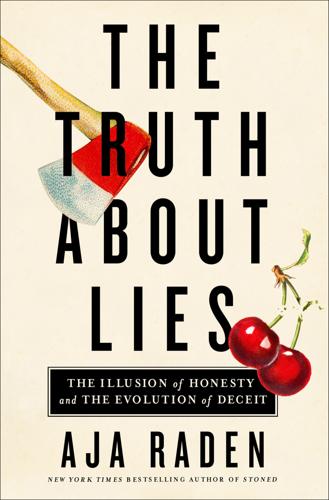
The Truth About Lies: The Illusion of Honesty and the Evolution of Deceit
by
Aja Raden
Published 10 May 2021
Everything they knew about you was so accurate, specific, and profound.… How could they know so much about you? About your feelings, your problems, your past, your future? It’s because you told them, and then you quite literally forgot that you did. You forget about all the misses, and you only remember the hits (which is called survivorship bias)—and you definitely don’t remember the fact that you’ve almost certainly offered up exponentially more information than was revealed in the reading. Unless you’ve run into an actual psychic—in which case, I promise you, they were not working as a fortune-teller. It’s All Fun and Games Till Someone Loses Their Mind Although it does beg the question: Why have we all met so many fake psychics?
…
It’s a foot in the door that allows them access to the mark and time to decipher their wants, their needs, and (most useful of all) their fears. Once insinuated, the Guru begins by flattering his mark, telling them all the things that they already need to believe are true, then gradually peppering this discourse with their own agenda. Lies and failures are airbrushed away by survivorship bias and the false-memory effect, and no matter how appalling his behavior, once he has your complete faith, the choke chain of confirmation bias demands it be denied or dismissed. But why those marks deliberately put themselves in a position to be conned in the first place—because they do, and they do it over and over—is a question worth asking.
…
See also Guru Con repeated exposure, in illusory truth effect research dental surgery study Milgram experiment pharmaceutical companies absence of pure Revere, Paul Romanov, Nicholas (Tsar) Rasputin and Rosalia (Saint) science, of placebo effect seed money, televangelists on selective reality selling thin air con 70 percent rule, for Pyramid Schemes shared objective reality Big Lie and flagrant lying exploitation of honesty bias acceptance from subversion of shared thinking, theory of mind on Shell Game Change Raising con Cups and Balls magic trick inattentional blindness Iran/Israel/Nicaragua nature of lying and perceptual cognition flaws and persistence of vision in physical perception and sleight of mind in Three-Card Monte Shroud of Turin Simons, Daniel on change blindness on inattentional blindness simple stupid coincidences, as Bait and Switch Slack, John Sleeping Eros, forgery of sleight of mind Smith, Jefferson Randolph “Soapy” Alaska telegraph wire deception of Three-Card-Monte use by Snake Oil Con Bailey Radithor tonic Chinese traditional medicine and dangerous drugs in FDA formation from illusory truth effect in Kellogg Battle Creek Sanitarium of Mesmer patent medicines in pharmaceutical marketing in placebo effect in Stanley “Rattlesnake King” Victorian opioid crisis and wellness industry Snoop Dogg social media, Vosoughi on misinformation in Specter, Michael Spiritualism Fox sisters proponents of magic versus Stanley, Clark “Rattlesnake King” Stevens, Al Stoppard, Tom Streep, Meryl subversion of shared objective reality in theory of mind Sumerian clay tablet, forgery of survivorship bias synthetic lab-grown diamonds, Long Con of televangelists Bakker as money and Osteen as theory of mind on belief about belief in Big Lie on disbelief mentalizing ability in on shared thinking subversion in Thoreau, Henry David Three-Card Monte Tiffany, Charles Tourney, Jack Trivers, Robert truth facts compared to illusory truth effect lie of absolute lie relationship with lies and general belief in 2016 election, as Hoax Twitter 2008 financial crisis as Bait and Switch banking Long Con in CDS in MBS in de Valfierno, Eduardo Valium, as placebo Victorian opioid crisis, Snake Oil Con and vision, persistence of visual cortex Vonnegut, Kurt Vosoughi, Soroush Walsh, David War of the Worlds (radio broadcast) The War of the Worlds (Welles) Weil, Joseph “Yellow Kid” Welles, Orson wellness industry FDA and wentletrap seashells, forgery of West, Kanye Wilde, Oscar Wilshire, Hal ALSO BY AJA RADEN Stoned: Jewelry, Obsession, and How Desire Shapes the World ABOUT THE AUTHOR AJA RADEN studied ancient history and physics at the University of Chicago and, during that time, worked as the Head of the Auction Division at the famed House of Kahn.
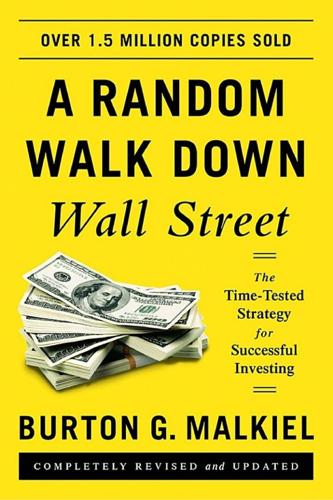
A Random Walk Down Wall Street: The Time-Tested Strategy for Successful Investing (Eleventh Edition)
by
Burton G. Malkiel
Published 5 Jan 2015
We can measure the long-term records of only 84 of those original funds because 274 of them no longer exist. Thus, the data in the exhibit suffer from “survivorship bias.” You can be sure that the surviving funds are the ones with the best records. There is a nasty secret in the mutual-fund industry that if you have a poorly performing fund, it does not reflect well on the managers of the mutual-fund complex. So the poorly performing funds tend to get merged into funds with better records, thereby killing off their embarrassing records. The surviving funds, measured in the exhibit, are the better-performing ones. But even with this survivorship bias in the data, observe how few of the original funds actually had superior records.
…
We cannot distinguish whether the abnormal returns are truly the result of inefficiencies, or whether they result from inadequacies in our measure of risk. The higher returns for smaller companies may simply be the requisite reward owed to investors for assuming greater risk. Moreover, the small-firm effect found in some studies may simply flow from what is called survivorship bias. Today’s list of companies includes only small firms that have survived—not the small firms that later went bankrupt. Finally, the dependability of the small-firm effect and its likelihood to continue is open to considerable question. Buying a portfolio of small firms is hardly a surefire technique to enable an investor to earn abnormally high returns.
…
Expense ratios of active funds are far higher than is the case in developed markets. Moreover, liquidity is lower and trading costs are higher in emerging markets. Therefore, after all expenses are accounted for, indexing turns out to be an excellent investment strategy. Ten years ended December 31, 2013 (net for fees, including survivorship bias). Source: Morningstar. A Specific Index-Fund Portfolio The table on page 389 presents specific index-fund selections that investors can use to build their portfolios. The table shows the recommended percentages for those in their mid-fifties—the group I call the “aging boomers.” Those who are not in their mid-fifties can use exactly the same selections and simply change the weights to those appropriate for their specific age group.
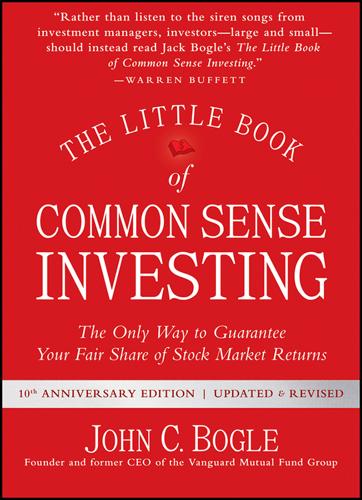
The Little Book of Common Sense Investing: The Only Way to Guarantee Your Fair Share of Stock Market Returns
by
John C. Bogle
Published 1 Jan 2007
Total Costs Net Return* Cumulative Return Risk** Risk- Adjusted Return One (lowest cost) 10.3% 0.71% 0.21% 0.91% 9.4% 855% 16.2% 8.9% Two 10.6 0.99 0.31 1.30 9.3 818 17.0 8.4 Three 10.5 1.01 0.61 1.62 8.9 740 17.5 7.8 Four (highest cost) 10.6 1.44 0.90 2.34 8.3 632 17.4 7.4 500 Index Fund 9.2% 0.04% 0.04% 0.08% 9.1% 783% 15.3% 9.1% *This analysis includes only funds that survived the full 25-year period. Thus, these data significantly overstate the results achieved by equity funds due to survivorship bias. **Annual standard deviation of returns. Costs matter! Exhibit 5.1 shows a 1.4 percent difference between the average expense ratio of funds in the highest-cost quartile and the lowest-cost funds. This cost differential largely explains the advantage in returns among the lowest-cost funds over the highest-cost funds.
…
Caution: The index fund’s annual risk-adjusted return of 9.1 percent over the past 25 years is all the more impressive since the returns of the active equity funds are overstated (as always) by the fact that only the funds that were good enough to survive the decade are included in the data. Adjusted for this “survivorship bias,” the return of the average equity fund would fall from 9.0 percent to an estimated 7.5 percent. What’s more, selecting the index fund eliminated the need to search for those rare needles in the market haystack represented by the very few active funds that have performed better than that haystack, in the often-vain hope that their winning ways will continue over decades yet to come.
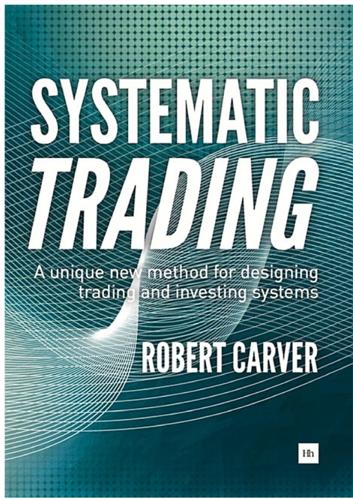
Systematic Trading: A Unique New Method for Designing Trading and Investing Systems
by
Robert Carver
Published 13 Sep 2015
It never really worked First there are rules which apparently work in a back-test, but wouldn’t have actually made money in the past. The rules might be over-fitted, which I will discuss at length in the next chapter. Alternatively they could rely on forward looking data that was published with a delay not present in the back-test. There may be also survivorship bias in the 29 Systematic Trading instruments you are considering.You might have underestimated trading costs or missed out an important element of the market structure at the time, such as constraints on short selling of equities. Finally your history could be too brief and miss out on a crucial period when the strategy would have blown up.23 The world changes You want strategies that worked in the past and will continue to do so.
…
See page x and page 245. Subsystem position The position nominally held by a single instrument’s trading subsystem, trading only one instrument with the entire trading capital, given a forecast of returns. Equal to the volatility scalar multiplied by forecast, divided by 10. See page 159. Survivorship bias A problem where assets that disappeared are missing from historic data sets, such as shares in firms which went bankrupt. Because we don’t see the losses from these instruments we are likely to overestimate how profitable investing really was in the past. Technical A kind of trading rule that uses only price data to predict prices, such as trend following; no fundamental data is used.
…
Thank you for that, and for everything. 301 Index 2001: A Space Odyssey, 19f 2008 crash, 170 Active management, 3 AIG, 2 Algorithms, 175, 199 Alpha, 3, 37, 106, 136 Alternative beta, 3-4 Amateur investors, 4, 6, 16, 48, 177, 210 and lack of diversification, 20 and over-betting, 21 and leverage, 35 and minimum sizes, 102 as day traders, 188 Anchored fitting: see Back-testing, expanding out of sample Annual returns, 178-179 Annualised cash volatility target, 137, 139, 149, 151, 159, 161, 171, 230, 250 Asset allocating investors, 3, 7, 42, 69, 98, 116, 147, 188, 225-244, 259 and Sharpe ratios, 46 and modular frameworks, 96 and the ‘no-rule’ rule, 116, 167, 196, 225, 228 and forecasts, 122-123, 159 and instrument weights, 166, 175, 189, 198-199 and correlation, 170 and instrument diversification multiplier, 175 and rules of thumb, 186 and trading speeds, 190-191, 205 and diversification, 206 Asset classes, 246&f Automation, 18-19 Back-testing, 5, 13-15, 16, 18, 19&f, 28, 53, 64, 67, 87, 113, 122, 146, 170, 182f, 187, 197, 205 and overfitting, 20, 29, 53f, 54, 68, 129f, 136, 145, 187 and skew, 40 and short holding periods, 43 in sample, 54-56 out of sample, 54-56 expanding out of sample, 56-57, 66, 71f, 84, 89f, 167f, 193-194 rolling window, 57-58, 66, 129f and portfolio weights, 69-73 and handcrafting, 85 and correlations, 129, 167&f, 175 and cost of execution, 179 simple and sophisticated, 186 need for mistrust of, 259 See also: Bootstrapping Barclays Bank, 1-2, 11, 31, 114 Barings, 41 Barriers to entry, 36, 43 Behavioural finance, 12 Beta, 3 Bid-Offer spread, 179 Block value, 153-154, 161, 182-183, 214, 219 Bollinger bands, 109 303 Systematic Trading Bond ETFs, 226 Bootstrapping, 70, 75-77, 80, 85-86, 146, 167, 175, 193-194&f, 199, 230, 248, 250 and forecast weights, 127, 205 see also Appendix C BP, 12, 13 Braga, Leda, 26 Breakouts, 109 Buffett, Warren, 37, 42 Calibration, 52-53 Carry, 67, 119, 123, 126, 127-128, 132, 247 and Skew, 119 Koijen et al paper on, 119f Central banks, 36, 103 Checking account value, recommended frequency, 149 Clarke, Arthur C, 19f ‘Close to Open’, 120-121 Cognitive bias, 12, 16, 17, 19-20, 28, 64, 179 and skew, 35 Collective funds, 4, 106, 116, 225 and derivatives, 107 and costs, 181 Commitment mechanisms, 17, 18 Compounding of returns, 143&f Contango: see Carry Contracts for Difference, 106, 181 Contrarians, 45 Corn trading, 247f Correlation, 42, 59f, 63, 68, 70, 73, 104, 107, 122, 129, 131, 167-168, 171 and Sharpe ratios, 64 and trading subsystems, 170 and ETFs, 231 Cost of execution, 179-181, 183, 188, 199, 203 Cost of trading, 42, 68, 104, 107, 174, 178, 181, 230 Credit Default Swap derivatives, 105 Crowded trades, 45 Crude oil futures, 246f Curve fitting: see over-fitting Daily cash volatility target, 137, 151, 158, 159, 161, 162, 163, 172, 175, 217, 218, 233, 254, 262. 270, 271, 217 Data availability, 102, 107 Data mining, 19f, 26-28 Data sources, 43-44 Day trading, 188 Dead cat bounces, 114 Death spiral, 35 DeMiguel, Victor, 743f Derivatives, 35 versus cash assets, 106 Desired trade, 175 Diary of trading, for semi-automatic trader, 219-224 Diary of trading, for asset allocating investor, 234- 244 Diary of trading, for staunch systems trader, 255- 257 Diversification, 20, 42, 44, 73f, 104, 107, 165, 170, 206 and Sharpe ratios, 65f, 147, 165 of instruments rather than rules, 68 and forecasts, 113 Dow Jones stock index, 23 Education of a Speculator, 17 Einstein, 70 Elliot waves, 109 Emotions, 2-3 Equal portfolio weights, 72-73 Equity value strategies, 4, 29, 31 Equity volatility indices, 34, 246, 247 Eurex, 180 Euro Stoxx 50 Index Futures, 179-180, 181, 182, 187-188, 193, 198 Eurodollar, trading recommendation, 247 Exchange rate, 161, 185 Exchange traded funds (ETFs), 4, 106, 183-184, 189, 197, 200, 214, 225, 226-228 holding costs of, 230 daily regearing of, 230f correlations, 231 Exchanges, trading on, 105, 107 Exponentially Weighted Moving Average Crossover 304 Index (EWMAC), 117-123, 126, 127-128, 132, 247 see also Appendix B Human qualities of successful traders, 259-260 Hunt brothers, 17 Fannie Mae and Freddie Mac, 2 Fees, 3 Fibonacci, 37, 109 Forecasts, 110-115, 121-123, 159, 175, 196, 211 scaling of, 112-113, 115, 133 combined, 125-133, 196, 248, 251 weighted average of, 126 and risk, 137 and speed of trading, 178 and turnover, 185 not changing once bet open, 211 see also Appendix D Forecast diversification multiplier, 128-133, 193f, 196, 249, 251 see also Appendix D Foreign exchange carry trading, 36 Fortune’s Formula, 143f FTSE 100 futures, 183, 210 Futures contracts, 181 and block value, 154-155 ‘Ideas First’, 26-27, 52-54, 103, 146 Ilmanen, Antti, 30f Illiquid assets, 198 Index trackers, 106 Inflation, 67 Instrument blocks, 154-155, 175, 182-183, 185, 206 Instrument currency volatility, 182-183, 203, 214 and turnover, 185, 195, 198 Instrument diversification multiplier, 166, 169-170, 171, 173, 175, 201, 206, 215, 229, 232, 253 Instrument forecast, 161, 162 Instrument riskiness, 155, 182 Instrument subsystem position, 175, 233 Instrument weights, 166-167, 169, 173, 175, 189, 198, 201, 202, 203, 206, 215, 229, 253 and Sharpe ratios, 168 and asset allocating investors, 226 and crash of 2008, 244 Gambling, 15, 20 Gaussian normal distribution, 22, 32&f, 39, 111f, 113, 114, 139f German bond futures, 112, 155, 181, 198 Gold, 246f Google, 29 Gross Domestic Product, 1 ‘Handcrafting’, 78-85, 116, 167-168, 175, 194, 199, 230, 248, 259 and over-fitting, 84 and Sharpe ratios, 85-90 and forecast weights, 127, 205 worked example for portfolio weights, 231-232 and allocation for staunch systems traders, 253 Hedge funds, 3, 177 High frequency trading, 6, 16, 30, 36, 180 Holding costs, 181 Housekeeping, daily, 217 for staunch systems traders, 254 Japan, 36 Japanese government bonds, 102, 112, 114, 200 JP Morgan, 156f Kahn, Richard, 42 Kaufman, Perry, 117 Kelly, John, and Kelly Criterion, 143-146, 149, 151 ‘Half-Kelly’ 146-147, 148, 230, 260 Koijen, Ralph, 119 Law of active management, 41-42, 43, 44, 46, 129f and Sharpe ratios, 47 Leeson, Nick, 41 Lehman Brothers, 2, 237 Leverage, 4, 21&f, 35, 95f, 138f, 142-143 and skew, 44-45 and low-risk assets, 103 and derivatives, 106 and volatility targeting, 151 realised leverage, 229 Life expectancy of investor, and risk, 141 305 Systematic Trading Limit orders, 179 Liquidity, 35, 104-105, 107 Lo, Andrew, 60f, 63f Long Term Capital Management (LTCM), 41, 46 Sharpe ratio of, 47 Low volatility instruments, need to avoid, 143, 151, 210, 230, 260 Lowenstein, Roger, 41, 46f Luck, need for, 260 Lynch, Peter, 37 Markowitz, Harry, 70, 72 Maximum number of bets, 215 Mean reversion trading, 31, 43, 45, 52, 213f ‘Meddling’, 17, 18, 19, 21, 136, 260 and forecasts, 115 and volatility targets, 148 Merger arbitrage, 29 Mid-price, 179, 181 Minimum sizes, 102, 107 Modular frameworks, 93, 95-99 Modularity, 5 Momentum, 42, 67, 68, 117 Moving averages, 94, 195, 197 MSCI, 156f Narrative fallacy, 20, 27, 28, 64 NASDAQ futures, 188 Nervousness, need for, 260 New position opening, 218 Niederhoffer, Victor, 17 Odean, Terence, 13, 20f Odysseus, 17 Oil prices, standard deviation of, 211 O’Shea, Colm, 94f Online portfolio calculators, 129f Overbetting, 21 Over the counter (OTC) trading, 105, 106, 107, 183f Overconfidence, 6, 17, 19f, 54, 58, 136 and lack of diversification, 20 and overtrading, 179 306 Over-fitting, 19-20, 27-28, 48, 51-54, 58, 65, 68, 121f, 156, 259 and Sharpe ratios, 46f, 47, 146 avoiding fitting, 67-68 of portfolio weights, 68-69 possibility of in ‘handcrafting’, 84 Overtrading, 179 Panama method, 247&f Passive indexing, 3 Passive management, 3, 4 Paulson, John, 31, 41 Pension funds, 3 ‘Peso problem’, 30&f Position inertia, 173-174, 193f, 196, 198, 217 Position sizing, 94, 153-163, 214 Poundstone, William, 143f Price movements, reasons for, 103, 107 Portfolio instrument position, 173, 175, 218, 254, 256, 257 Portfolio optimization, 70-90, 167 Portfolio size, 44, 178 Portfolio weighted position, 97, 99, 101, 109, 125, 135, 153, 165, 167, 177, 267 and diversification, 170 Price-to-earnings (P/E) ratios 4 Prospect theory, 12-13, 37 and momentum, 117 Quant Quake, the, 46 Raspberry Pi micro computers, 4 Relative value, 30, 43, 44-46, 213f Retail stockbrokers, 4 Risk, 39, 137-148, 170 Risk targeting, 136 Natural risk and leverage, 142 Risk parity investing, 38, 116&f Risk premia, 31, 119 RiskMetrics (TM), 156&f Roll down: see Carry Rolling up profits and losses, 149 Rogue Trader, 41 Rounded target position, 173, 175, 218 Index Rules of thumb, 186, 230 see also Appendix C Rumsfeld, Donald, 39&f Safe haven assets, 34 Schwager, Jack, 94f Self-fulfilling prophecies, 37 Semi-automatic trading, 4, 7, 11f, 18, 19f, 37, 38, 98, 163, 169, 209-224, 259 and portfolio size, 44, 203 and Sharpe ratios, 47, 147-148 and modular frameworks, 95 and trading rules, 109 and forecasts, 114, 122-123, 159 and eyeballing charts, 155, 195, 197, 214 and diversification, 166, 206 and instrument weights, 166, 175, 189 and correlation, 169 and trading subsystems, 169 and instrument diversification multiplier, 171, 175 and rules of thumb, 186 and overconfidence, 188 and stop losses, 189, 192 and trading speeds, 190-192, 205 Sharpe ratios, 25, 31-32, 34, 35, 42, 43, 44, 46-48, 53, 58, 60f, 67, 72, 73, 112, 184, 189, 210, 214, 250, 259 and overconfidence, 54, 136, 151 and rule testing, 59-60, 65 and T-Test, 61-63 and skew, 62f, 66 and correlation, 64 and diversification, 65f difficulty in distinguishing, 74 and handcrafting, 85-90 and factors of pessimism, 90 and risk, 137f, 138 and volatility targets, 144-145, 151 and speed of trading, 178-179, 196, 204 need for conservative estimation of, 195 and asset allocating investors, 225 and crash of 2008, 240 Schatz futures: see German bond futures Shefrin, Hersh, 13&f Short option strategies, 41 Short selling, 30, 37 Single period optimisation, 71, 85, 89 Skew, positive and negative, 32-34, 40-41, 48, 105, 107, 136, 139-141, 247, 259 and liquidity, 36 and prospect theory, 37 and risk, 39, 138 and leverage, 44-45, 142 and Sharpe ratios, 47, 62f, 146 and trend following, 115, 117 and EWMAC, 119 and carry, 119 and V2TX, 250 ‘Social trading’, 4f Soros, George, and sterling, 36f Speed of trading, 41-43, 47, 48, 104, 122, 174f, 177-205, 248 speed limits, 187-189, 196, 198-199, 204, 213, 228, 251, 260 Spread betting, 6, 106, 181, 197, 214 and block value, 154-155 and UK tax, 183f oil example, 214 Spreadsheets, 218 Stamp duty, 181 Standardised cost estimates, 203-205, 210, 226, 230 Standard deviations, 21-22, 31-32, 38, 40, 70, 103, 107, 111f, 129 and skew, 105 and forecasts, 112, 114, 128 recent, 155-158 returns, 167 and standardised cost, 182, 188, 192 and stop losses, 211 Static and dynamic trading, 38, 43, 168, 188 Staunch systems trading, 4, 7, 51-68, 69, 98, 109, 117-123, 167, 245-257 and Sharpe ratios, 46, 146, 189 and forecasts, 110-114, 122-123, 189 and instrument forecast, 161 and instrument weights, 166, 175, 198-199 and correlation, 170 and rules of thumb, 186 and trading speeds, 191-192, 205 307 Systematic Trading and back-testing, 193 and diversification, 206 Stop losses, 94-5, 115, 121f, 137f, 189, 192, 214, 216f, 217, 218 and forecasts, 211-212 and different instruments, 213 and price volatility, 216 Survivorship bias, 29 Swiss franc, 36, 103, 105, 142-143 System parameters, 186 Systematica hedge fund, 26 Taking profits and losses, 13-15, 16-18, 58, 94-95, 149 and trend following, 37 see also Appendix B Taleb, Nassim, 39f, 41 Tax (UK), 106, 183f Technical analysis, 18, 29 Technology bubble of 1999, 35 Templeton, John, 37 The Black Swan, 39f The Greatest Trade Ever, 31f, 41 Thorpe, Ed, 146f Thriftiness, need for, 260 Timing, 2 Too much/little capital, 206, 246f Trading capital, 150-151, 158, 165, 167, 178, 192, 199-202 starting low, 148 reducing, 149 and turnover, 185 daily calculation of, 217 Trading rules, 3-4, 7, 16, 25-26, 78, 95, 97-98, 101, 109, 121, 125, 135, 159, 161, 187, 249, 259 need for small number of, 67-68, 193 Kaufman, Perry’s guide to, 117 and speed of trading, 178, 205 cost calculations for, 204 see also Appendix B Trading subsystems, 98-99, 116, 159, 162, 163, 165, 166, 167&f, 169, 171f, 172, 175-176, 185, 187, 230, 251-252, 260 and correlation, 170 308 and turnover, 196 cost calculations for, 204 Traditional portfolio allocation, 167 Trend following, 28, 30, 37, 45, 47f, 67, 117, 137f, 194f, 212f, 247 and skew, 105, 115, 117, 213 Turnover, 184-186, 195, 197, 198, 205, 228, 260 methods of calculation, 204 back-testing of, 247-248 Twitter, 29 V2TX index, 246, 247, 249 Value at risk, 137 VIX futures, 105 Volatility, 21, 103, 107, 116, 129, 150, 226, 229 and targets, 95, 98, 106, 158, 159, 185 unpredictability of, 45 price volatility, 155-158, 162-163, 189, 196, 197, 200, 205, 214, 228, Appendix D and crash of 2008, 240-244 instrument currency volatility, 158, 161 instrument value volatility, 161, 172, 250 scalars, 159-160, 162, 185, 201, 206, 215, 217, 218, 229 look-back period, 155, 195-197 and speed of trading, 178 Volatility standardisation, 40, 71, 72, 73, 167, 182, 185 and forecasts, 112, 121, 129 and block value, 155 Volatility standardized costs, 247 Volatility targeting, 135-151, 171f, 188, 192, 201f, 213-215, 230, 233, 250, 259 Walk forward fitting: see Back testing, rolling window Weekly rebalancing process, for asset allocating investors, 233 When Genius Failed, 40, 46f Women as makers of investment decisions, 17&f www.systematictrading.org, 234 Zuckerman, Gregory, 31f THANKS FOR READING!
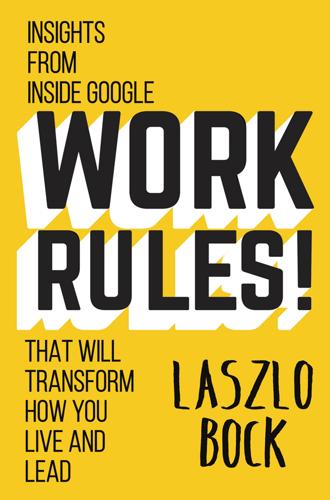
Work Rules!: Insights From Inside Google That Will Transform How You Live and Lead
by
Laszlo Bock
Published 31 Mar 2015
xxxviii Walking gets you wetter. xxxix This is also an example of survivorship bias, where you skew your analysis by considering only the survivors rather than the entire population. Analysts looking at the performance of start-up companies and hedge funds often make this error because they include only companies that are still around, and ignore those that fail or shut down along the way. This makes start-up and hedge-fund performance look rosier than it is. And, of course, relying too much on this book may also be an example of survivorship bias. There are certainly lessons to be learned from the illustrations in this book, but it’s important to consider the lessons of failed companies as well.
…
There are certainly lessons to be learned from the illustrations in this book, but it’s important to consider the lessons of failed companies as well. In People Operations we try to avoid survivorship bias in our analyses where possible. For example, we’ve tested some of our hiring practices by—in a double-blind fashion—hiring rejected candidates to see how they perform. xl As a former consultant, I can tell you that many tout engagement as a panacea. They measure engagement through a short questionnaire, typically including statements like: “I have a best friend at work,” “In the last seven days, I have received recognition or praise for doing good work,” or “My supervisor, or someone at work, seems to care about me as a person.”

The Missing Billionaires: A Guide to Better Financial Decisions
by
Victor Haghani
and
James White
Published 27 Aug 2023
Over longer periods, this non‐normal behavior tends to lessen, though there's still disagreement over whether the normal distribution is a sufficiently good model for long‐term returns. Limited historical data can result in a Sharpe ratio estimate that is significantly biased, due to sampling error, survivorship bias, or fat tails. These critiques aren't wrong, but like any tool, the Sharpe ratio has its uses and abuses and must be handled with some care and with a knowledge of its limitations. While there are certainly situations where the Sharpe ratio can be a misleading metric, we find it still a useful shorthand for investment quality in the case of many mainstream investment questions, although not a substitute for a more complete and robust framework, which we'll be discussing in Chapter 6.
…
Not as commonly known is that there were six other episodes in which investors lost 40% to 50%, two occurring since the turn of millennium. While these were painful market busts, we need to keep in mind that the US stock market has been a star performer on the world stage, and so focusing on US performance is likely to lead us to underestimate risk, an effect known as survivorship bias. We need to bear in mind that some markets didn't survive at all, such as those in Russia and China in the first half of the twentieth century. Stock returns exhibit fat tails, which arise partly from changes in market volatility through time. Markets are made of people, and people can get pretty carried away on occasion.
…
But neither expected returns nor equilibrium levels are directly observable; we can only observe realized returns along one path of the world, which may not be representative either of expected or equilibrium levels. The experience of the US equity market in the twentieth century may be an anomaly and not representative of general long‐term expected returns. It may be biased by an artificially high amount of survivorship bias, not to mention a doubling of the price‐earnings ratio over the period. A broader international survey of equity market excess returns finds the US equity market to have been among the best performing global stock markets.2 The large observed equity risk premium may be fair compensation for rare, unobserved, time‐varying, and largely unrealized disaster risks.
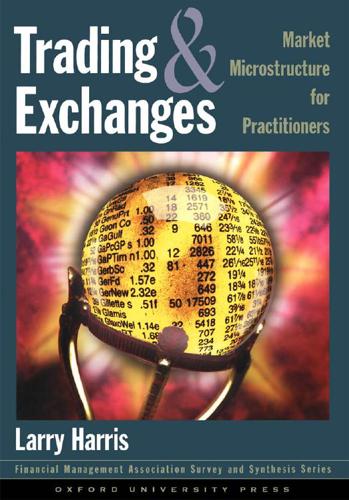
Trading and Exchanges: Market Microstructure for Practitioners
by
Larry Harris
Published 2 Jan 2003
Brown, Stephen J., William Goetzmann, Roger G. Ibbotson, and Stephen A. Ross. 1992. Survivorship bias in performance studies. Review of Financial Studies 5(4), 553–580. Chen, Zhiwu, and Peter J. Knez. 1996. Portfolio performance measurement: Theory and applications. Review of Financial Studies 9(2), 511–555. Ellis, Charles D. 1975. The loser's game. Financial Analysts Journal 31(4), 19–20, 22, 24, 26; reprinted in Financial Analysts Journal 51(1), 95–100. Elton, Edwin J., Martin J. Gruber, and Christopher R. Blake. 1996. Survivorship bias and mutual fund performance. Review of Financial Studies 9(4), 1097–1120.
…
New public offerings, information, and investor rationality: The case of publicly offered commodity funds. Journal of Business 62(1), 1–16. French, Dan W., and Glenn V. Henderson, Jr. 1985. How well does performance evaluation perform? Journal of Portfolio Management 11(2), 15–18. Fung, William, and David A. Hsieh. 1997. Survivorship bias investment style in the returns of CTAs. Journal of Portfolio Management 24(1), 30–41. Garcia, C. B., and F. J. Gould. 1993. Survivorship bias. Journal of Portfolio Management 19(3), 52–56. Grinblatt, Mark, and Sheridan Titman. 1989. Portfolio performance evaluation: Old issues and new insights. Review of Financial Studies 2(3), 393–422. Hau, Harald. 2001. Location matters: An examination of trading profits.
…
They may also kill them because they do not want to report their performance. In either event, by killing poorly performing funds, they raise the computed average performance of the surviving funds. The average performance of all funds may be negative, but you could not know this without knowing about the other funds. This type of sample selection bias is called the survivorship bias. Some large mutual fund companies start many new mutual funds every year. They keep the ones that perform well and kill the ones that fail. In this way, they are able to create the winners that they need to market their funds. If you are unaware of this process, you may give too much significance to past returns.

Investing Amid Low Expected Returns: Making the Most When Markets Offer the Least
by
Antti Ilmanen
Published 24 Feb 2022
See Ben Dor et al. (2021) for more detail. 39 See Brooks-Gould-Richardson (2020) and Palhares-Richardson (2020). 40 Simple active return over benchmark seems positive over the long run for most managers, unlike active returns for equity managers. There are three explanations: Most overweight credit beta (so the outperformance does not count even as one-factor alpha); the data set may reflect gross-of-fee performance; and returns may be overstated by survivorship bias. 41 See Chapter 6 for evidence on style premia in equity and other markets. See Israel-Palhares-Richardson (2018) for FI applications and evidence. Chapter 5 Illiquidity Premia Private illiquid asset classes are a small part of investable wealth, but a steadily growing share of institutional portfolios.
…
It also fits well with Hertwig-Erev's (2009) work on so-called description-experience gap in risky choice where people overweigh their own experience over an objective description of risky prospects. This topic seems worthy of further research. 12 The literature on selection biases, such as survivorship bias and incubation bias, has focused on hedge funds but applies to any manager or strategy universes. See Black (1993) on data mining concerns, Cochrane (2011) on factor zoo, Bailey-Lopes de Prado (2014) on deflating performance metrics, Harvey-Liu-Zhu (2016) on diagnostics and remedies, and Hou-Xue-Zhang (2020) on replicating anomalies.
…
Review of Financial Studies 22(5), 1915–1953, Dhillon, Jusvin; Antti Ilmanen; and John Liew (2016), “Balancing on the Life Cycle: Target-Date Funds Need Better Diversification,” Journal of Portfolio Management 42(4), 12–27. Dichev. Ilia (2007), “What are stock investors' actual historical returns? Evidence from dollar-weighted returns,” American Economic Review 97(1), 386–401. Dimensional (2020), “Why worry about survivorship bias?” Insights Oct 2, 2020. Dimson, Elroy; Oguzhan Karakas; and Xi Li (2015), “Active ownership,” Review of Financial Studies 28(12), 3225–3268. Dimson, Elroy; Paul Marsh; and Mike Staunton (2002), Triumph of the Optimists: 101 Years of Global Investment Returns, Princeton University Press. Dimson, Elroy; Paul Marsh; and Mike Staunton (2005), Global Investment Returns Yearbook 2005, ABN.

This Book Could Fix Your Life: The Science of Self Help
by
New Scientist
and
Helen Thomson
Published 7 Jan 2021
(In a twist, Derren later reveals that he placed his own money on the horse that actually won and gives her his £13,000 winnings.) Derren’s trick eloquently represents something scientists call ‘survivorship bias’, or what is sometimes known as ‘the tale of forgotten failures’. When we focus on successful people and try to identify the characteristic that separates them from everyone else – Steve Jobs’s temper or Sandberg’s high IQ – we come to the conclusion that it must be these things that helped them get where they are. We forget that there are thousands of others with a strong temper or a high IQ who weren’t successful. Survivorship bias is the Achilles heel of any self-help manual (by the way, it didn’t end well for Achilles, either): individual stories, or the bit of the story that presents itself to you or seems worth telling, is not the whole story.
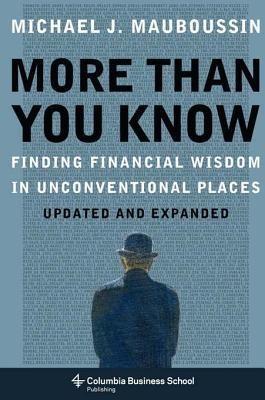
More Than You Know: Finding Financial Wisdom in Unconventional Places (Updated and Expanded)
by
Michael J. Mauboussin
Published 1 Jan 2006
While ten years is insufficient to complete the reversion-to-the-mean process, much of the progression is evident within that time frame. Consistent with theory, attrition plays a central role in the improvement of lowest-quartile returns. Just 60 percent of the lowest-quartile companies were active after five years, as many of the poor performers went bankrupt or were acquired. This attrition creates a survivorship bias, allowing returns to rise during the decade. In contrast, 85 percent of the firms in the highest-return quartile were active after five years. Attrition rates across all quartiles tend to average out after five years. One consistent feature across the many mean-reversion studies is that some companies (albeit not many) can and do earn persistently high returns.
…
Shefrin, Hersh Shleifer, Andrei short-term focus Siegel, Jeremy Simpson, Lou simulation situations, evaluation of six degrees of separation skill skin-conductance-response machine Sklansky, David slime mold Slovic, Paul snowball effect social sciences Social Security social systems, power laws and social validation software Sornette, Didier Soros, George space shuttle catastrophe species distribution speculation Stalin, Josef stall point Steinhardt, Michael stock market: as complex adaptive system; crash of 1987, investor diversity and outperforming stocks parallels with insect colonies Stocks for the Long Run (Siegel) strategic options strategy. See competitive strategy streaks of success luck and skill and stress long-term focus required loss of control and predictability physical responses to Strogatz, Steven Sull, Don Sundahl, David Sunder, Shyam Surowiecki, James survivorship bias sustained recovery system 1 and 2 thinking systems Taleb, Nassim Nicholas. target prices tax rates Technology Review technology stocks television industry Thaler, Richard H. theory: attribute-based approach; building, steps of; falsifiability Thorp, Ed time horizons timing rules tipping point total return to shareholders (TRS) tracking error transaction costs traveling-salesman problem Treynor, Jack Tupperware parties Tversky, Amos Twain, Mark two-by-two matrix Ulysses uncertainty classifications expectations and U.S.

Investment: A History
by
Norton Reamer
and
Jesse Downing
Published 19 Feb 2016
The equity premium puzzle was described first in a 1985 paper by Rajnish Mehra and Edward Prescott.47 The central “puzzle” is that while investors should be compensated more for holding riskier equities than holding the risk-free instrument (Treasury bills), the amount by which they are compensated seems extremely excessive historically. In other words, it seems that equity holders have been “overpaid” to take on this risk. This paper set off a flurry of responses in the years after publication. There were some who suggested that it was merely survivorship bias that explained this phenomenon; that is, there were stocks that went bankrupt or otherwise delisted and so this high premium was not real after all.48 Others suggested that there were frictions unaccounted for, such as transaction costs. The behavioral economists mounted a different set of explanations.
…
The second, to which adherents of the market efficiency movement belong, holds that active management in the long term is usually not fruitful and that in general the capital markets are quite efficient in terms of pricing. Because of this, it has been significantly cheaper and much more productive for investors to select indexed vehicles. Some in this camp believe the origins of some of the best track records of active managers are produced by survivorship bias; that is, there are many failed investors for every great investor, and what separates greatness from failure is often luck or fortunate market tailwinds. The fees on “tracker” or “passive” funds, which make no claims to beating the market and simply try to replicate it in most instances, are just a few basis points (hundredths of a percentage point)—a far cry from the “2 percent and 20 percent” being charged by active hedge fund and private equity managers in the independent investment management world (see figure 9.2).
…
See Standard & Poor’s 500 speculation: art, stamps, coins, and wine, 283; in derivatives, 221; excesses, 197; impacts of, 232; value and, 4–5 spinning jenny, 71 split-strike conversion, 151–52 sponsor, 286–87 Stabilizing an Unstable Economy (Minsky), 214 Stagecoach Corporate Stock Fund, 284–85 Standard & Poor’s 500 (S&P 500), 187, 228, 285, 305–6, 309 Stanford, Allen, 153–56 Stanford, Leland, 155 Stanford Financial Group, 154 Starbucks, 277 State Street Corporation, 299 State Street Global Advisors, 299 State Street Investment Trust, 141 statistical arbitrage, 267 steam engine, 71 steamships, 90 Stefanadis, Chris, 94 sterling, 65 stock company, 134 stock exchanges: national or international, 94; new, 96; regional, 94–95 stock market: dislocations, 205; in England, 86–87; in Paris, 85 stock ownership: age and, 93–94; direct and indirect, 91, 93; gender and, 93–94; regulations prohibiting too much, 123; study of, 96; in United States, 90–94, 97 stock ticker, 89–90; network, 95 stones (horoi), 27, 60 Strong, Benjamin, 200–203, 206, 226 strong-form efficiency, 249 Studebaker-Packard Corporation, 111 sub hasta (public auction), 50 subprime, 39 subprime-mortgage lending, 223 Suetonius, 59 sugar consumption, in England, 75, 77 Sumerian city-states, 15–16 supply curve, 229 Supreme Court, 108 survivorship bias, 252 swap spread, 266 Swensen, David, 296, 328 SWFs. See sovereign wealth funds tail risk, 240, 246–47 taksitum (total profit), 52 Tammany Hall, 179 TARP. See Troubled Assets Relief Program TASS database, 269, 271 434 Investment: A History tax (gun mada), 16 taxes: carried interest and, 308; cuts, 219; endowments and, 124; ETFs and, 286; foundations and, 126–27; pensions and, 109–10, 112; REITs and, 281 Tax Reform Act of 1969, 126 Technical Revolution, 70 technology: bubble, 187, 223–24, 246, 263, 276, 287; public markets and, 89–90; venture capital and, 277–79 tegata (promissory notes), 46 telegraph, 89 telephone, 90, 95 Tellier, Walter, 179–80 temple bank (Siku), 29 tenant farmers, 17 Texas Gulf Sulphur, 193 Textron, 275 Thaler, Richard, 252 Theory of Interest, The (Fisher), 231 Theory of Investment Value, The (Williams, J.), 4, 232 “Theory of Speculation” (Bachelier), 230 thrifts, 135 Tiger Fund, 263 Timaeus (Plato), 24 timber, 282, 332 “tipping,” 192 Tobin, James, 231, 241–42 Tokistes, or Usurer, The (Alexis and Nicostratus), 24 “too big to fail,” 216, 219–20 Total Fitness Center, 154 total profit (taksitum), 52 totorum bonurum provisions, 52 Townsend, Francis, 107–8 trade: China and, 48; cities and, 42–43; commerce and, 8, 40–50; in goods compared to securities, 84; in India, 48–49; in Japan, 44–46, 60; Mediterranean Sea and, 41–42; in Mesopotamia, 41; rice, 45–46; in West, 40–42 trade associations, 48–49 trade clearing system, 174 trading frauds: Kerviel and Société Générale, 172–74; Leeson and Barings Bank, 170–72 transatlantic cable, 89 transparency: lack of, 130; level of, 98, 126 Treasury: Great Recession and, 217–18, 225; policies of, 197 Treasury Board, 175 Troubled Assets Relief Program (TARP), 218 trusteeship, 24 trusts, 55 Truth in Securities Act, 211 tutorship, 58 Tversky, Amos, 251–52 Twain, Mark, 161 Tweed, William, 179 UAW.
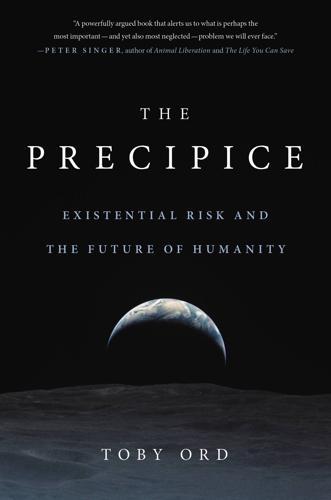
The Precipice: Existential Risk and the Future of Humanity
by
Toby Ord
Published 24 Mar 2020
These suggest a risk in the range of 0.001 to 0.01 percent per century—or lower if we think we are more robust than a typical species (see Table 3.5). Note that all these estimates of species lifespans include other causes of extinction in addition to catastrophes, for example being slowly outcompeted by a new species that branches off from one’s own. So they will somewhat overestimate the risk of catastrophic extinction.65 SURVIVORSHIP BIAS There is a special difficulty that comes with investigating the likelihood of an event which would have prevented that very investigation. No matter how likely it was, we cannot help but find that the event didn’t occur. This comes up when we look at the extinction history of Homo sapiens, and it has the potential to bias our estimates.66 Imagine if there were a hundred planets just like our own.
…
This makes us realize that we too can’t deduce much about our future survival just from the fact that we have survived so far. However, we can make use of the length of time we have survived (as we do in this chapter), since there is more than one value that could be observed and we are less likely to see long lifespans in worlds with high risk. But a full accounting for this form of survivorship bias may still modify these risk estimates.67 Fortunately, estimating risk by analyzing the survival of other species is more robust to these effects and, reassuringly, it provides similar answers. Species: Homo neanderthalensis Years: 200,000 Best Guess: 0.05% Species: Homo heidelbergensis Years: 400,000 Best Guess: 0.025% Species: Homo habilis Years: 600,000 Best Guess: 0.02% Species: Homo erectus Years: 1,700,000 Best Guess: 0.006% Species: Mammals Years: 1,000,000 Best Guess: 0.01% Species: All species Years: 1,000,000–10,000,000 Best Guess: 0.01–0.001% TABLE 3.5 Estimates of total natural extinction risk per century based on the survival time of related species.
…
However, it appears that species lifespans within each family are indeed fairly well approximated by a constant hazard rate (Van Valen, 1973; Alroy, 1996; Foote & Raup, 1996). 65 This could also be said of the previous method, as Homo sapiens is arguably a successful continuation of the species before it. 66 This special form of survivorship bias is sometimes known as anthropic bias or an observation selection effect. 67 My colleagues and I have shown how we can address these possibilities when it comes to estimating natural existential risk via how long humanity has survived so far (Snyder-Beattie, Ord & Bonsall, 2019). We found that the most biologically plausible models for how anthropic bias could affect the situation would cause only a small change to the estimated probabilities of natural risk. 68 All dates given are for when the event ended.
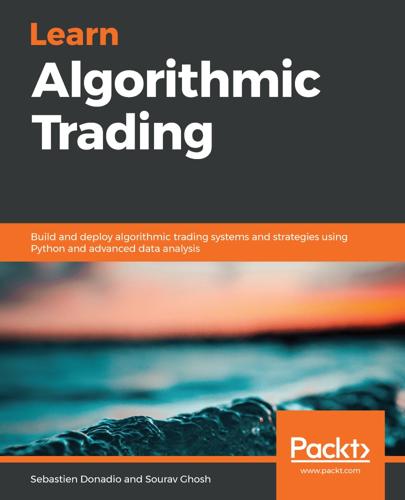
Learn Algorithmic Trading
by
Sebastien Donadio
Published 7 Nov 2019
However, there are rules to be followed in order to be as close as possible to the real market: Training/testing data: As with any models, you should not test your model with the data you use to create this model. You need to validate your data on unseen data to limit overfitting. When we use machine learning techniques, it is easy to overfit a model; that's why it is capital to use cross-validation to improve the accuracy of your model. Survivorship-bias free data: If your strategy is a long-term position strategy, it is important to use the survivorship-bias free data. This will prevent you from focusing on winners alone without considering the losers. Look-ahead data: When you build a strategy, you should not look ahead to make a trading decision. Sometimes, it is easy to make this mistake by using numbers calculated using the whole sample.
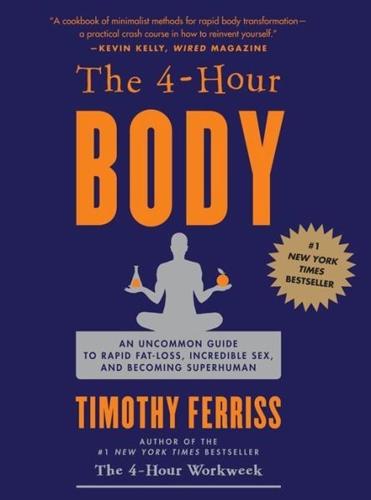
The 4-Hour Body: An Uncommon Guide to Rapid Fat-Loss, Incredible Sex, and Becoming Superhuman
by
Timothy Ferriss
Published 1 Dec 2010
The challenge of the missing dropouts belies a common weakness with questionnaires that are open to the public: those most likely to respond are often those who have had positive results.8 This is a form of survivorship bias, a concept well worth understanding. Looking at average mutual fund returns from last year to pick a winner? Don’t forget that you are asking the survivors. The casualties—what Nassim Taleb refers to as “silent evidence”—aren’t around to be polled. The “average” returns are less impressive if you can include the people who bet the farm and lost. Finding those dead bodies is hard, especially in finances, when there is so much incentive to cover them up. In practical terms, does this mean our diet results are bogus? Not at all. The possibility of survivorship bias isn’t proof that the numbers aren’t representative.
…
The vast majority of the total (144), those who averaged 19–20 pounds lost, ate three or four times per day, as recommended. COUNTING CALORIES SEEMS LIKE A NO-BRAINER, BUT IT’S NOT. 27 pounds lost vs. 20—again, the conclusion may seem obvious: calorie counting helps. Alas, it just ain’t that simple. First, more than in any other cohort in these data, this is where I suspect survivorship bias applies. 35 of 194 respondents counted calories. How many tried to count calories, which I do not recommend, and quit the diet altogether after finding counting tedious, impossible, or inconvenient? Second, do calorie counters really lose more weight because of counting calories? Or is it because they’re more attentive to the tracking in general and hold themselves more accountable?
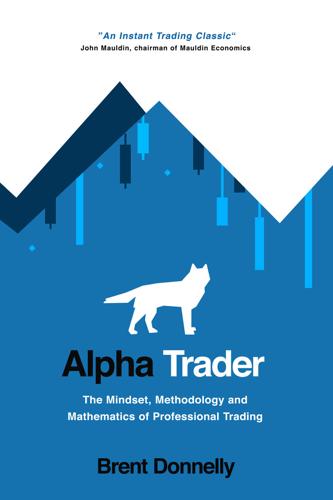
Alpha Trader
by
Brent Donnelly
Published 11 May 2021
The answer, of course, is that the planes that got shot in the engine went down and were destroyed, so they couldn’t be examined. There are no bullet holes in the engines of the planes that return to base because the planes that are shot in the engine don’t make it back to base. Victims shot in the heart don’t make it to the ER. Survivorship bias is the phenomenon where we evaluate a sample (say planes returning from battle or mutual funds) and then draw conclusions based on that sample without considering all the parts of the sample that did not survive. We look at planes that returned to base without considering the ones that got shot down.
…
Thorp}, 248, 349, 492 mantra, trader, 461 market efficiency, 42, 484 market catalysts, 309—310 central bank action/speech, 309 company news, 309 in correlated market, 310, 311 domestic politics, 309 international geopolitics, 309 technical breakout, 310, 311 market events, overtrading and, 188—189 market orders, 70, 418 market structure, important markers of, 440—449 order versus chaos, 440—445 rangebound versus trending, 447—449 volatility, 445—447 See also fast markets, trading market structure, major changes to, 450, 476 adapting to, 449—451 Market Wizards (J. Schwager}, 161, 298, 491 math facts, counterintuitive, 247—259 Arcsine Law/random walk process, 251—254 averages, 250—251 bat and ball problem, 248—249 incomplete samples, 257—258 log returns, 249—250 non-linear relationships, 255—256 probability, 254—255 survivorship bias, 257—258 math literacy. See numeracy Mauboussin, Michael, 363, 491 Mauldin, John, 492 Mauro, Joe, 469 McCloskey, Deirdre, 243, 245 mean reversion, 312, 313, 443 Japanese retail investors and, 273 rangebound markets and, 447—448 as trading style/strategy, 173, 206, 207, 324 VIX and, 289 media, narrative and, 301, 302 media bias, staying objective and, 235—236 meditation, 106, 131, 135, 158, 383 meetings, scheduling, 131, 136 mental endurance, 93—94 mentalizing, 68, 69, 71 mentors, 97, 146 bank traders and, 40 risk-taking environment and, 154 Merkel, Angela, 425 Merkel/Macron European recovery plan agreement, 402, 404, 425, 430 EURUSD rally after, 426 microstructure, market, 295, 323, 391 bid/offer spread, 272 gap risk, 272, 279—282 intraday activity patterns, 272, 283—288 liquidity, 272, 275-283 transaction costs, 272 types of participants, 272, 273—275 volatility, 272, 286, 288—294 Milken, Michael, 87 Mind Over Markets (J.
…
Gardner), 81, 103, 492 superstitions, 459—460 support and resistance, 327—331 EURNOK hourly 4/20 to 9/20, 329—330, 330 GBPUSD hourly chart 7/16 to 9/15/20, 327—328, 325 gold hourly chart 7/16 to 9/26/20, 328—329, 329 how to identify in market, 327 as significant reference point, 327—331 survivorship bias, 257—258 distribution of bullet holes in damaged US fighter planes, 257 in sports gambling industry, 258 in trading, 258 SwiftTrade, 457 Swiss franc, 262 Swiss National Bank, 280 abandons 1.20 EURCHF floor and cuts rates, 208, 209 symmetry, 331-333 USDCAD Daily Oct 2019 to Sept 2020, 332, 332 USDCNH Daily Jan 2019 to Sept 2020, 333, 333 System 1 thinking, 64, 67, 84, 179, 248, 249 versus System 2 thinking, 64, 484 System 2 thinking, 64, 66, 67, 70, 179, 249, 259 versus System 1 thinking, 64, 484 tactics, trading, 323, 392, 412—416 automation of execution process, 413, 414 choosing best product/market, 392, 412 determining entry point, 392, 412—413 determining stop loss, 392, 413, 414 determining take profit, 392, 413, 414 reassessment trigger list, 392, 414—415 take profit, 227 determining, 392, 413, 414 trigger, 195 Taleb, Nassim, 81, 247, 492 talent, success and, 52, 58, 71 technical analysis, 323—325, 391 as edge, 160—161, 167 filtering trade ideas and, 409—411 as risk management tool, 324, 325 tactical edge and, 323 as tactical execution tool, 324, 325 as timing tool, 323, 324, 347 See also reversal patterns; significant reference points (SRPs); symmetry Technical Analysis of Financial Markets (J.
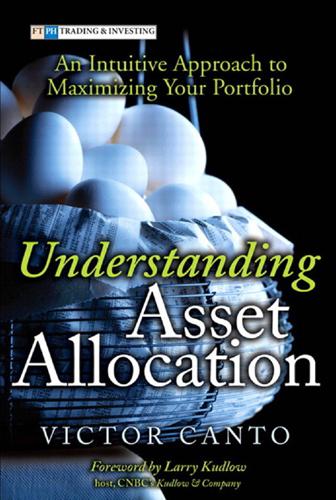
Understanding Asset Allocation: An Intuitive Approach to Maximizing Your Portfolio
by
Victor A. Canto
Published 2 Jan 2005
“The Efficient Frontier Using Alpha ‘ Cores.’” Morgan Stanley Equity Research North America (January 7, 2005). Brown, Stephen J., William N. Goetzmann, and Roger G. Ibbotson. “Offshore Hedge Funds: Survival and Performance 1989–95.” Journal of Business 72, No. 1 (January 1999): 91–117. ———, ———, ———, and Stephen A. Ross. “Survivorship Bias in Performance Studies.” Review of Financial Studies 5, No. 4 (Winter 1992): 553–80. Campbell, John .,Y and Robert J. Shille r. “Valuation Ratios and the Long-Run Stock Market Outlook.” Journal of Portfolio Management 24, No. 2 (1998): 11–26. Bibliography 293 ——— and Tuomo Vuolteenaho. “Bad Beta, Good Beta.”
…
“Rates of Return on Investments in Common Stocks: The ear-by-Y Y ear Record, 1926–1965.” Journal of Business 41 (July 1968): 291–316. Freiman, Eckhard. “Economic Integration and Country Allocation in Europe.” Financial Analyst Journal 54, No. 5 (September/October 1998): 32–41. Fung, William, and David Hsieh. “Survivorship Bias and Investment Style in the Returns of CTAs.” Journal of Portfolio Management 24, No. 1 (Fall 1997): 30–41. Goetzmann, William N., and Roger G. Ibbotson. “Do Winners Repeat? Patterns in Mutual Fund Performance.” Journal of Portfolio Management 20, No. 2 (Winter 1994): 9–18. Good, Walter R. “When Are Price/Earnings Ratios Too High-or Too Low?”
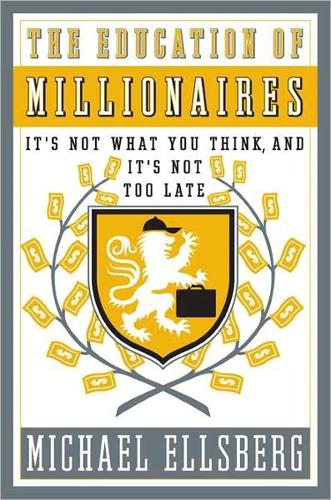
The Education of Millionaires: It's Not What You Think and It's Not Too Late
by
Michael Ellsberg
Published 15 Jan 2011
Critics of my book will likely say that what sets them apart is they simply took bigger risks than others: the people I interviewed were simply the winners at the roulette wheel, and I failed to talk about all the people who played at the wheel and got wiped out. (This line of critique would charge me with a fallacy of statistical reasoning known as “survivorship bias”: making assertions about some process based on conclusions drawn only via looking at the “winners” of that process, without taking into account the experience of the—usually much larger—sample of losers.5 ) And yet, I don’t believe the people I feature in this book simply took a bigger bet than everyone else and happened to get lucky and win.
…
Later in his book, he argues that more hours in school training hard in academic subjects, not fewer hours, is essential for inner-city kids’ success. 6 Shapiro, p. 782. 7 Williams, accessed January 15, 2010. 8 Kleinfield, accessed October 9, 2009. 9 Pink (2001), locations 197–199 on Kindle edition. 10 Pink, locations 810–819 on Kindle edition. 11 Pink, location 843 on Kindle edition. ■ SUCCESS SKILL #1 1 Johnson, location 1035 on Kindle edition. 2 Johnson, locations 2696–2714 on Kindle edition. 3 Komisar, p. 154 4 Komisar, pp. 65–66. 5 For a detailed and brilliant exposition of survivorship bias, see Taleb. 6 Godin (2010 A), accessed April 3, 2010. 7 Moskovitz, accessed March 22, 2010. ■ SUCCESS SKILL #2 1 Cohen, accessed December 13, 2010. 2 Bertoni, accessed December 13, 2010. 3 One of his product lines, the David DeAngelo series of trainings for men, is quite controversial.
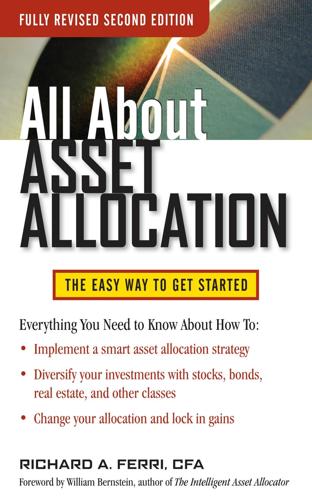
All About Asset Allocation, Second Edition
by
Richard Ferri
Published 11 Jul 2010
There are several companies that monitor the performance of hedge funds, although those published numbers are often biased. Some monitoring companies are paid by the hedge funds to promote the funds they report on. Other monitoring companies use flawed data collection methodologies. For instance, they do not include the performance of funds that have closed or merged. This produces an upward survivorship bias in the hedge fund indexes. When a hedge fund has a bad quarter, the managers may simply choose not to report the results. This leads to a selection bias in the index performance. Most monitoring companies allow a newly reporting fund to “backfill” performance with simulated historic returns that no investor actually earned.
…
INDEX A Actively managed funds, 21, 97 Advisors, 8, 14–15, 313–315 Alternative investments, 189–215, 214t collectibles, 211–214, 212f, 213f commodities, 191–206, 193f, 195f, 201f, 202f, 204t hedge funds, 206–211, 208t list of, 214–215 American Depositary Receipts (ADRs), 129 Asset allocation, ix–xi, 41–64, 63f correlation analysis, 47–53, 57–61 fallibility of, 62–64 history of, 41–44 rebalancing, 44–47 risk and return, 53–57 strategies for, xiv–xv two-asset-class model for, 53 (See also specific topics) Asset allocation stress test, 278–284, 281t, 283t Asset classes, 18–19 with low or varying correlation, 95–97 with low-cost availability, 97–98 range of volatility in, 34–35 with real expected return, 94 REITs as, 175–179 (See also Multi-asset-class investing; specific classes) B Backfill bias, 209 Basis points, 77 Bear markets, 276–277, 294–295 Behavioral finance, 271–289 asset allocation stress test, 278–284, 281t, 283t bear markets, 276–277 observations from, 273–275 personal risk tolerance, 275 rebalancing risk, 284–285 risk avoidance, 285–286, 286t risk tolerance questionnaires, 277–278, 287–289 Beta, 116 Bond market, global, 148–149, 163 Bonds, 19, 89, 90, 148–156 corporate, 72–75 credit risk with, 152–155 emerging market, 164–165 forecasting returns, 228–229, 238–240 high-yield corporate bonds, 157–159 investment-grade, 152–157 maturity structure, 151–152 tax-exempt municipal, 148, 165–166 U.S., 88–89 “your age in bonds,” 243–244, 266–270, 295–296 (See also specific bond types) Bulletin-board stocks, 104, 104t C Canadian stocks, 138–139 Cash/cash-type investments, 10 Changing allocation, 291–299 guidelines for, 298–299 just before retirement, 294–295 and periodic market data, 296–297, 297f reasons for, 292 when goals are within reach, 293–294, 293f when investing for others, 295–296 Collectibles, 211–214, 212f, 213f Commercial real estate investments, 173–175 331 332 Commodities, 30, 189–195, 193f, 195f, 200–206, 201f, 202f, 204t, 224 indexes for, 194–195, 200–201 in portfolios, 201–203 real return on, 94 and supply and demand, 192–194 Commodity funds, 89 Commodity futures, 196–201, 197f, 200f, 203 Computer simulations, 81–82 Corporate bonds, 72–75, 151, 157–159, 229t, 230f Correlation, 47–53, 51t inconsistency of, 57–61, 95 low or varying, 95–97 measuring, 50 negative and positive, 48, 95 for real estate investments, 179–183 with U.S. stocks and bonds, 89 in well-diversified portfolios, 62 Costs of investing (see Fees and costs) Credit risk, 152–155, 153t, 154f, 155f Currency risk, 128–129, 128f, 133t D Default risk (bonds), 158–159 Deflation, 239 Developed markets, 130, 163 Developed-market indexes, 132–134 Diversification, 41, 43f, 55f, 59f, 60f, 60t, 62, 90 within funds, 97 with microcap stocks, 110, 113 rebalancing for, 45 with small-cap value stocks, 121–125 (See also Multi-asset-class investing) Dividends, 235–238 Dollar cost averaging, 309–311 E EAFE Index, 132–138, 133t, 134f, 136f, 138t, 140f Early savers, 244, 247–251, 250f, 250t, 251t Economic factor forecasting, 233–235 Efficient frontier, 54, 54f, 58–59, 66, 123, 124 Index Efficient market theory (EMT), 43 Emerging markets, 98–99, 130–131, 139–141, 140f, 140t, 141f, 163 Equity REITs, 176–183 Exchange-traded funds (ETFs), 311–313 of alternative assets, 214 capital gains on, 305–306 costs and fees with, 303, 304 for global diversification, 99 international, 144 in investment plan, 11–13, 21–22 low cost of, 97 Expectations for returns, 219 (See also Forecasting) F Factor performance analysis: in forecasting, 233–235 international equities, 142–143 U.S. equities, 109–121 Fad investing, 13–14 Fear of regret, 274–275 Federal Reserve, 235 Fees and costs, 301–315, 302t comparing fund expenses, 303–305 cost of taxation, 305–308 index funds and ETFs, 304f, 311–313 low-fee advisors, 313–315 and performance, 302–303 and tax swaps, 308–311 Fixed-income investments, 147–169, 150f, 156t, 167f, 167t, 168t, 223f bond market structure, 148–149 corporate bonds, 72–75 credit risk, 152–155 example of, 166–167 forecasting returns, 238–240 foreign market debt, 163–165 high-yield corporate bonds, 157–159 investment-grade bonds, 155–157 list of, 167–168 maturity structure, 151–152 risk and return with, 149–151 tax-exempt municipal bonds, 165–166 TIPS, 28, 29, 159–163 (See also specific investments) Index Forecasting, 13, 219–242, 234f, 236f, 241t creating forecasts, 240–241 and dividends, 235–238 economic factor, 233–235 Federal Reserve and GDP growth, 235 fixed income returns, 238–240 and inflation, 225–226 market returns, 220–221 risk-adjusted returns, 221–225 stacking risk premiums, 226–232 Foreign market debt, 163–165 Foreign stocks (see International equity investments) Frontier markets, 132 Fund expenses, 303–305 Fundamental differences, 90–93 G Global markets, 98–99, 98f, 129–132, 131f, 135f, 137f Government bonds, 151, 164f, 165f (See also Treasury bonds) Gross domestic product (GDP), 234f, 235 Growth stocks, 108, 114–116, 119–121 H Hedge funds, 190–191, 206–211, 208t High-yield corporate bonds, 157–159, 158f Home ownership, 173, 183–186, 259 I Index funds, 21–22, 304f, 311–313 commodities, 203–206 costs and fees with, 303–304 for global diversification, 99 low cost of, 97 U.S. equity, 125–126 value vs. growth, 92–93 Indexes, 106, 116–121, 118t, 119f, 120f bond, 155–157, 163–164 collectibles, 212–214 commodities, 194–195, 200–201 developed-market, 132–134 EAFE, 132–138 333 emerging market, 139–141 hedge fund, 209–210 international, 68–70 microcap, 111–113 midcap, 111 REIT, 177–178, 180–182 U.S. equities, 105 Inflation, 103, 221 and forecasting, 225–226 and interest rates, 238–240, 239f and real expected return, 94 and rental properties, 173 Inflation-protected securities, 28, 29, 162–163 [See also Treasury Inflation-Protected Securities (TIPS)] International equity investments, 127–145, 142t, 144t allocation of, 137–138, 143 Canadian stocks, 138–139 currency risk, 128–129, 128f, 133t developed-market indexes, 132–134 EAFE Index, 132–138, 133t, 134f, 136f, 138t, 140f emerging markets, 139–141, 140f, 140t, 141f global markets, 129–132, 131f, 135f, 137f list of, 143–144 in multi-asset-class investing, 68–72 size and value factors, 142–143 Investment plan, 3–23 academics’ views of, 19–20 asset allocation in, 15–16 asset classes in, 18–19 avoiding bad advice, 14–15 characteristics of, 4–6 and fad investing, 13–14 monitoring and adjusting, 16–18 mutual funds and ETFs in, 11–13 and overanalysis of market data, 22 and professional advice, 8 selection of investments, 21–22 and shortcuts, 6–7 types of assets in, 9–11 Investment policy statement (IPS), xiii, 5 334 Investment pyramid, 9–11, 9f, 245–247, 246f Investment risk, 25–39 defining, 29–31 and myth of risk-free investments, 26–29 as running out of money in retirement, 31–32 volatility as, 32–38 Investment styles, 19 Investment-grade bonds, 152–157 L Large-cap stocks, 107–109, 117t, 119 Large-cap style indexes, 117 Liability matching, 253–254 Life-cycle investing, 17–18, 243–270 early savers, 247–251, 250f, 250t, 251t investment pyramid in, 245–247, 246f and life phases, 244–245 mature retirees, 263–266, 265f, 265t, 266t midlife accumulators, 252–256, 255f, 255t, 256t modified “your age in bonds” for, 266–270 transitional retirees, 256–262, 261f, 262t Limited partnerships (real estate), 174 Long-term investments, 10 Low-cost asset classes, 97–98 Low-fee advisors, 313–315 M Market data, 22, 296–297 Market returns, forecasting, 220–221 Market risk factor, 116, 272 Markets: bear, 276–277, 294–295 bond, 148–149 developed-market indexes, 132–134 and dividends, 235–238 emerging, 139–141 foreign market debt, 163–165 global, 98–99, 129–132 Index overanalysis of market data, 22 periodic market data, 296–297 stock, 103–105 (See also specific markets) Markowitz, Harry, 41–43 Mature retirees, 244–245, 263–266, 265f, 265t, 266t Microcap stocks, 107–113, 110t, 111f, 124f Midcap stocks, 107–109, 111–113, 111f Midlife accumulators, 244, 252–256, 255f, 255t, 256t Modern portfolio theory (MPT), viii, 43–44, 79, 171, 189, 271 Morningstar classifications, 106–109, 107f, 108t, 109f Morningstar ratings, 14 Multi-asset-class investing, 65–83, 67f corporate bonds, 72–75, 73t, 74f example of, 75–79, 76f, 76t, 78–79f for expanding the envelope, 66–67 international stocks, 68–72, 69t, 70f, 71f Municipal bonds, tax-exempt, 148, 165–166 Mutual funds, 30, 92f, 93f, 148 of alternative assets, 214 capital gains on, 305–306 commodities, 203–206 costs and fees with, 303–305 emerging market, 131 global equity, 130 high-yield bonds, 159 international, 144 in investment plan, 11–13 in late 1990s, 92–93 low-cost fixed-income, 167–168 no-load actively managed, 97 REIT, 174, 175, 187 swapping, 308–309 (See also Index funds) N Nasdaq, 103, 104, 104t New York Stock Exchange (NYSE), 103, 104, 104t No-load actively managed funds, 97 Index Noncorrelation, 48–53, 51f Northwest quadrant, 54, 55f, 66, 80 P Passive funds, 21 Pension plans, 30, 258–259 Performance: factor performance analysis, 109–121 and fees, 302–303 and future results, 14 and investment cost, 302–303 long-term, 16 (See also Forecasting; Returns) Portfolio building (see Investment plan; Life-cycle investing) Portfolio risk, 26, 275 Price-to-earnings (P/E) ratio, 236–238, 237f Pricing bias, 209 Primary market, 103 Professional advisor(s), 8, 14–15, 313–315 R Real estate investment trusts (REITs), 174–182f, 186–187, 187t Real estate investments, 171–187, 172t commercial, 173–175 correlation analysis, 179–183 home ownership, 183–186, 259 list of, 186–187 REITs, 174–182f, 186–187, 187t Real return, 161 on commodities, 94 on U.S. stocks and bonds, 102–103 Rebalancing, 44–47, 46t, 55, 59, 67, 284–285 Regression to the mean, 45 Retirement: bear markets just before, 294–295 and life-cycle investing, 256–266 running out of money in, 31–32 Returns, 35–38, 35t, 56t, 222t and asset allocation, 20 expectations for (see Forecasting) fixed-income, 149–151, 238–240 on international investments, 68–70 335 market, 220–221 with multi-asset-class investing, 75–77 real, 94, 161 on real estate investments, 171–173 on REITs, 180–183 and risk, 35, 53–57, 61f, 223f risk-adjusted, 221–225, 221t on U.S. equity investments, 102–103, 102t Risk: credit, 152–155, 153t, 154f, 155f currency, 128–129, 128f, 133t default, 158–159 with fixed-income investments, 149–151 investment, 25–39 perceived, 26 rebalancing, 284–285 with REITs, 180–183 and return, 35, 53–57, 61f, 221–225, 223f with small-cap value stocks, 121–125 volatility as, 32–38 Risk avoidance, 285–286, 286t Risk diversification, 90, 121–125 Risk premiums, stacking, 226–232, 232t Risk tolerance, 17, 275 Risk tolerance questionnaires, 16–17, 277–278, 287–289 Risk-adjusted returns, 221–225, 221t Risk-free investments, myth of, 26–29 Rolling correlations, 58f, 96, 96f S Secondary market, 103 Selecting investments, 21–22, 87–100 four-step process for, 88 with fundamental differences, 90–93 in global markets, 98–99 guidelines for, 89–98 with low or varying correlation, 95–97 with low-cost availability, 97–98 with real expected return, 94 U.S. stocks and bonds, 88–89 Index 336 Selection bias, 209 Size factor: international equity investments, 142–143 U.S. equity investments, 106, 107 Size risk factor, 116 Small-cap stocks, 107–109, 118t, 121–125, 122t, 123f, 124f, 230–231, 231f Small-cap style indexes, 117–118 Social Security, 10, 11, 258–259 Speculative capital, 11 Stacking risk premiums, 226–232, 232t Standard deviation, 33–38, 34f, 37t, 38t Stock markets, 105 1987 crash, 30–31 in 1990s, 276 in 2007–2009, 276–277 during crises, 89 Stocks, 19, 89–90, 229–230 Canadian, 138–139 international, 68–72 (See also International equity investments) small-cap value, 121–125 U.S., 88–89 (See also U.S. equity investments) Style factor, 107–109 Survivorship bias, 209 T Tax swaps, 308–311, 309f, 310t Tax-deferred accounts, 306–307 Taxes, 19 and after-inflation returns, 225–226 on bonds, 165–166 on commodity funds, 205–206 as investment expense, 305–308 on T-bill returns, 27–28 Tax-exempt municipal bonds, 148, 165–166 Total risk, xi–xii, 43f Transitional retirees, 244, 256–262, 261f, 262t Treasury bills (T-bills), 26–28, 27f, 28f, 151–152, 152f, 225–227, 226f Treasury bonds, 72–75, 151–152, 160–163, 161f, 229t Treasury iBonds, 162–163 Treasury Inflation-Protected Securities (TIPS), 28, 29, 156, 159–163, 161f, 162f, 227–228, 228f, 240 Treasury notes, 152f Two-asset-class model, 53 U Unit investment trusts (IUTs), 97 U.S. bond investments, 88–89 U.S. equity investments, 101–126, 125t, 140f, 141f, 230f and broad stock market, 105 and currency risk, 128–129 factor performance analysis, 109–121 history of returns on, 102–103 list of, 125–126 and market structure, 103–104 Morningstar classification methods, 106–109 selecting, 88–89 sizes and styles of, 106–109 small-cap value and risk diversification, 121–125 V Value risk factor, 116, 142–143 Value stocks, 108, 114–116, 119–125, 231f Volatility, 222, 224, 225f of commodity prices, 94 of foreign stocks, 127–128 of international stocks, 71, 72 as investment risk, 29, 32–38 measuring, 32–34, 33f, 34f price, 29–30 Y Yield spread, 74 “Your age in bonds” approach, 243–244, 266–270, 295–296
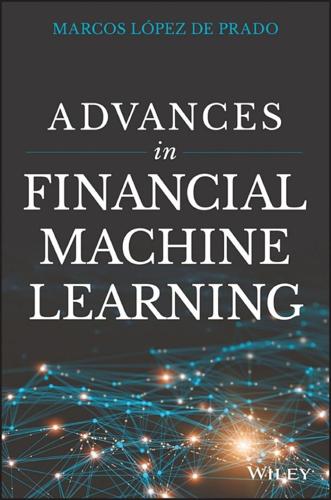
Advances in Financial Machine Learning
by
Marcos Lopez de Prado
Published 2 Feb 2018
In 2014 a team of quants at Deutsche Bank, led by Yin Luo, published a study under the title “Seven Sins of Quantitative Investing” (Luo et al. [2014]). It is a very graphic and accessible piece that I would advise everyone in this business to read carefully. In it, this team mentions the usual suspects: Survivorship bias: Using as investment universe the current one, hence ignoring that some companies went bankrupt and securities were delisted along the way. Look-ahead bias: Using information that was not public at the moment the simulated decision would have been made. Be certain about the timestamp for each data point.
…
See Scikit-learn Stacked feature importance Standard bars (table rows) dollar bars purpose of tick bars time bars volume bars Stationarity data transformation method to ensure fractional differentiation applied to fractional differentiation implementation methods for integer transformation for maximum memory preservation for memory loss dilemma and Stop-loss, and investment strategy exit Stop-loss limits asymmetric payoff dilemma and cases with negative long-run equilibrium and cases with positive long-run equilibrium and cases with zero long-run equilibrium and daily volatility computation and fixed-time horizon labeling method and investment strategies using learning side and size and optimal trading rule (OTR) algorithm for strategy risk and triple-barrier labeling method for Storytelling Strategists Strategy risk asymmetric payouts and calculating implied betting frequency and implied precision and investment strategies and understanding of portfolio risk differentiated from probabilistic Sharpe ratio (PSR) similarity to strategy failure probability and symmetric payouts and Structural breaks CUSUM tests in explosiveness tests in sub- and super-martingale tests in types of tests in Sub- and super-martingale tests Supernova research Support vector machines (SVMs) Supremum augmented Dickey-Fuller (SADF) test conditional ADF implementation of quantile ADF Survivorship bias SymPy Live Synthetic data backtesting using experimental results using simulation combinations with optimal trading rule (OTR) framework using Tick bars Tick imbalance bars (TIBs) Tick rule Tick runs bars (TRBs) Time bars description of fixed-time horizon labeling method using Time-decay factors, and sample weights Time period, in backtesting Time series fractional differentiation applied to integer transformation for stationarity in stationarity vs. memory loss dilemma in Time under water (TuW) definition of deriving example of run measurements using Time-weighted average price (TWAP) Time-weighted rate of returns (TWRR) Trading rules investment strategies and algorithms in optimal trading rule (OTR) framework for overfitting in Transaction costs, in quantitative investing Tree clustering approaches, in asset allocation Triple-barrier labeling method Turnover costs Variance boosting to reduce causes of ensemble methods to reduce random forest (RF) method for Vectorization Volume bars Volume imbalance bars (VIBs) Volume runs bars (VRBs) Volume-synchronized probability of informed trading (VPIN) Walk-forward (WF) method backtesting using overfitting in pitfalls of Sharpe ratio estimation in two key advantages of Walk-forward timefolds method Weighted Kendall's tau Weights.
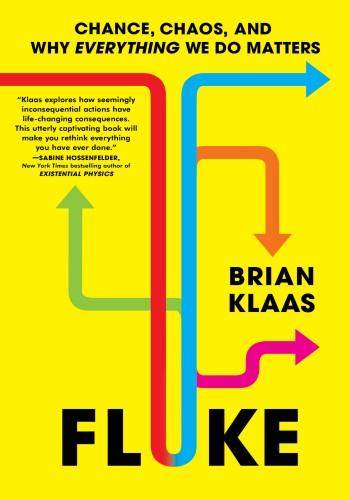
Fluke: Chance, Chaos, and Why Everything We Do Matters
by
Brian Klaas
Published 23 Jan 2024
Even the famous, now-extinct dodo emerged from a founder event, when a wayward group of Asian pigeons landed on Mauritius millions of years ago, put on some weight, and lost the ability to fly. No hidden purpose guided the asthmatic islanders or lost pigeons. They were just accidents. These ideas are related to a concept called survivorship bias, in which we can only observe that which has survived. Much of our knowledge of cavemen comes from cave paintings. It’s possible some didn’t live in caves and painted more often on the bark of trees, so we should think of them as treemen. But the trees are long gone, so we can’t say, while the cave paintings survived.
…
See also evolution nature, oneness with, 31, 33 nature–nurture dichotomy, 45 Nazism, 1, 162, 177 “negative capability,” 262 neural networks, 28, 159, 226, 231 neuroscience, 12, 67, 74, 133, 242 schemas and, 170 storytelling and, 137 Newton, Isaac, 16, 23, 33, 107, 254 laws of, 16, 22, 227 Principia (1687), 227 Nietzsche, Friedrich, 253 Obama, Barack, 120, 121 On the Banks of Plum Creek (Wilder), 82 On the Origin of Species (Darwin), 39, 176 Orent, Arika, 191 Orgel’s second rule, 257 Ortelius, Abraham, 173n Orthodox Judaism, 129 outliers, 104, 214 overview effect, astronauts and, 29 Page, Scott, 97 Pagel, Mark, 51 Paltrow, Gwyneth, 47, 223 pandemics, 12, 28, 87, 97, 101, 190 paradigm shift, 173 parasites, 35, 41 Pareto distribution, 43 Parfit, Derek, 36, 37, 159n Pascal, Blaise, 107 past-present-future relationship: assumption of past as guide for the future, 106–7 chain-link past, 8 determinism and, 222 Laplace’s demon and, 23–24 present moment tied to threads from the past, 21 time travel and, 6 path dependency, 90–91, 148–49 pattern detection, 70–71, 77 PAX6 gene, 15 peer review, 198, 201, 202 philosophy, 11, 32–33, 227 phrenology, 177 physics, 11, 12, 22–23, 30, 88, 237 comparison with social science, 211 determinism and, 222, 223 discarded theories in, 112 free will and, 232 Newtonian, 22, 23, 227 quantum physics, 72, 109–10, 228 roll of dice and, 42n Pillsbury, John S., 82n Pine Tree Riot (New Hampshire, 1772), 144–45 Pinker, Steven, 67 Pitt, Brad, 259 Pittman, Colonel Samuel, 168 Planck, Max, 109 Poincaré, Henri, 263 Poisson distribution, 73 political parties, 92 political science, 11, 88, 148, 196 Popova, Maria, 247 Popper, Karl, 172 pratītyasamutpāda (“dependent origination”), 226 precognition, 201 presidential election (2016), 116, 167, 208–9 presidential election (2020), 156, 157 primates, life in trees and, 145–46 Princip, Gavrilo, 99 Principia (Newton, 1687), 227 probabilities, 37, 106, 114, 165, 228 belief-type, 117 frequency-type, 117 Hume’s definition of, 108 stationary and nonstationary, 120, 125 theory of, 107 weather forecasting and, 115–16 “prosperity theology,” 34 Protestantism, 33–34 Protestant Reformation, 92 “Protestant work ethic,” 34, 153 psychology, 12, 199, 242 publication bias, 202 punditry, 75 Putin, Vladimir, 101 P values, hacking of, 199–201, 203 quantum mechanics, 111, 211, 220, 237 Bohmian mechanics, 229 Copenhagen interpretation, 228 Quetelet, Adolphe, 108 racism, 150, 151, 242 Radical Uncertainty (Kay and King), 118 Randall, Lisa, 14 randomness, 5, 13, 45, 70, 88 exploration of the unknown and, 261 of genetic mutations and variations, 48–49 ignored in evolutionary change, 57 misfortune and, 44 neutral molecular theory and, 61 quantum mechanics and, 228 storytelling and, 137 unsatisfying to narratives, 73 Randomness in Evolution (Bonner), 58n Rarámuri people, 33 rational-choice theory, 16, 131–33, 165 reality: complexity of, 30 as interconnectedness, 27 limitations of sense perception and, 67–69 “manifest image” of, 66 narrative arc missing from, 140 relational nature of, 37 storybook version of, 7, 13, 131, 160–61, 196, 199, 247 red heifer, messianism and, 129–31 reductionism, 35 regularity, 20, 86–87, 91, 103 relational view, 32, 33, 37 religion, 11, 74, 134 basins of attraction and, 92 unity with natural world and, 33 replication crisis, 198–99, 200 retroviruses, 40 Rift Valley (East Africa), 146–47 ripple effects, 159, 177, 244, 255, 264 risk, 106, 113, 196 Ritchie, Stuart, 198 Roman and Greek numerals, 107 Romer, Paul, 213 Rosa, Hartmut, 249 rounding errors, 25 Rovelli, Carlo, 185 Royal Navy, British, 144 Ruelle, David, 165 Rumsfeld, Donald, 123 Russell, Jack, 192 Sally, David, 210 sandpiles, 97, 98, 101 Saudi Arabia, discovery of oil reserves in, 149–50 schemas, 169, 170 Schrödinger’s equation, 111, 228 science, 34, 108, 109 philosophy of science, 172–73 scientific revolution, 22 strong-link problems and, 209–11 sea turtles, light used as shortcut by, 78 second order desires, 236–37 Secret, The (Byrne), 250, 251 self-help books, 19–20, 31, 249, 251, 255 self-organized criticality, 96, 97 September 11, 2001, terrorist attacks, 54, 134, 135, 182–83, 184, 190, 208 Shaw, George Bernard, 10 Sheen, Martin, 235 Sheldrake, Merlin, 35 Shiller, Robert, 138, 139 shocks, 97, 104 Shortcut Creature, 65, 67, 68, 70, 78, 79 signaling, 169–70 signal-noise relationship, 27, 46, 204, 214 Silver, Nate, 105, 116, 120, 208–9 Simmel, Marianne, 71 Simpson, George Gaylord, 173, 174 simulations, 25, 43 Sliding Doors (film, 1998), 47, 57, 223 Smith, Adam, 16, 131, 164 soccer ball, tourist off Greek coast saved by, 20–21, 28, 57 social science, 11, 75, 112–13, 150, 195 easy and hard problems of social research, 197, 203, 205, 217 file drawer problem, 201, 202 Fragile Families Challenge, 216–17 Holy Grail of Causality, 216 misuse of mathematics in, 213–14 P-hacking and, 199–201, 203 replication crisis, 198–99, 200 sociology, 49, 88, 108, 196, 199 space-time, 143 spiritualism, 171 split-brain experiments, 74 stability, 13, 88, 95, 254 causes of World War I and, 98 comforting routine and, 13 dictatorships and, 206 global instability, 87 global stability, 85 illusion of, 92, 103 local instability, 85 local stability, 86 of political systems, 9 statistics, 108, 119 Stimson, Henry L., 1–3, 10, 17, 27, 127, 250, 255 stock market, 91, 103 Stokes, Pringle, 174–75, 178 Stone Age, 85, 86 Story Paradox, The (Gottschall), 140 strong-link problems, 210–11 structuration, 243 Structure of Scientific Revolutions, The (Kuhn, 1962), 172–73 supernatural powers, 22 superstition, 72–73, 75, 113, 258, 259 supply-and-demand curve, 89 supply-chain disruptions, 28 survivorship bias, 60 swarms, 82–84, 87, 96, 97, 102 synaptic pruning, 67 Szymborska, Wislawa, 254 Tackett, Jennifer, 200n Taleb, Nassim Nicholas, 28, 43, 93, 124 tectonic plates, movements of, 143, 146, 147, 155, 173–74 teleological bias, 75–76 Temple Mount (Jerusalem), 129–30 terrorism, 97 theology, 227 Thompson, D’Arcy, 42 Thompson, E.

Irrational Exuberance: With a New Preface by the Author
by
Robert J. Shiller
Published 15 Feb 2000
Glassman and Kevin Hassett, Dow 36,000: The New Strategy for Profiting from the Coming Rise in the Stock Market (New York: Times Business/Random House, 1999), p. 140. 13. See, for example, William Goetzmann and Roger Ibbotson, “Do Winners Repeat? Patterns in Mutual Fund Performance,” Journal of Portfolio Management, 20 (1994): 9–17; Edwin J. Elton, Martin Gruber, and Christopher R. Blake, “Survivorship Bias and Mutual Fund Performance,” Review of Financial Studies, 9(4) (1996): 1097–120; and “The Persistence of Risk-Adjusted Mutual Fund Performance,” Journal of Business, 69 (1996): 133–37. 14. To the extent that mutual funds make better diversification possible for individual investors, they lower the riskiness of stocks, and therefore the proliferation of mutual funds may lower the risk premium that investors require.
…
Eichengreen, Barry, James Tobin, and Charles Wyplosz. “Two Cases for Sand in the Wheels of International Finance.” Economic Journal, 105 (1995): 162–72. Elias, David. Dow 40,000: Strategies for Profiting from the Greatest Bull Market in History. New York: McGraw-Hill, 1999. Elton, Edwin J., Martin Gruber, and Christopher R. Blake. “Survivorship Bias and Mutual Fund Performance.” Review of Financial Studies, 9(4) (1996): 1097–1120. ———. “The Persistence of Risk-Adjusted Mutual Fund Performance,” Journal of Business, 69 (1996): 133–37. Fair, Ray C. “How Much Is the Stock Market Overvalued?” Unpublished paper, Cowles Foundation, Yale University, 1999.

The Clash of the Cultures
by
John C. Bogle
Published 30 Jun 2012
During that long period, as shown in Exhibit 4.2, the cumulative wealth gains created on an initial investment of $10,000 in the unmanaged 500 Index exceeded the average comparable actively managed equity fund—an enhancement in wealth of more than 50 percent. Exhibit 4.2 Returns of Large-Cap Equity Mutual Funds: $10,000 Invested over 15 Years (1997–2011) Source: Morningstar, adjusted for survivorship bias. As such, these returns are substantially lower than those displayed in Exhibits 4.3 and 4.4, which include survivorship bias. Large Cap Category Annual Return Investment Gain From Original $10,000 Investment Core Funds 3.9% $7,750 Growth Funds 3.7 7,250 Value Funds 4.6 9,630 Average 4.1% $8,270 S&P 500 Index 5.4% $12,010 Exhibit 4.3 Fund Returns versus Investor Returns Over 15 Years (1997–2011) Source: Morningstar.
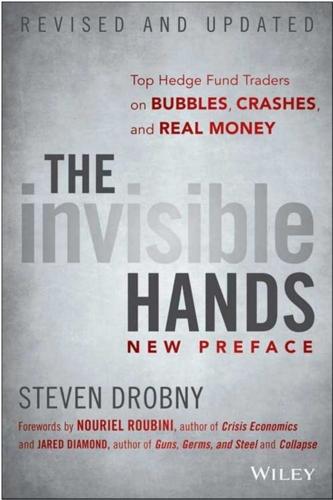
The Invisible Hands: Top Hedge Fund Traders on Bubbles, Crashes, and Real Money
by
Steven Drobny
Published 18 Mar 2010
If I am a pension fund manager, I am going to be worried about interest rates going up on a forward basis and inflation in a low-growth world, which does not necessarily lead me to equities. The challenge with investment committees or boards is not that they only meet quarterly but that they tend to drive portfolios to the things that have performed well recently—the things that are in vogue. The focus is too oriented on “survivorship bias.” At these extremes, on the upside or the downside, people do not interpolate based on the current data set but rather extrapolate based on recent past experience. Said another way, they chase returns, and that is a big problem. Good macro investors try to do the inverse: at extremes they interpolate based on small data points and do not necessarily try to extrapolate Armageddon or euphoria.
…
See Risk premia payment Price/earnings (P/E) multiples, exchange rate valuation (relationship) Primary Dealer Credit Facility, placement Prime broker risk Princeton University (endowment) Private equity cash flow production tax shield/operational efficiency arguments Private sector debt, presence Private-to-public sector risk Probability, Bayesian interpretation Professor, The bubble predication capital loss, avoidance capital management cataclysms, analysis crowding factor process diversification efficient markets, disbelief fiat money, cessation global macro fund manager hedge fund space historical events, examination idea generation inflation/deflation debate interview investment process lessons LIBOR futures ownership liquidity conditions, change importance market entry money management, quality opportunities personal background, importance portfolio construction management positioning process real macro success, personality traits/characteristics (usage) returns, generation risk aversion rules risk management process setback stocks, purchase stop losses time horizon Titanic scenario threshold trades attractiveness, measurement process expression, options (usage) personal capital, usage quality unlevered portfolio Property/asset boom Prop shop trading, preference Prop trader, hedge fund manager (contrast) Protectionism danger hedge process Public college football coach salary, public pension manager salary (contrast) Public debt, problems Public pensions average wages to returns endowments impact Q ratio (Tobin) Qualitative screening, importance Quantitative easing (QE) impact usage Quantitative filtering Random walk, investment Real annual return Real assets Commodity Hedger perspective equity-like exposure Real estate, spread trade Real interest rates, increase (1931) Real macro involvement success, personality traits/characteristics (usage) Real money beta-plus domination denotation evolution flaws hedge funds, differentiation impacts, protection importance investors commodity exposure diversification, impact macro principles management, change weaknesses Real money accounts importance long-only investment focus losses (2008) Real money funds Commodity Hedger operation Equity Trader management flexibility frontier, efficiency illiquid asset avoidance importance leverage example usage management managerial reserve optimal portfolio construction failure portfolio management problems size Real money managers Commodity Investor scenario liquidity, importance long-term investor misguidance poor performance, usage (excuse) portfolio construction valuation approach, usage Real money portfolios downside volatility, mitigation leverage, amount management flaws Rear view mirror investment process Redemptions absence problems Reflexivity Rehypothecation Reichsmarks, foreign holders (1922-1923) Relative performance, inadequacy Reminiscences of a Stock Operator (Lefèvre) Renminbi (2005-2009) Repossession property levels Republic of Turkey examination investment rates+equities (1999-2000) Reserve currency, question Resource nationalism Returns forecast generation maximization momentum models targets, replacement Return-to-worst-drawdown, ratios (improvement) Reward-to-variability ratio Riksbank (Sweden) Risk amount, decision aversion rules capital, reduction collars function positive convexity framework, transition function global macro manager approach increase, leverage (usage) measurement techniques, importance parameters Pensioner management pricing reduction system, necessity Risk-adjusted return targets, usage Risk assets, decrease Risk-free arbitrage opportunities Risk management Commodity Hedger process example game importance learning lessons portfolio level process P&L, impact tactic techniques, importance Risk premia annualization earning level, decrease specification Risk/reward trades Risk-versus-return, Pensioner approach Risk-versus-reward characteristics opportunities Roll yield R-squared (correlation) Russia crisis Russia Index (RTSI$) (1995-2002) Russia problems Savings ratio, increase Scholes, Myron Sector risk, limits Securities, legal lists Self-reinforcing cycles (Soros) Sentiment prediction swings Seven Sisters Sharpe ratio increase return/risk Short-dated assets Short selling, ban Siegel’s Paradox example Single point volatility 60-40 equity-bond policy portfolio 60-40 model 60-40 portfolio standardization Smither, Andrew Socialism, Equity Trader concern Society, functioning public funds, impact real money funds, impact Softbank (2006) Soros, George self-reinforcing cycles success Sovereign wealth fund Equity Trader operation operation Soybeans (1970-2009) Special drawing rights (SDR) Spot price, forward price (contrast) Spot shortages/outages, impact Standard deviation (volatility) Standard & Poor’s 500 (S&P500) (2009) decrease Index (1986-1995) Index (2000-2009) Index (2008) shorting U.S. government bonds, performance (contrast) Standard & Poor’s (S&P) shorts, coverage Stanford University (endowment) State pension fund Equity Trader operation operation Stochastic volatility Stock index total returns (1974-2009) Stock market increase, Predator nervousness Stocks hedge funds, contrast holders, understanding pickers, equity index futures usage shorting/ownership, contrast Stops, setting Stress tests, conducting Subprime Index (2007-2009) Sunnies, bidding Super Major Survivorship bias Sweden AP pension funds government bond market Swensen, David equity-centric portfolio Swiss National Bank (SNB) independence Systemic banking crisis Tactical asset allocation function models, usage Tactical expertise Tail hedging, impact Tail risk Take-private LBO Taleb, Nassim Tax cut sunset provisions Taxes, hedge Ten-year U.S. government bonds (2008-2009) Theta, limits Thundering Herd (Merrill Lynch) Time horizons decrease defining determination shortening Titanic funnel, usage Titanic loss number Titanic scenario threshold Topix Index (1969-2000) Top-line inflation Total credit market, GDP percentage Total dependency ratio Trade ideas experience/awareness, impact generation process importance origination Traders ability Bond Trader hiring characteristics success, personality characteristics Trades attractiveness, measurement process hurdle money makers, percentage one-year time horizon selection, Commodity Super Cycle (impact) time horizon, defining Trading decisions, policy makers (impact) floor knowledge noise level ideas, origination Tragedy of the commons Transparency International, Corruption Perceptions Index Treasury Inflation-Protected Securities (TIPS) trade Triangulated conviction Troubled Asset Relief Program (TARP) Turkey economy inflation/equities (1990-2009) investment rates+equities (1999-2000) stock market index (ISE 100) Unconventional Success (Swensen) Underperformance, impact Undervaluation zones, examination United Kingdom (UK), two-year UK swap rates (2008) United States bonds pricing debt (1991-2008) debt (2000-2008) home prices (2000-2009) hyperinflation listed equities, asset investment long bonds, market pricing savings, increase stocks tax policy (1922-1936) trade deficit, narrowing yield curves (2004-2006) University endowments losses impact unlevered portfolio U.S.
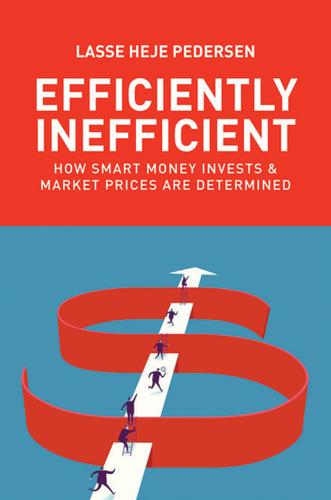
Efficiently Inefficient: How Smart Money Invests and Market Prices Are Determined
by
Lasse Heje Pedersen
Published 12 Apr 2015
Since funds are more likely to start reporting after having experienced good performance, this leads to a “backfill bias”: Funds that have poor performance from the beginning never make it into the database, while better performing funds are more likely to start reporting. Some databases and researchers account for this by only including returns from a certain time period after the hedge funds started reporting, disregarding the biased backfilled data. Another effect is that some hedge funds stop reporting when they experience poor performance, leading to a “survivorship bias.” A bias pulling in the opposite direction arises from the fact that the most successful hedge funds often do not report to the databases. These funds value their privacy and do not need any additional exposure to clients; they may in fact be closed to new investments due to limited capacity.
…
See also specific styles subprime credit crisis, xii; “greatest trade ever” in, 2, 292, 313, 320–22; ripple effects on banks and hedge funds, 145; spreading to other markets, 83, 84f. See also global financial crisis of 2007–2009 subsidiaries. See carve-outs; spin-offs; split-offs supply shocks, 5, 194–96, 195t; as catalyst of trend, 210 survivorship bias, 23 suspending redemptions, 75 swap contracts, margin requirements for, 80 swap rate, 259 swaps. See credit default swaps (CDSs); interest-rate swaps swap spreads, 13, 241, 259–60 swap spread tightener, 259–60 swaptions, 241, 262 systematic global tactical asset allocation funds, 185 systematic macro hedge funds, 185 systematic risk.
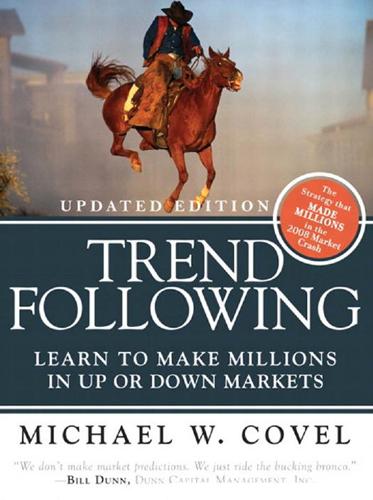
Trend Following: How Great Traders Make Millions in Up or Down Markets
by
Michael W. Covel
Published 19 Mar 2007
• When and how will a stock be sold? 307 A 308 Trend Following (Updated Edition): Learn to Make Millions in Up or Down Markets Data Integrity Data Coverage The database used included 24,000+ individual securities from the NYSE, AMEX, and NASDAQ exchanges. Coverage spanned from January 1983 to December 2004. Survivorship Bias The database used for this project included historical data for all stocks that were delisted at some point between 1983 and 2004. Slightly more than half of the database is composed of delisted stocks. Corporate Actions All stock prices were proportionately back adjusted for corporate actions, including cash dividends, splits, mergers, spinoffs, stock dividends, reverse splits, and so on.
…
Delisted Stocks, Symbol Overlap, and Unique Identifiers In our experience, a very common mistake made in testing stock trading strategies is the failure to understand and deal with the reality that actively traded securities existed for companies that have since gone out of business or have been acquired by other companies. These securities will not show up in most databases. Only the securities of “surviving” companies will show up in the typical database or charting service. To account for this survivorship bias, delisted companies were included in our universe. Because current companies sometimes use ticker symbols that were previously used by former (since delisted) companies, a unique serial number was necessary to identify each stock. At the time of this writing, the entire database showed 24,057 individual securities.
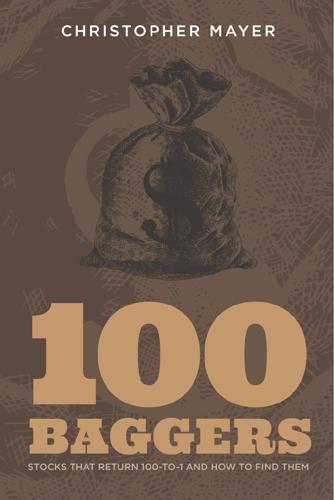
100 Baggers: Stocks That Return 100-To-1 and How to Find Them
by
Christopher W Mayer
Published 21 May 2018
This would be the main population of stocks I poked and prodded in the six months after we created the database. I want to say a few words about what I set out to do—and what I don’t want to do. There are severe limitations or problems with a study like this. For one thing, I’m only looking at these extreme successes. There is hindsight bias, in that things can look obvious now. And there is survivorship bias, in that other companies may have looked similar at one point but failed to deliver a hundredfold gain. I am aware of these issues and others. They are hard to correct. I had a statistician, a newsletter reader, kindly offer to help. I shared the 100-bagger data with him. He was aghast. He related his concerns using a little story.

More Money Than God: Hedge Funds and the Making of a New Elite
by
Sebastian Mallaby
Published 9 Jun 2010
The best evidence comes in the form of a paper by Roger Ibbotson of the Yale School of Management, Peng Chen of Ibbotson Associates, and Kevin Zhu of the Hong Kong Polytechnic University.8 The authors start with performance statistics for 8,400 hedge funds between January 1995 and December 2009. Then they correct for “survivorship bias”: If you just measure the funds that exist at the end of the period, you exclude ones that blew up in the meantime—and so overestimate average performance. Next, the authors tackle “backfill bias”: Hedge funds tend to begin reporting results after a year of excellent profits, so including those atypical bonanzas makes hedge funds appear unduly brilliant.
…
Hennessee turned out to have monthly results for half of the thirty-six “Tiger cub” funds run by managers who had worked for Robertson at some point before 2000. (Tiger cubs are separate from “Tiger seeds,” which are funds that have received capital from Robertson since 2000.) The Hennessee data included two funds that blew up, so it was not subject to the “survivorship bias” that bedevils hedge-fund performance statistics. And because Tiger cubs tend to invest in equities rather than in less liquid loans or derivatives that are not traded on an exchange, their results are likely to be adjusted to reflect price moves promptly and cleanly. Every up and down wiggle is captured, minimizing the “smoothing bias” that occurs when hedge funds mark their portfolios to market infrequently.
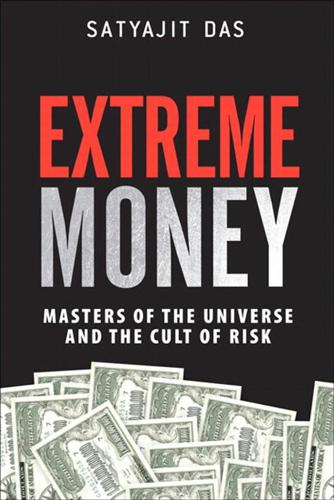
Extreme Money: Masters of the Universe and the Cult of Risk
by
Satyajit Das
Published 14 Oct 2011
The fund’s highest percentage returns were on a small dollar base. The losses came from a larger base (a 50 percent loss on $22 billion is a loss of $11 billion). Tiger may have lost more dollars than it made over its life.13 Historical returns exclude funds that fail or no longer accept new investment—survivorship bias. Only funds with a successful track record report performance—backfill bias. The difference between the best and worst performing funds is large. For investors seeking alpha, high average returns are meaningless, like a comfortable average ambient temperature where your feet are in the oven and your head is in the refrigerator.
…
See also Erin Burnett stress cardiomyopathy, 177 strike prices, 120, 209 strip mining, 156 structures bids, 192 credit, 188 finance, 188 style drift, 242 subjective truths, 130 subordinated (“sub” or “junior”) debt, 148 subordination levels, 172 subprime mortgages, 70. See also mortgages shorting (2005/2006), 256 subsidies, 334, 348 Suma Oriental, 82 Sumitomo, 227 Summers, Lawrence, 116, 129, 214, 300, 304, 315 Sunday Times, 364 super jumbo loans, 182 Super Return annual industry conference, 162 super senior tranches, 175 supply of assets, 267 survivorship bias, 243 suspension of deep-water drilling, 362 Suze Orman Show, The, 93 Suze Orman’s Financial Freedom, 93 swaps correlation, 255 credit default swaps (CDS), 232, 237 dispersion, 255 Fiat, 222-223 first-to-default (FtD), 220-221 gamma, 255 total return swap (TRS), 209 Swensen, David, 124 Swift, Jonathon, 130 Sydney Airport, 159 synchronous lateral excitation, 273 synthetic securitization, 173, 176 systematic risk, 118 T TAC (target amortization class) bonds, 178 TAF (term auction facility), 340 tail risk, 246 Tainter, Joseph, 349 takeovers (risk arb), 242 Taleb, Nicholas Nassim, 126, 246 Talking Heads, The, 46 taming risk, 120-122 Tang dynasty, 351 tansu savings, 39 Tao Jones Averages, The, 96 TARDIS (Time And Relative Dimension(s) In Space) trades, 217-218 target redemption forwards, 217 Tavakoli, Janet, 177 taxes avoidance, 48-49 cuts, 348 Dubai International Financial Centre (DIFC), 82-83 favorable regimes, 41 leveraged buyouts (LBOs), 138 VAT (value added tax), 262 tchotchkes, 162 Teenage Cancer Trust, 262 Teledyn, 60 television, financial news, 91-99 Templars, 32 temporary suspension of deep-water drilling, 362 Terra Firma Capital Partners, 154, 157, 162, 165 terrorism, 44 Texas Instruments (TI), 122 Texas International, 146 Texas Pacific Group, 154 Textron, 60 Thain, John, 291, 319, 330 Thaler, Richard, 126 Thatcher, Margaret, 66, 81, 158 the Government National Mortgage Association (GNMA or Ginnie Mae), 179 theoretical profits, 231 theories, bubbles, 277-278 Theory of the Leisure Class, The, 41 This American Life, 185 Thompson, Todd, 93 Thoreau, Henry David, 359 Thornton, John, 76 Thorp, Edward, 121 thought leaders, 90 thundering herd, the, 66 TICKETs (tradable interest bearing convertible to equity trust securities), 160 Tierney, John, 98 Tiger Fund, 243 Time, 45, 129 Time Warner, 58 Tobias, Seth, 322 TOBs (tender option bonds), 222 toggle loans, 154 toilets, Japanese, 38 Tokyo as a financial center, 78 tools, six sigma, 60 Torii, Mayumi, 43 Toscanini, Arturo, 157 total return swap (TRS), 209 Tourre, Fabrice, 199 toxic currency structures, 218-219 toxic waste, 172 Toynbee, Arnold, 354 Toys R Us, 155 TPG, 156 trade protectionism, 334, 349 trading, 23-24 alleys, 92 banks, 73 proprietary, 352 securities, 66 stabilization of global trade, 349 traditional banking models, 68 tranches, 169 AAA, 203 equity, 192 innovation of, 178 super senior, 175 synthetic CDOs, 174 Z, 170, 178 transfers risk, central banks, 281-282 systems, money, 22 Transformers, 278 Travelers, merger of with Citicorp, 75 Treynor, Jack, 117 trickle-down economics, 42-43 Triffin dilemma, 31 Triffin, Robert, 31 Trollope, Anthony, 173 Troubled Asset Relief Program (TARP), 340 troy ounce bars, 25.
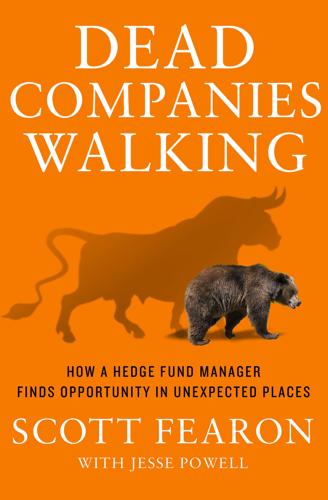
Dead Companies Walking
by
Scott Fearon
Published 10 Nov 2014
They then market the hell out of those newer funds by touting their astounding returns until those funds, too, get too big to keep posting great stats. Then, rinse and repeat—they start the whole cycle again. But what about the new funds that don’t do well? There are plenty of those. And companies have a sure-fire strategy for dealing with them: they shut them down and erase them from their books. It’s called survivorship bias, and it happens all the time. A fund goes south and starts to post poor results, so the bosses step in and—bingo, bango—it goes down the Wall Street rabbit hole, never to be heard from again. They either wipe it out entirely or they merge it into other, better-performing funds. Of course, the investors in that fund don’t get their money back or anything.

Atomic Habits: An Easy & Proven Way to Build Good Habits & Break Bad Ones
by
James Clear
Published 15 Oct 2018
Goals are good for setting a direction, but systems are best for making progress. A handful of problems arise when you spend too much time thinking about your goals and not enough time designing your systems. Problem #1: Winners and losers have the same goals. Goal setting suffers from a serious case of survivorship bias. We concentrate on the people who end up winning—the survivors—and mistakenly assume that ambitious goals led to their success while overlooking all of the people who had the same objective but didn’t succeed. Every Olympian wants to win a gold medal. Every candidate wants to get the job.

What's Wrong With Economics: A Primer for the Perplexed
by
Robert Skidelsky
Published 3 Mar 2020
Slow thinking is logical; fast thinking is intuitive, and frequently irrational. They have found impressive evidence of ‘irrational’ choices – for example, investors’ preference for high-cost actively managed funds which underperform zero-cost index funds. Behavioural economists identify the following ‘systemic’ errors that people make. 1. Survivorship bias We tend to look only at what was successful. Think of a newspaper article that claims it can help you imitate Mark Zuckerberg’s morning routine. The obvious implication is that you too could become a billionaire if you just wore grey t-shirts and ate the right breakfast, but this ignores the multitudes of non-billionaires doing just that. 2.
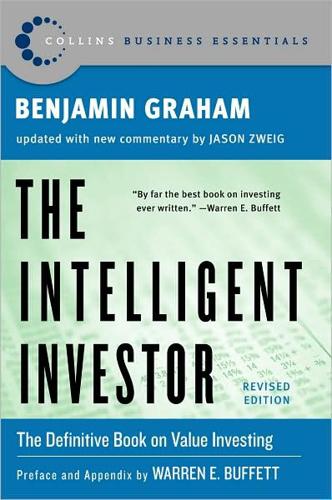
The Intelligent Investor (Collins Business Essentials)
by
Benjamin Graham
and
Jason Zweig
Published 1 Jan 1949
stocks.1 By 1800, however, there were some 300 companies in America (many in the Jeffersonian equivalents of the Internet: wooden turnpikes and canals). Most went bankrupt, and their investors lost their knickers. But the stock indexes ignore all the companies that went bust in those early years, a problem technically known as “survivorship bias.” Thus these indexes wildly overstate the results earned by real-life investors—who lacked the 20/20 hindsight necessary to know exactly which seven stocks to buy. A lonely handful of companies, including Bank of New York and J. P. Morgan Chase, have prospered continuously since the 1790s. But for every such miraculous survivor, there were thousands of financial disasters like the Dismal Swamp Canal Co., the Pennsylvania Cultivation of Vines Co., and the Snickers’s Gap Turn-pike Co.
…
(For more on P/E ratios, see p. 168.) 1 If dividends are not included, stocks fell 47.8% in those two years. 1 By the 1840s, these indexes had widened to include a maximum of seven financial stocks and 27 railroad stocks—still an absurdly unrepresentative sample of the rambunctious young American stock market. 2 See Jason Zweig, “New Cause for Caution on Stocks,” Time, May 6, 2002, p. 71. As Graham hints on p. 65, even the stock indexes between 1871 and the 1920s suffer from survivorship bias, thanks to the hundreds of automobile, aviation, and radio companies that went bust without a trace. These returns, too, are probably overstated by one to two percentage points. 2 Those cheaper stock prices do not mean, of course, that investors’ expectation of a 7% stock return will be realized. 3 See Jeremy Siegel, Stocks for the Long Run (McGraw-Hill, 2002), p. 94, and Robert Arnott and William Bernstein, “The Two Percent Dilution,” working paper, July, 2002
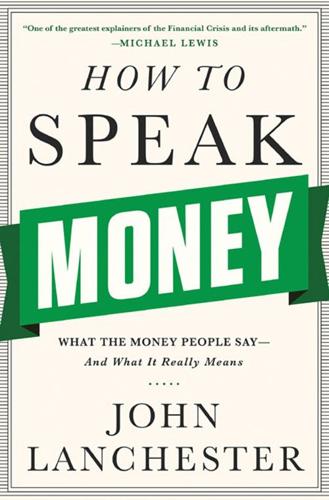
How to Speak Money: What the Money People Say--And What It Really Means
by
John Lanchester
Published 5 Oct 2014
There’s some evidence that family-controlled businesses do better than purely public companies. The reason for that must surely be that they, if well run, have a longer-term focus and steadier nerve than companies chasing a good set of quarterly figures to keep their shareholders happy. There may also be a strong element of “survivorship bias” in the statistics, in that family firms that are less well run will be forced out of the market and/or be bought out by more efficient competitors; so the ones still in business are by definition the successful survivors. Abenomics The name given to the policies of the Japanese prime minister Shinzo Abe, who started his second term in office in 2012.

Skin in the Game: Hidden Asymmetries in Daily Life
by
Nassim Nicholas Taleb
Published 20 Feb 2018
Confusion arises because it may seem that the “one-off” risk is reasonable, but that also means that an additional one is reasonable. (See Figure 9). The good news is that some classes of risk can be deemed to be practically of probability zero: the earth survived trillions of natural variations daily over three billion years, otherwise we would not be here. We can use conditional probability arguments (adjusting for the survivorship bias) to back-out the ruin probability in a system. FIGURE 9. Why ruin is not a renewable resource. No matter how small the probability, in time, something bound to hit the ruin barrier is about guaranteed to hit it. No risk should be considered a “one-off” event. Now, we do not have to take nor is permanent sustainability necessary.
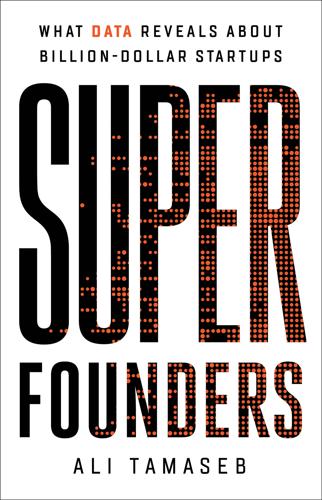
Super Founders: What Data Reveals About Billion-Dollar Startups
by
Ali Tamaseb
Published 14 Sep 2021
I fixed this false discovery rate problem using the Benjamini-Hochberg procedure, which makes sure that only the most significant differences (those that could not happen by chance) between the two groups are reported.1 Even with all my efforts to remain statistically sound, it’s worth noting that this is not an academic study. I could not normalize for every single factor, so pitfalls remain. With a study like this, potential biases always appear in the data itself—for example, survivorship bias (failed companies that don’t appear in any list), omitted variable bias (external metrics we didn’t study that may have had an impact), observer bias (some of the data points rely on my own judgement, which may have been unknowingly biased), incomplete data (for some companies, although not many, I could not find the data point), and faulty data (sometimes history is rewritten by companies, e.g., they identify an executive who joined the company later as one of the founders).

Uncomfortably Off: Why the Top 10% of Earners Should Care About Inequality
by
Marcos González Hernando
and
Gerry Mitchell
Published 23 May 2023
Indeed, the threat of automation seems to be increasingly patent among high income earners, as artificial intelligence software such as ChatGTP threaten to render many professions obsolete.37 Few high earners we spoke with had experienced significant disruptions in their careers. While some had been directly affected by the financial crash, others remembered feeling only its ‘ripples’. Nobody who started an ambitious upward trajectory had to change their career path due to, for example, health or family reasons, though to be sure, there may be a certain ‘survivorship bias’ in our sample, as we considered those who were in the top 10% at the time of being interviewed. Men in their forties or fifties, in particular, described uninterrupted career trajectories; most had stable upbringings, often with their mothers staying at home while their fathers worked. They often seek to replicate that model for their own families.

The Bogleheads' Guide to Investing
by
Taylor Larimore
,
Michael Leboeuf
and
Mel Lindauer
Published 1 Jan 2006
Following are what many of them have to say on the subject of passive vs. active investing: Frank Armstrong, author of The Informed Investor: "Do the right thing: In every asset class where they are available, index!-Four of five funds will fail to meet or beat an appropriate index." Gregory A. Baer and Gary Gensler, authors of The Great Mutual Fund Trap: "With returns corrected for survivorship bias, the average actively managed funds trail the market by about 3 percentage points a year." William Bernstein, Ph.D., M.D., author of The Four Pillars of Investing, frequent guest columnist for Morningstar and often quoted in The Wall Street Journal: "An index fund dooms you to mediocrity? Absolutely not: It virtually guarantees you superior performance."
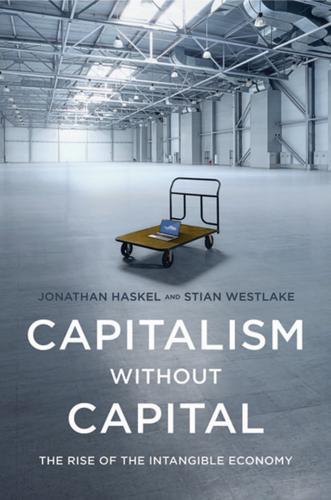
Capitalism Without Capital: The Rise of the Intangible Economy
by
Jonathan Haskel
and
Stian Westlake
Published 7 Nov 2017
This runs the risk that doing too much innovation procurement creates a cover for standard procurement failure. The final question for any government considering using innovation to foster procurement is Clint Eastwood’s: “Do you feel lucky?” It is very hard to know what the real odds of success in innovation procurement are partly because survivorship bias is great (How many failed attempts to use procurement to foster innovation do we simply not know about?), and partly because what made it work is so unclear (To what extent was fostering innovation in semiconductors or data communications good luck? How easy would it be to pick the next winner?).
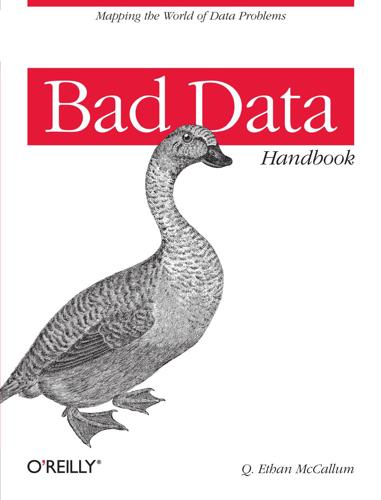
Bad Data Handbook
by
Q. Ethan McCallum
Published 14 Nov 2012
This means that whenever you reload fresh data, some of your identifiers will have changed. More importantly, any company that is no longer traded does not have a current symbol. In most current datasets, if you look up “S” you get Sprint; if you look up “Sears” you get SHLD; and if you look up Kmart, you get nothing. This causes a major “survivorship bias” in data: the stock market looks much more profitable if you never look at companies that have gone bankrupt or been bought out. There are universal unique identifiers with acronyms such as CUSIP, ISIN, and SEDOL. But these are proprietary and often not available. They also only solve half the problem: they do not get recycled the way ticker symbols do, but they will change over time as minor changes happen to a stock (e.g., the CUSIP changed when KMRT became SHLD).
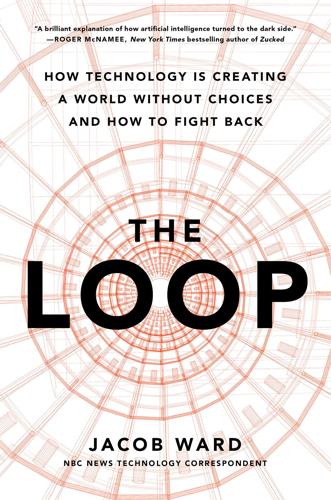
The Loop: How Technology Is Creating a World Without Choices and How to Fight Back
by
Jacob Ward
Published 25 Jan 2022
His findings led to reinforced engine compartments (and presumably the survival of untold numbers of air crews) and transformed American aviation logistics during World War II, the Vietnam War, and the Korean War. Wald is credited with helping to identify something that statisticians now work hard to fight off: survivorship bias, the tendency to optimize our behavior for the future based on what may in fact be the rare instances in which someone or something survives extremely long odds and only as a result comes to our attention. Forecasting probability based on limited data is something statisticians now know not to do, thanks to Wald—data scientists often post his report’s famous diagram of a shot-up plane as an online meme—but Anna Todd is the spear-tip of an industry that forecasts future success by studying survivors.
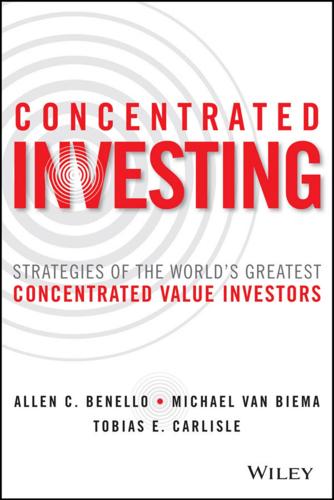
Concentrated Investing
by
Allen C. Benello
Published 7 Dec 2016
That base case index fund allows an investor to obtain a market return very cheaply, so unless an active manager can add value over and above that index, the investor is better off in the index fund. For active managers as a whole, investing is a zero sum game, less fees and transaction costs, so most active managers won’t do as well as the market because they are the market. Academic studies tend to flatter the active managers due to survivorship bias, which means that because the worst drop out, they aren’t counted. How, then, does a manager add value over the market? In Simpson’s opinion, a “closet indexer”—an investor who closely follows index components to achieve returns in line with the index without disclosing that they are doing so—and who varies from the index “a little bit here and there and everywhere” won’t outperform.159 A broadly diversified portfolio will likely underperform the market after taking out fees.

MONEY Master the Game: 7 Simple Steps to Financial Freedom
by
Tony Robbins
Published 18 Nov 2014
And that 4% isn’t the same every year—a more simple way of saying that is that 96% of all mutual funds fail to beat the market. DS: Those statistics are only the tip of the iceberg. The reality is even worse. When you look at past performance, you can only look at the funds in existence today. TR: Survivors. DS: Exactly. Those statistics suffer from survivorship bias. Over the last ten years, hundreds of mutual funds have gone out of business because they performed poorly. Of course, they don’t take the funds with great returns and merge them into funds with lousy returns. They take the funds with lousy returns and merge them into funds with great returns.
…
Rebates, 256 multitasking, 267–69 municipal bonds, 319–20 Munnell, Alicia, 139–40, 308, 427 Murdoch, Rupert, 83 mutual funds, 92–104 account fee, 115 actively managed, 93, 95, 100, 110, 124, 165, 479–80, 502 and annuities, 168, 424–25 associated costs of, 112 average returns, 116–18 bond, 158 cash drag, 115 cost calculator, 111 deferred sales charge, 115 dollar-weighted return on, 118–19 exchange fee, 115 expense ratio, 108, 113 failure to beat the market, 93–94, 96, 101, 106 fees of, 105–15, 119, 121, 141, 180, 273, 278, 479 and 401(k)s, 93, 110, 114, 139, 141, 144 high-cost, 85, 105, 112 index funds, 94 money market funds, 303 no load, 108 offer, 84 options, 163 pay to play, 144, 157 promise of protection in, 98 purchase fee, 115 ratings of, 92, 102–3 redemption fee, 115 retirement accounts in, 93, 110, 114, 141 returns on investment, 116–19, 400 sales charge (load), 115 soft-dollar costs, 114–15 as stacked deck, 88 stock-picking, 119, 180 and survivorship bias, 470 tax costs, 111, 114, 119, 279, 472 as $13 trillion lie, 93, 97 time-weighted returns, 118–19 transaction costs, 114 turnover in, 279–80 Namale Resort and Spa, 207, 341 nanotechnology, 562, 567 Napoléon III, 555 NASA, 557, 561 Nash, Ogden, 65 National Association of Personal Financial Advisors (NAPFA), 132 national debt, 149 natural resources, 556 Necker Island, 208 Nelson, Willie, 52, 61, 341 nest egg, 58, 257 Netflix, 465–66 Nixon, Richard M., 370–71 Nixon rally, 371–72 Norton, Michael, 589, 601 Notes from a Friend (Robbins), 597–98 numbers: off base, 240–41 “real,” 238, 364 Obama, Barack, 208, 560 Oduyoye, Darin, 499–500 O’Higgins, Michael, 398 oil, 506, 509, 510–11, 556–57 online rewards programs, 255–56 OPEC, 506, 511 opportunity, 269 optical illusions, 38–39 organ donation, 39–40 O’Rielly, William, 115 Orman, Suze, 254 Page, Larry, 377 Palm Beach, Florida, 289–90 passion, 573–87 passive investing (indexing), 97 paycheck, automatic deductions from, 64 pay to play, 144, 157 penny wisdom, 63 pensions, 34–35, 409 cash-balance plans, 155, 156 defined benefit plans, 155 do-it-yourself, 86 hidden fees in, 86 in Security/Peace of Mind Bucket, 308 Personal Fund, 111 Personal Power (Robbins), xxvi Peter, Irene, 297 philanthropy, 392, 457, 466, 486, 489, 494, 538, 595–96, 601; see also giving back photography, 269–70 physical mastery, 42 physiology, changing, 196–99 Pickens, T.
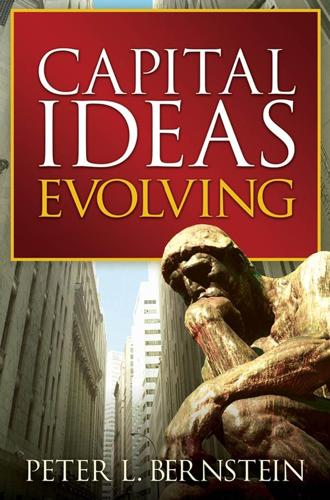
Capital Ideas Evolving
by
Peter L. Bernstein
Published 3 May 2007
First, calculating market-beating performance for hedge funds is not as simple as calculating it for a mutual fund or long-only active portfolio manager. There is no “market” in hedge funds as there is in stocks or bonds. What is it then that these funds are outperforming? They may outperform some arbitrary benchmark such as the Treasury bill return plus percentage points, but the result could be more the outcome of messy data and survivorship bias. bern_c02.qxd 24 3/23/07 8:53 AM THE Page 24 B E H AV I O R A L AT TAC K Second, calculating hedge fund risk is a controversial procedure. Volatility measures employed as risk measurements in conventional investing are not appropriate in a long/short environment. Among other things, hedge fund returns are subject to fat tails or tail risk—higherthan-normal probabilities of extreme negative returns.
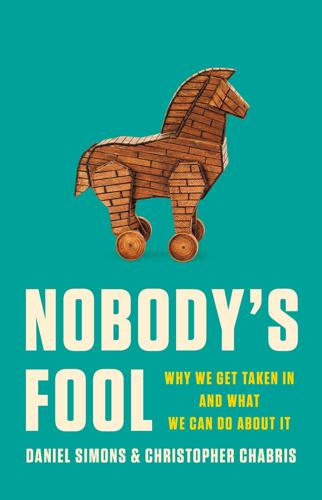
Nobody's Fool: Why We Get Taken in and What We Can Do About It
by
Daniel Simons
and
Christopher Chabris
Published 10 Jul 2023
Presumably, if those undamaged areas were unimportant, you would see damage to them on the planes that returned. And if those areas were crucial to a plane’s survival, planes hit in those areas would be less likely to survive. Wald understood this, of course. His analysis of the B-17s helped lay the groundwork for the concept now known as survivorship bias. We tend to devote more attention to cases that are still around, neglecting those that are not. That bias leads to a systematic misunderstanding of success and failure, one that is especially prevalent in business writing but that plagues many other consequential decisions. You should now be able to see the logical flaw in this statement about coronavirus vaccination by the podcaster Dave Rubin: “I know a lot of people who regret getting the vaccine.

Gnuplot in Action: Understanding Data With Graphs
by
Philipp Janert
Published 2 Jan 2010
The inspiration to this story stems from the book Graphic Discovery by Howard Wainer, Princeton University Press (2005). 301 302 CHAPTER 15 Coda: Understanding data with graphs The not-so-obvious obvious answer is to add the armor in those areas where no bullet holes were found. Why? Because airplanes are subject to hits everywhere, but if the hits strike in the white areas in figure 15.1, the airplane doesn’t come back from its mission. (Statisticians speak of survivorship bias.) Therefore, those are the most vital areas of the machine and should receive the best possible protection. So, let this be our final lesson. Evidence, be it graphical or otherwise, is just that: mere data. But actual insight arises only through the correct interpretation of those facts. appendix A: Obtaining, building, and installing gnuplot The easiest way to install gnuplot on your local computer is to download and install a precompiled package.
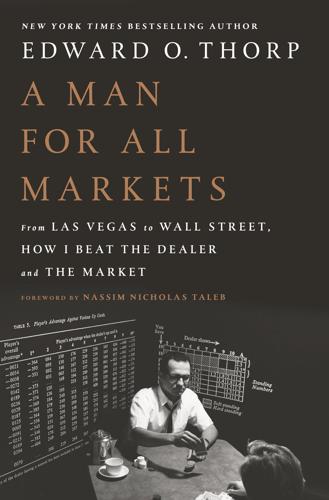
A Man for All Markets
by
Edward O. Thorp
Published 15 Nov 2016
Management fees Incentive fees in 2015 averaged 17.7 percent of any profit, compared to 19.3 percent in 2008, according to The Wall Street Journal, September 10, 2015. Management fees had declined to an average of 1.54 percent. hedge fund returns The studies encountered difficulties obtaining clean long-term data and in correcting for survivorship bias: funds that died early and may not be in the database are expected to have performed more poorly. Omitting them and studying only the survivors overstates the results. Later analyses Dichev, Ilia D. and Yu, Gwen, “Higher risk, lower returns: What hedge fund investors really earn,” Journal of Financial Economics, 100 (2011) 248–63; Lack, Simon, The Hedge Fund Mirage, Wiley, New York, 2012.

Valuation: Measuring and Managing the Value of Companies
by
Tim Koller
,
McKinsey
,
Company Inc.
,
Marc Goedhart
,
David Wessels
,
Barbara Schwimmer
and
Franziska Manoury
Published 16 Aug 2015
Blume’s estimator for longer-date cash flows is slightly higher, at just above 6 percent. Even with the best statistical techniques, however, this number is probably too high, because the observable sample includes only countries with strong historical returns.5 Statisticians refer to this phenomenon as survivorship bias. Zvi Bodie writes, “There were 36 active stock markets in 1900, so why do we only look at two, [the UK and 3 E. Dimson, P. Marsh, and M. Staunton, “The Worldwide Equity Premium: A Smaller Puzzle,” in Hand- book of Investments: Equity Risk Premium, ed. R. Mehra (Amsterdam: Elsevier Science, 2007). 4 D.
…
Lee, “Biases in Arithmetic and Geometric Averages as Estimates of Long-Run Expected Returns and Risk Premia,” Financial Management 26, no. 4 (Winter 1997): 81–90; and M. E. Blume, “Unbiased Estimators of Long-Run Expected Rates of Return,” Journal of the American Statistical Association 69, no. 347 (September 1974): 634–638. 5 S. Brown, W. Goetzmann, and S. Ross, “Survivorship Bias,” Journal of Finance (July 1995): 853–873. 288 ESTIMATING THE COST OF CAPITAL U.S. markets]? I can tell you—because many of the others don’t have a 100-year history, for a variety of reasons.”6 Since it is unlikely that the U.S. stock market will replicate its performance over the next century, we adjust downward the historical market risk premium.

In Pursuit of the Perfect Portfolio: The Stories, Voices, and Key Insights of the Pioneers Who Shaped the Way We Invest
by
Andrew W. Lo
and
Stephen R. Foerster
Published 16 Aug 2021
Several years later, Siegel returned to investigating the equity premium with the future Nobel laureate Richard Thaler.27 They investigated the empirical results of previous studies that tried to explain the equity premium (including Siegel’s 1992 articles) and commented on the extent to which those papers solved the puzzle. Siegel’s earlier article suggested that a longer time period was warranted when calculating the equity premium. Other studies suggested that there was a survivorship bias in the data: by focusing on a single market (the United States) with a growing economy and a vibrant stock market over the centuries, the data overlooked the rational worries of investors who thought there may be a small chance of an economic catastrophe. Siegel and Thaler also examined several theoretical explanations to solve the equity premium puzzle, including different models about the levels of risk aversion found among investors to account for their behavioral biases, that explain much but not all of the puzzle.

A Generation of Sociopaths: How the Baby Boomers Betrayed America
by
Bruce Cannon Gibney
Published 7 Mar 2017
The raw S&P 500 P/E ratio was 11.7 in Q4 1988, 18.1 in Q4 1995, 30.5 in Q4 1999, and was around 23–25 in the first half of 2016. The story, in other words, is the same. The case could be made that things are somewhat better or somewhat worse—somewhat better because models digest interest rates, and interest rates are low, “justifying” higher valuations; somewhat worse, because of survivorship bias, the rise of ultra-high P/E ratios in private equity (if there’s any “E” at all), etc. My view is that things are probably somewhat worse. 33. Holland, A. Steven. “Real Interest Rates: What Accounts for Their Rise?” Federal Reserve Bank of St. Louis, Dec. 1984, pp. 1–3 (online pagination), research.stlouisfed.org/publications/review/84/12/Rates_Dec1984.pdf.

Adaptive Markets: Financial Evolution at the Speed of Thought
by
Andrew W. Lo
Published 3 Apr 2017
After looking at them, we would sometimes be able to say something like, ‘Your strategy was probably some variant of the following, and this is the financial database you probably used; your simulated profits in this month, this month, and this month are attributable to errors in that database, and your overall returns are artificially high because of the following type of survivorship bias,’ and so on.” You might be skeptical that a single private firm, no matter how talented its research staff, could advance so far ahead of the rest of the world. However, there’s a compelling analogy—not from the world of biology, but from the world of cryptography. In the early 1970s, a team at IBM created the Data Encryption Standard (DES) algorithm to protect sensitive government data.
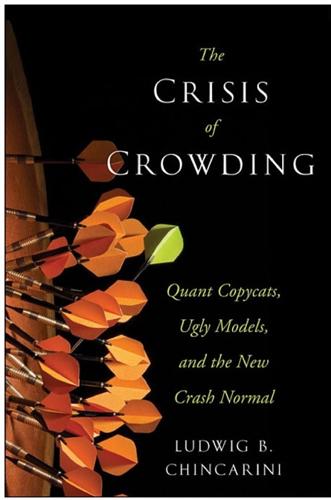
The Crisis of Crowding: Quant Copycats, Ugly Models, and the New Crash Normal
by
Ludwig B. Chincarini
Published 29 Jul 2012
The Sortino is a risk-adjusted performance measure that adjusts the standard deviation for nonnormal returns. 8. The HFR Relative Value hedge fund index is equal weighted, not asset weighted, and may not be entirely investable. It has the benefit of diversification across many hedge funds. Some academics think this database has more survivorship bias than do other databases. 9. Statement made on April 30, 2008, while giving a guest lecture in Claremont, California. 10. Five is nearly the square root of 24, multiplied by the biweekly standard deviation to obtain the annualized standard deviation. A few years after PGAM was launched, it changed this to the expected 0.5% tail gain or loss using a bootstrap.

The Power Law: Venture Capital and the Making of the New Future
by
Sebastian Mallaby
Published 1 Feb 2022
“You plant a seed, it needs some water, but if you just pour a whole fucking bucket of water on it’s going to kill it,” Fried said bluntly.[29] Noting the multitude of VC-backed companies that fail, the entrepreneur Tim O’Reilly offers a provocative idea. “Blitzscaling isn’t really a recipe for success but rather survivorship bias masquerading as a strategy.”[30] Yet the O’Reilly critique is less an indictment of VCs than a warning to founders. If the objective of entrepreneurship is personal autonomy, founders must understand that venture capital comes with conditions. If entrepreneurs want to grow their companies at a measured pace, venture capital may well create unwanted pressures.
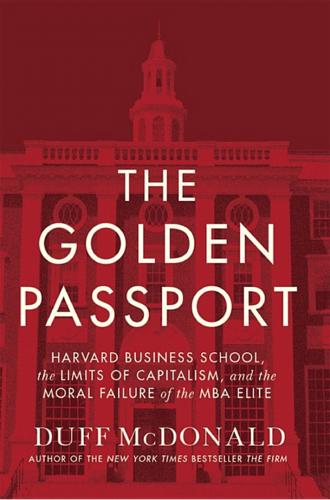
The Golden Passport: Harvard Business School, the Limits of Capitalism, and the Moral Failure of the MBA Elite
by
Duff McDonald
Published 24 Apr 2017
That’s the thing about HBS—tens of thousands of people have graduated from the School over the years, and while they naturally choose to emphasize the success stories while downplaying the less than successful ones, the image of the School as a preeminent training ground for the supersuccessful is unquestionably the result of a kind of survivorship bias. If your company—or your career—has stalled out, they simply stop talking about it. Consider the winner of the Student Business portion of the School’s 2014 New Venture Competition. The victor, an online butler called Alfred, could serve as a Saturday Night Live parody of a startup. Unlike the engineering-driven ideas you’re likely to see coming out of the likes of Stanford or MIT, Alfred is simply high-concept marketing, a virtual butler for people too busy to make their own bed.
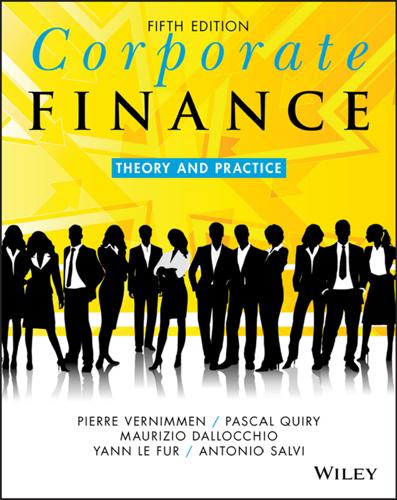
Corporate Finance: Theory and Practice
by
Pierre Vernimmen
,
Pascal Quiry
,
Maurizio Dallocchio
,
Yann le Fur
and
Antonio Salvi
Published 16 Oct 2017
Mehra, Handbook of the Equity Risk Premium, Elsevier Science, 2007. J. Siegel, Stock for the Long Run, 4th edn, McGraw-Hill, 2007. On risk premiums: R. Arnott, P. Bernstein, What risk premium is “normal”?, Financial Analysts Journal, 58(2), 64–85, March–April 2002. S. Brown, W. Goetzmann, S. Ross, Survivorship bias, Journal of Finance, 50(3), 853–873, July 1995. J. Claus, J. Thomas, Equity premia as low as three percent? Evidence from analysts’ earnings forecasts for domestic and international stock markets, Journal of Finance, 56(5), 1629–1666, October 2001. A. Damodoran, Estimating risk-free rate, www.damodoran.com.

Finding Alphas: A Quantitative Approach to Building Trading Strategies
by
Igor Tulchinsky
Published 30 Sep 2019
In this case, the data is not usable for an alpha because there is no way to get more data in real time. Another possible problem is survival bias. Even if a data vendor provides an alpha model that performs well when it is tested, this does not mean the model will perform well in the future. That is because we do not know how many models the vendor developed before this single model was selected. If the vendor tried 1,000 models and only one survived, we may face survival bias. The bias is introduced by the vendor and out of our control. In this case, some out-of-sample testing period for the dataset might be useful.
…
Even if one wants to investigate a sample manually, the alpha expression can be very complicated and without obvious financial significance. Moreover, the sheer number of trials means that it is common for combinations that make no mathematical and economic sense to be erroneously recognized as alphas through survival bias. A good search process should reject such noise from the output or – better – should prevent it from happening in the first place. Last, the impossibility of inspecting every single alpha reduces the researcher’s confidence in each alpha compared with his confidence in alphas made by hand. Therefore, new kinds of testing are required for an automated search to maintain the quality of the alphas.
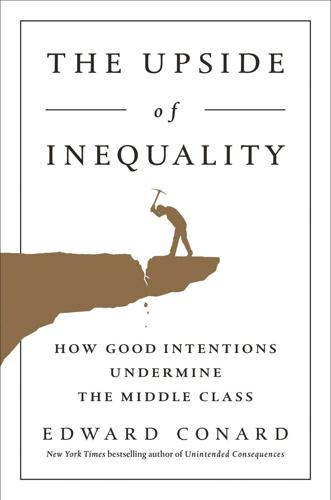
The Upside of Inequality
by
Edward Conard
Published 1 Sep 2016
Even if the winners’ advantages prove to be sustainable, it is hardly obvious that the return on investment before the fact—the relevant measure of profitability—is truly high. Numerous Internet investments are hit-driven businesses where only a handful of start-ups succeed from an enormous sea of failures. Survival bias washes away the true cost of investment that creates success—the cost of the many failures needed to produce a handful of fortunate successes. A study by the Kauffman Foundation, for example, found, “[Venture capital] returns haven’t significantly outperformed the public market since the late 1990s . . . despite occasional high-profile successes.”38 And those were the start-ups funded by large high-profile venture funds—the funds with access to the most promising investments.
…
For a variety of reasons, the apparent increase in corporate profits seems unlikely to stem from a permanent decline in competitiveness due to a rise in oligopolistic pricing power, monopsony, or asymmetrical information. In fact, there is little reason to believe competitiveness has permanently declined but for rising profitability. The long-term rise in profitability seems confined to the IT-related sector, where survival bias hides the true return on investment and disruptive turmoil, near-zero incremental costs, and free products indicate fierce competition and anything but business as usual. Moreover, the long-term rise in profitability is likely overstated by a temporary rise in profitability in the aftermath of the financial crisis.
…
See status socioeconomic segregation, 157, 167–68 Solon, Gary, 178 solutions, 243–66 balanced trade and strengthening bank guarantees, 254–59 lowering marginal corporate tax rate, 249–54 middle-class tax cut slowing growth, 259–64 ultra-high-skilled immigration, 244–49 South Korea incentives, 67 test scores, 219 Spain government investment, 147 productivity growth, 23 Sparber, Chad, 237 status, 69–70, 71, 80–81, 82 keep up with the Joneses, 168–69 loss driving irrational risk-taking, 32–34 STEM majors, 245–46 Stiglitz, Joseph, 31, 83n, 92–93, 95–96, 186 stock buy backs, 53, 251–52 student loan debt, 173–74 subprime-mortgage lending, 1, 49, 53–54, 132–34, 136, 168–69, 256, 258 success-is-unearned myth, 87–113 business profitability and competition, 95–106 CEO pay as motivation for risk-taking, 92–95 efforts by investors to influence economic policy accelerate growth, 106–8 income redistribution and, 87–88, 96–98, 103, 113 raising wages by fiat, 108–13 top 0.1 percent earning of pay, 88–92 Sullivan, James, 46–47, 165 Summers, Larry, 49, 95–98, 106, 115–16, 118–19, 142, 153, 156, 172, 186, 233, 250n Sumner, Scott, 200 supervisory capacity, 210–13, 244 supply and demand, 49, 59, 117–20 survival bias, 101, 106 Svejnar, Jan, 83 Swift, Taylor, 16 talent, 14–15, 91, 195–96, 199–200, 215 properly trained, 13, 18, 38, 39, 43, 50–51, 59, 81, 91–92, 110, 140–41, 186, 215, 236, 240, 254 shortage of, 13, 51–52, 87, 91–92 tax credits, 107, 107 tax inversions, 251, 253 tax policy, 2, 3, 72–73, 77, 198 lowering marginal corporate tax rate, 249–54 middle-class tax cut slowing growth, 259–64 tax rates, 3, 14, 72–73, 106–7 tax repatriation, 251–52 teacher quality, 218, 226–28, 240 teachers’ unions, 217, 227–28 teacher tenure, 227–28 technology, 29–30, 100 benefiting most productive workers, 17–18 reducing need for capital, 12, 13, 18–19 value of manufacturing companies vs., 128, 128–29 technology-hollows-out-the-middle-class myth, 155–75 accessibility of college credentials, 169–74 income distribution, 157–66 marriage value and growing success of women, 166–69 test scores, 11, 217–18, 239–41 charter schools, 223–24 international vs.
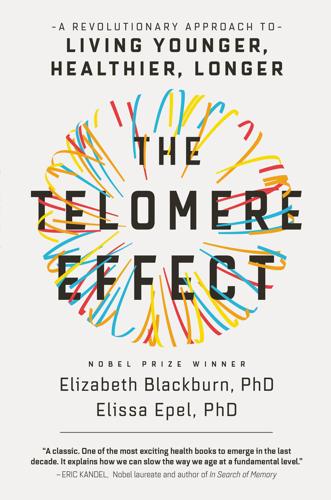
The Telomere Effect: A Revolutionary Approach to Living Younger, Healthier, Longer
by
Dr. Elizabeth Blackburn
and
Dr. Elissa Epel
Published 3 Jan 2017
This trend is probably not true lengthening happening; it just looks that way because the folks with shorter telomeres have passed away by this age (which is called survival bias—in any aging study, the oldest people are the healthy survivors). It’s the people with longer telomeres who are living into their eighties and nineties. Figure 9: Telomeres Shorten with Age. Telomere length declines with age, on average. It declines fastest during early childhood and then has a slower average rate of decline with age. Interestingly, many studies find telomere length is not shorter in those who live to be a lot older than seventy years. This is thought to be due to “survival bias,” meaning that those still alive at this age tended to have been those people with longer telomeres.

Willful: How We Choose What We Do
by
Richard Robb
Published 12 Nov 2019
The subjects ended up selecting strategies that kept them alive in the game but lowered their expected payout. The author interprets this as evidence that a “deeply ingrained (and usually reliable) heuristic towards survival leads subjects to associate survival with optimality.” On this basis, he speculates that real-world managers conduct business too conservatively if they suffer from “survival bias.”15 Maybe. But I can imagine myself behaving like the experimental subjects, particularly since they couldn’t leave the lab early and the amount of money at stake was only a few dollars. Watching after I’d been eliminated would be boring, so I’d forgo a payout to stay in the game. In Life of Alexander, Plutarch describes Alexander the Great grappling with this conundrum: Whenever he heard Philip [II of Macedon] had taken any town of importance, or won any signal victory, instead of rejoicing at it altogether, he would tell his companions that his father would anticipate everything, and leave him and them no opportunities of performing great and illustrious actions.
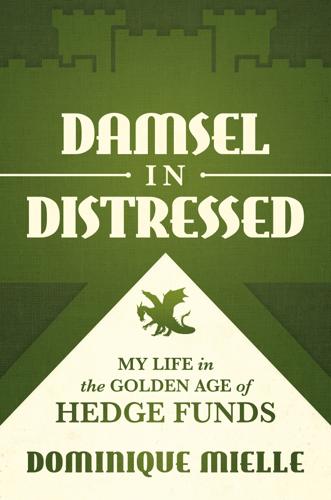
Damsel in Distressed: My Life in the Golden Age of Hedge Funds
by
Dominique Mielle
Published 6 Sep 2021
Not to be fastidiously historical, but from 1998 to 2008, hedge funds beat the S&P in seven out of eleven years, according to the Callan Institute periodic return tables. After 2008, they beat the index…once (in 2018, by 1.1 percent). Yes, for ten out of the past eleven years, the S&P has outperformed hedge funds, not by a little, but by a whopping 9.4 percent. And I suspect that the poor showing of the hedge fund index is understated because it likely has a survival bias—meaning that the worst-performing hedge funds go out of business and are not counted in ensuing years. The studies also agree. A 2018 paper by researchers at Loyola Marymount and Purdue universities (“Size, Age, and the Performance Life Cycle of Hedge Funds”) states, “Our results suggest that fund growth over time drives performance declines over a hedge fund’s life cycle and that performance persistence is more achievable when funds stay small.”
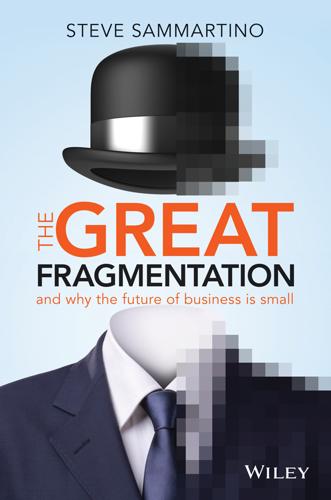
The Great Fragmentation: And Why the Future of All Business Is Small
by
Steve Sammartino
Published 25 Jun 2014
With each iteration of human communication tools there’s resistance, just as there’s resistance to any emerging and scary technology. But when the usefulness is greater than the fear, its eventual uptake is inevitable. Regardless of what caused the evolution of language (there are currently a number of competing theories of how language arrived), it’s clear that those who mastered its use built themselves an evolutionary survival bias. The ability to master language has been the ‘killer app’ when it comes to hunting, farming, defending and all forms of civilisation development. Even today the mastery of a language — whether it’s one of a populous, the language of an industry or a particular computer code — usually comes with social and economic benefits.
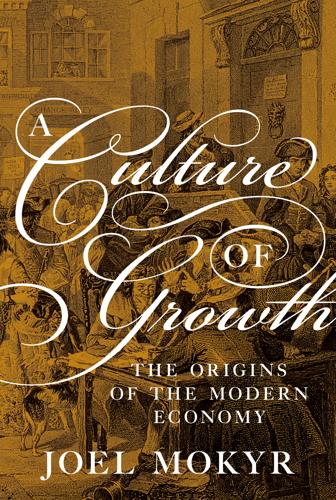
A Culture of Growth: The Origins of the Modern Economy
by
Joel Mokyr
Published 8 Jan 2016
In fact, as we shall see in chapters 16 and 17, this was indeed the case in China. To understand why they were more successful in Europe, we need to identify those elements in the Occidental environment that facilitated this success. Cultural entrepreneurs, no less than business entrepreneurs, fail more often than they succeed, but survival bias tends to focus attention on the successful ones. For every Luther and Calvin there were many failed religious innovators, about whom we rarely know much. The most famous, to be sure, was the Bohemian reformer Jan Hus, who was executed in 1415 and his movement suppressed. Other failed cultural innovators included Miguel Servetus (executed in Geneva in 1553) and Jan of Leyden (executed in Munster in 1536).23 To see what set Europe apart, it is useful to ask about the circumstances under which the cultural entrepreneurs of the era operated.